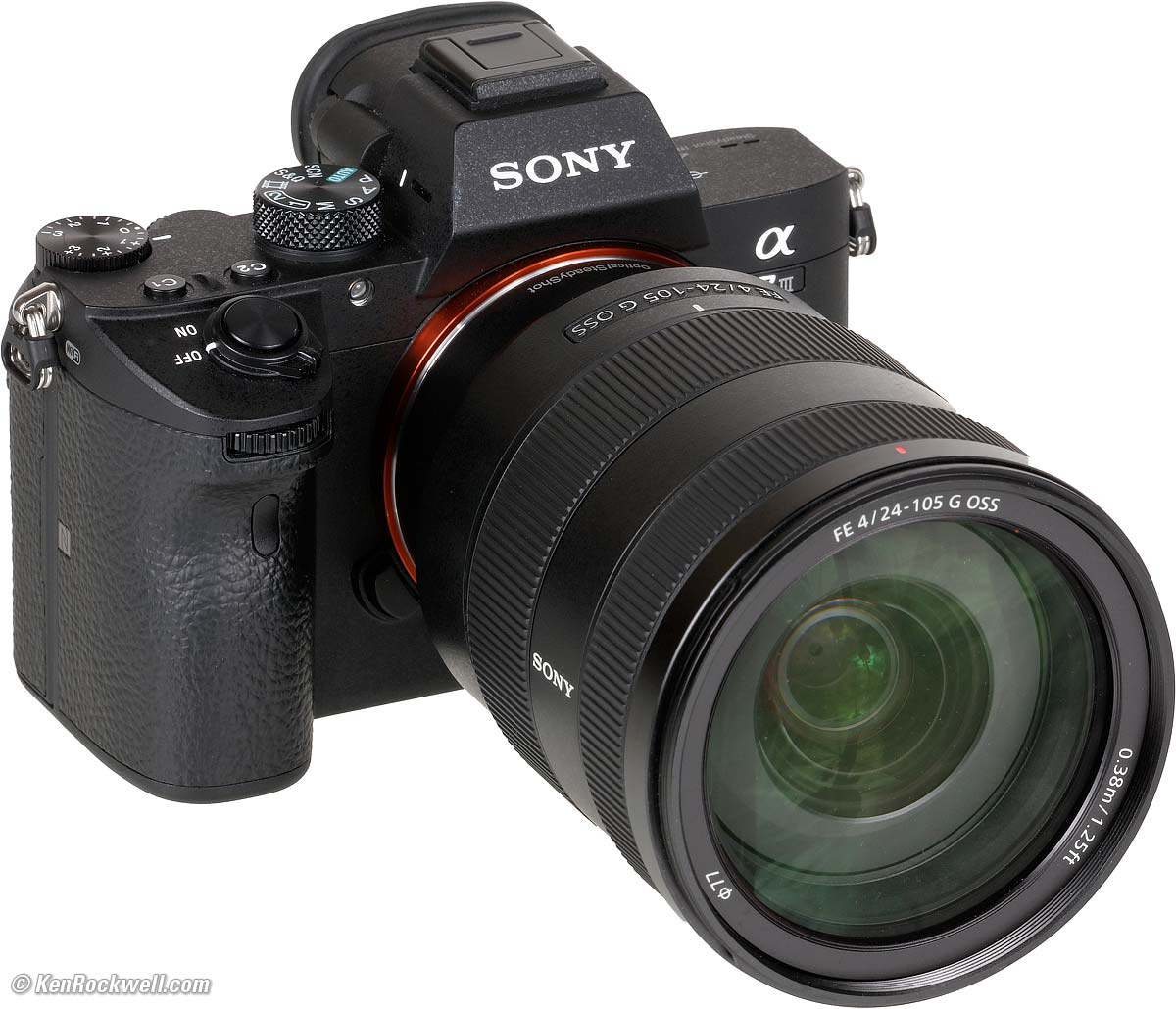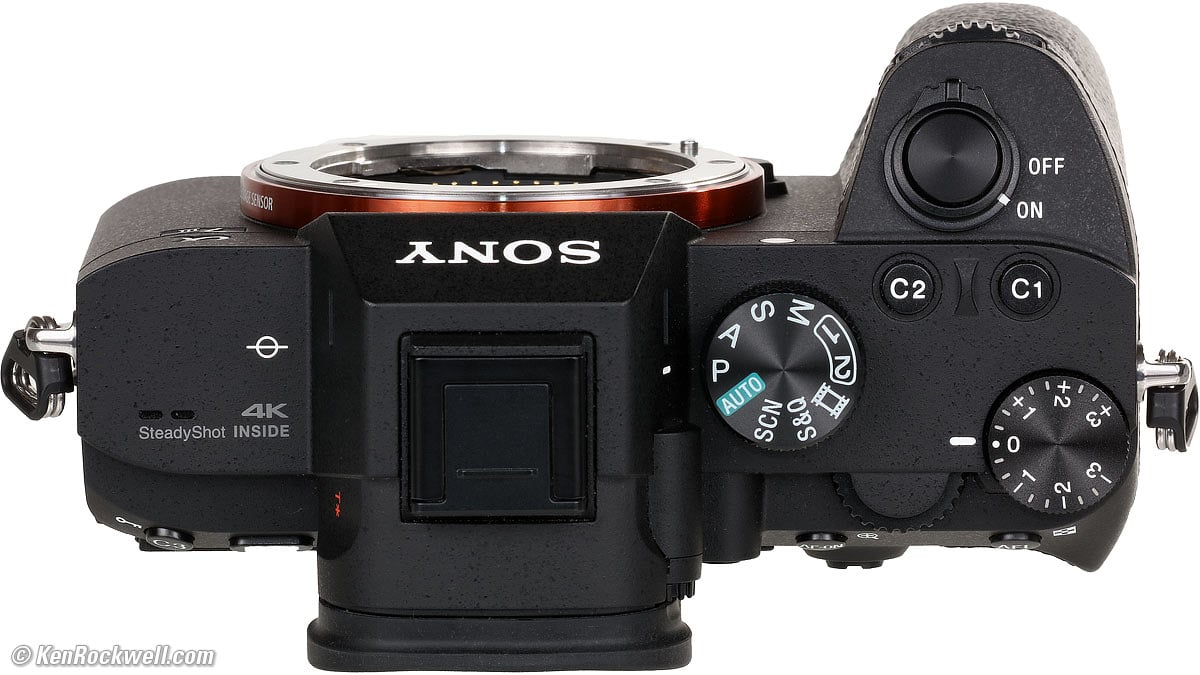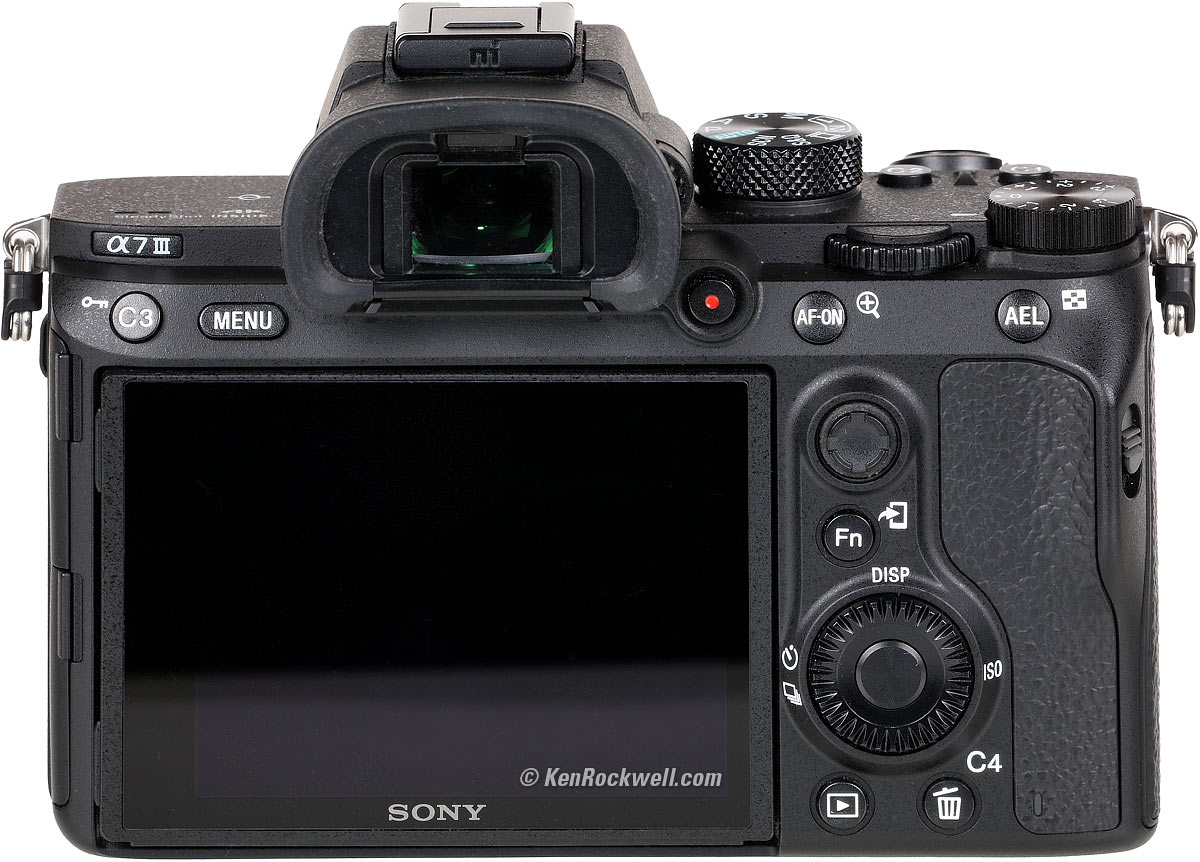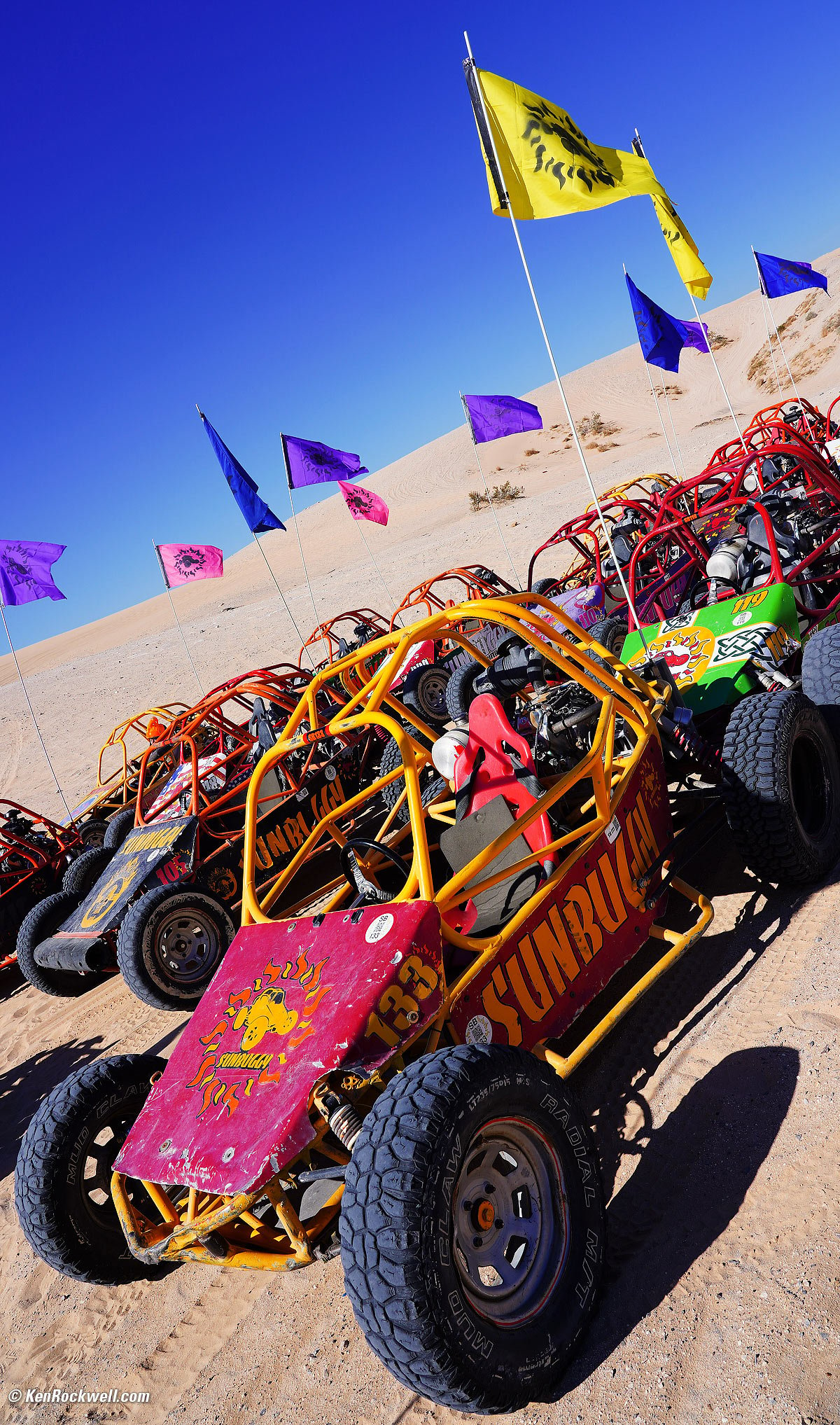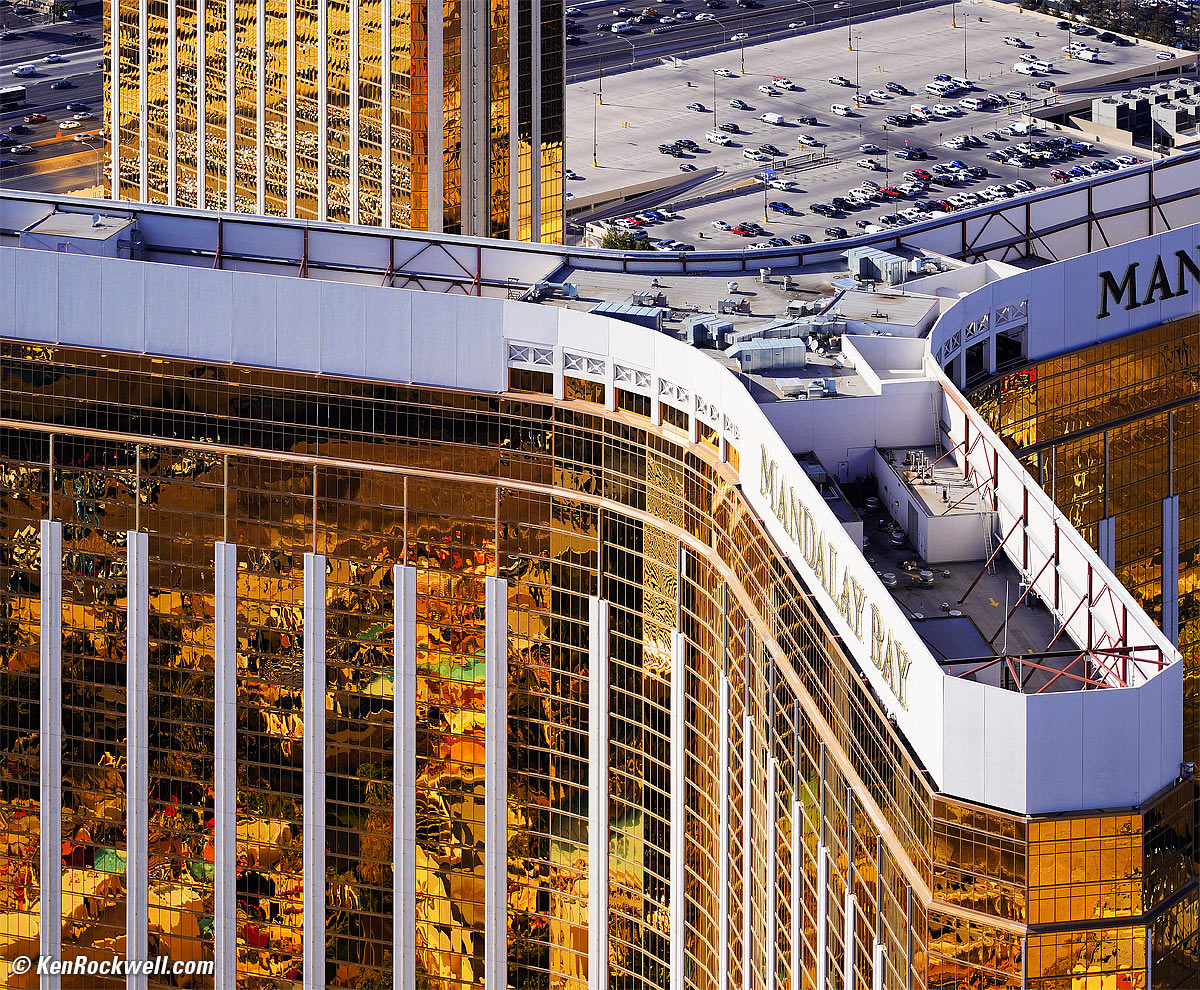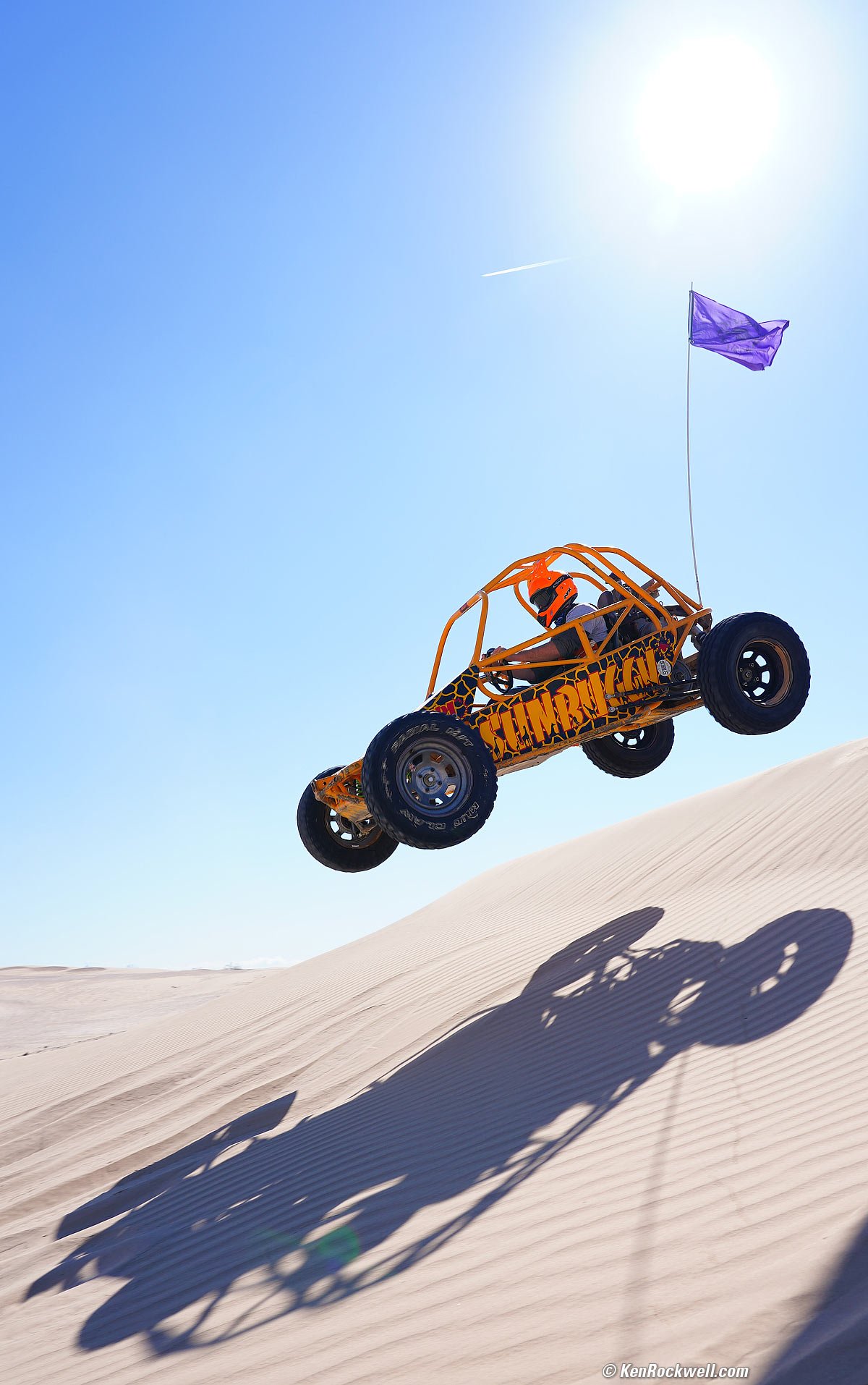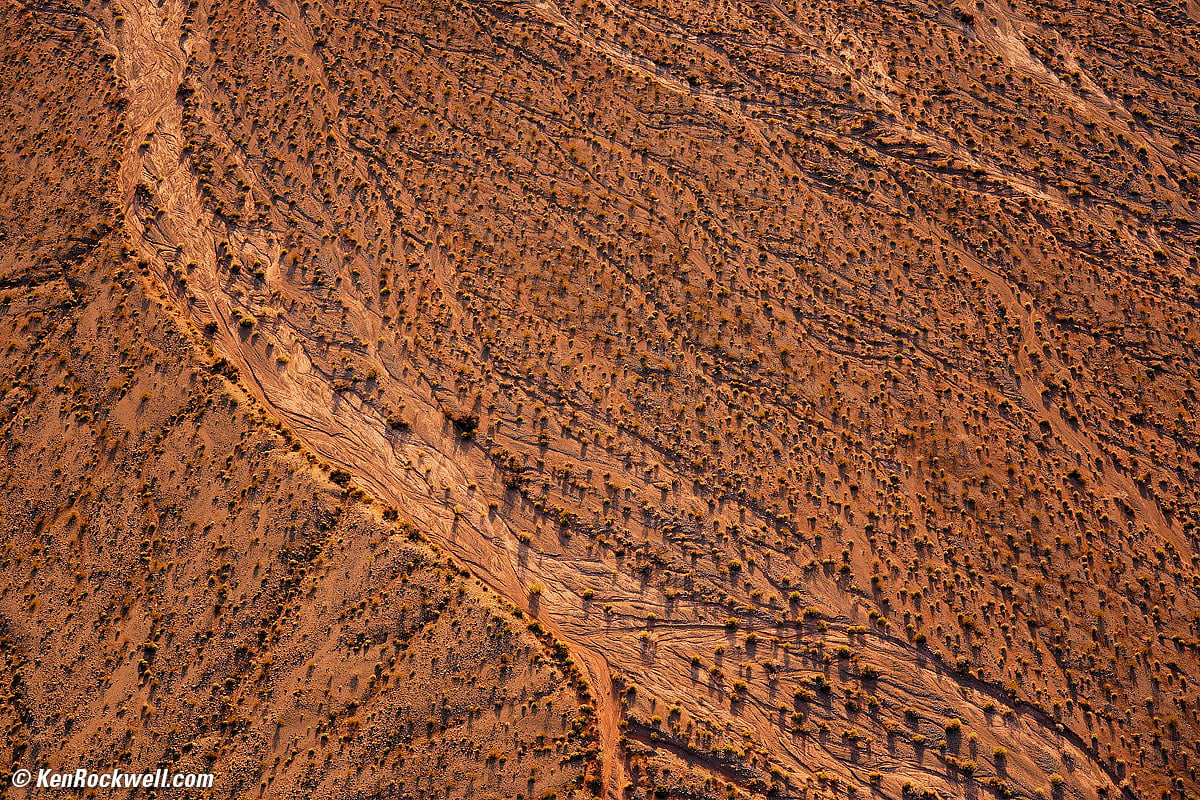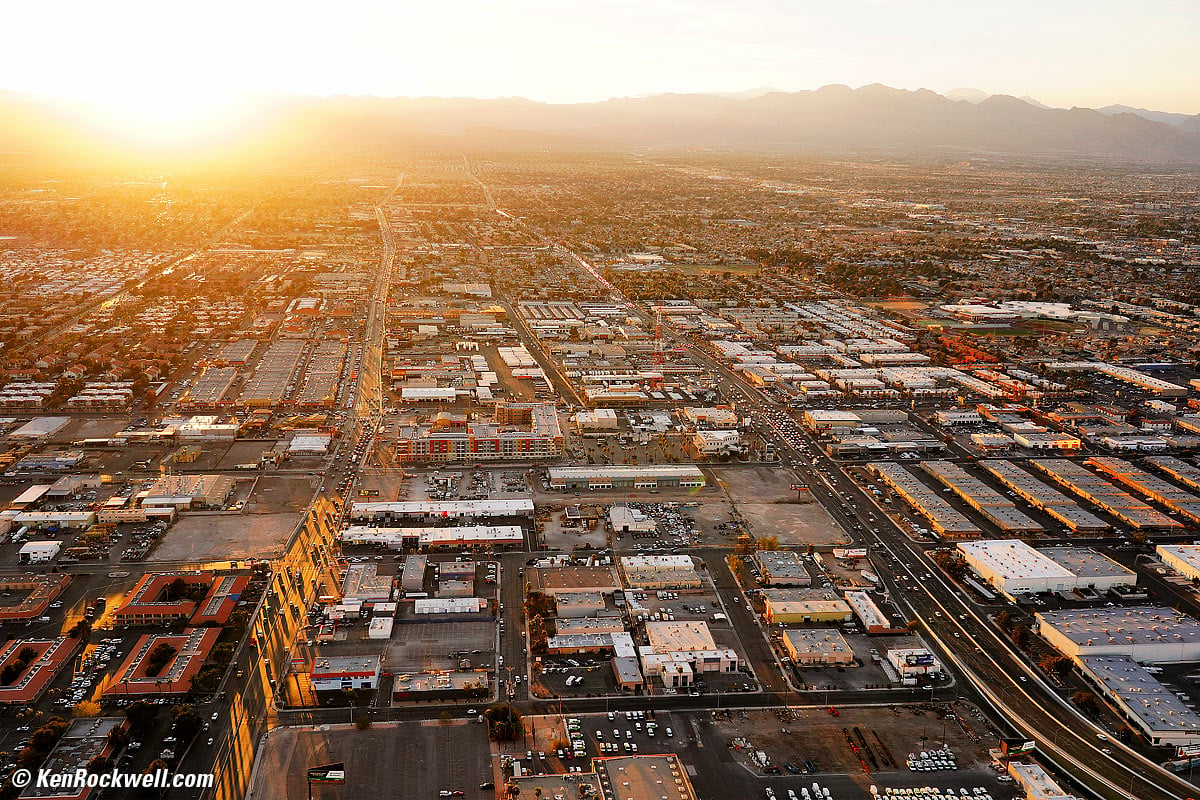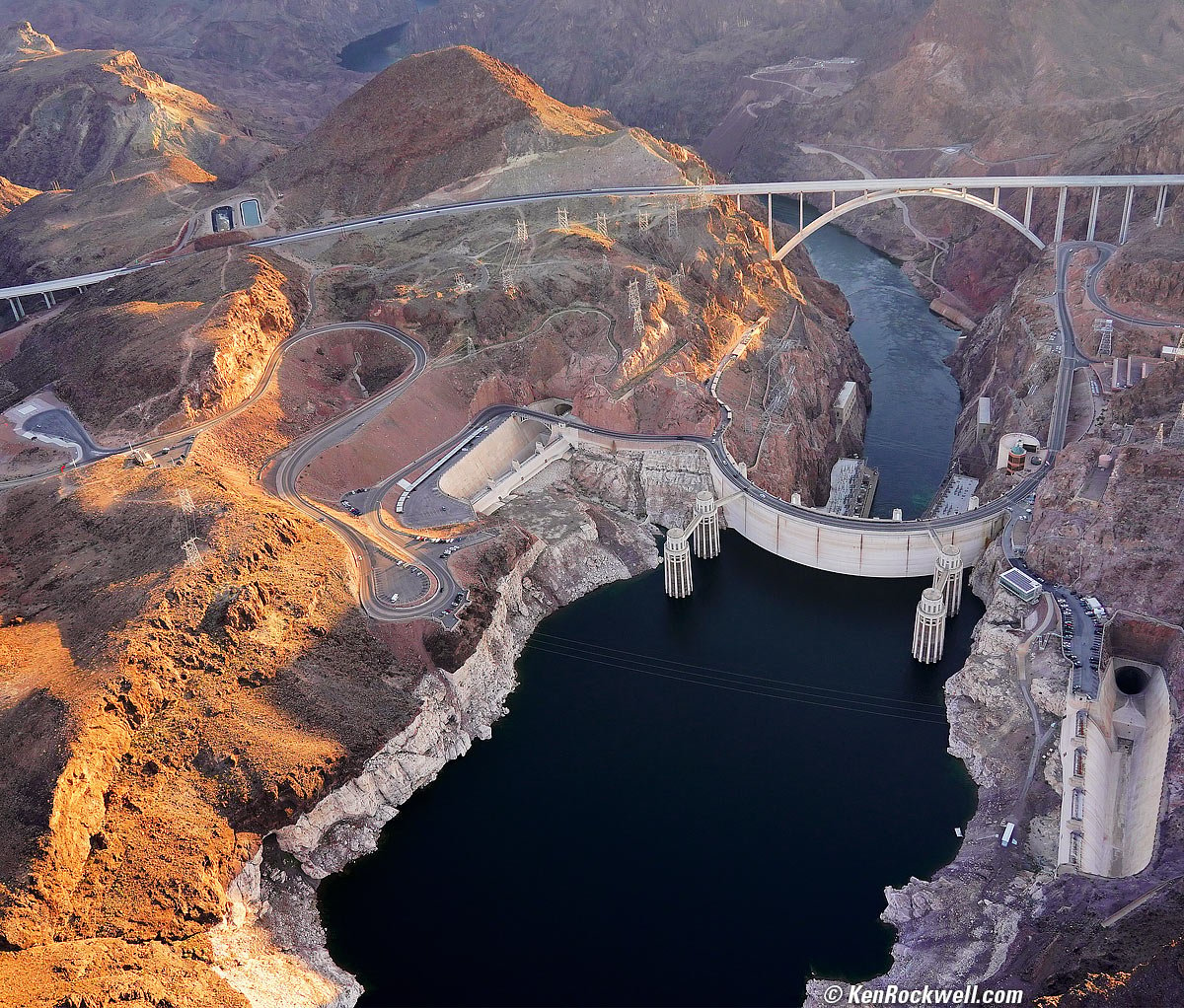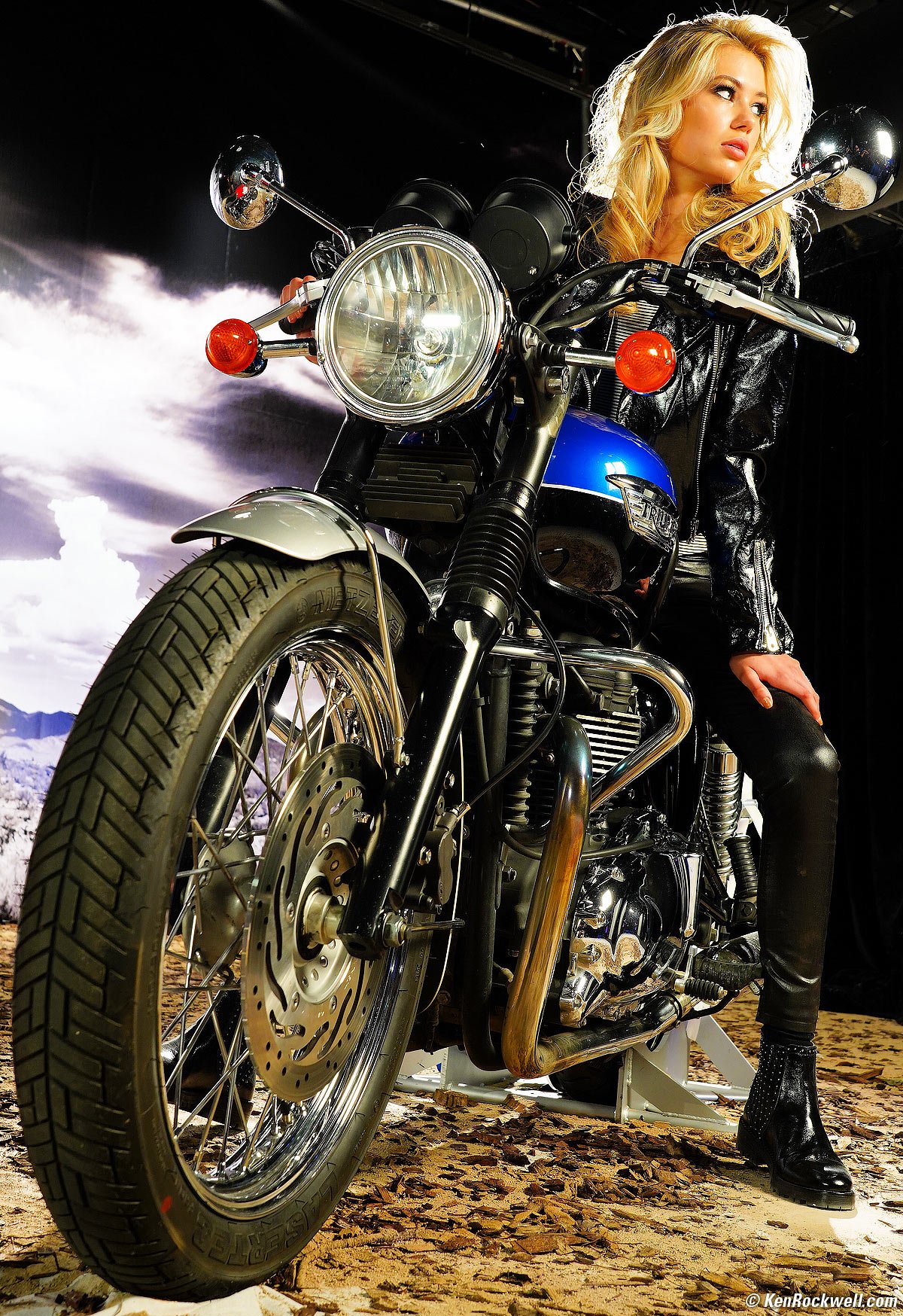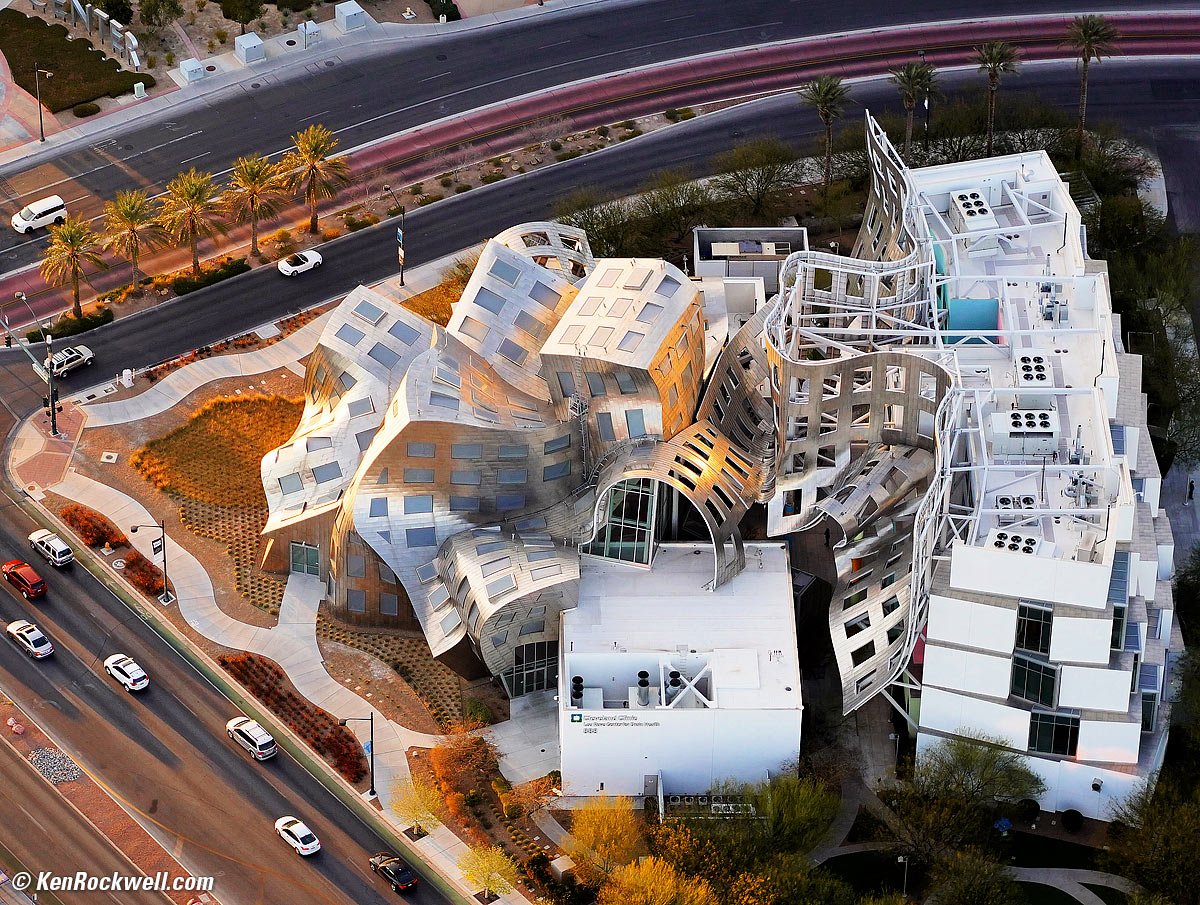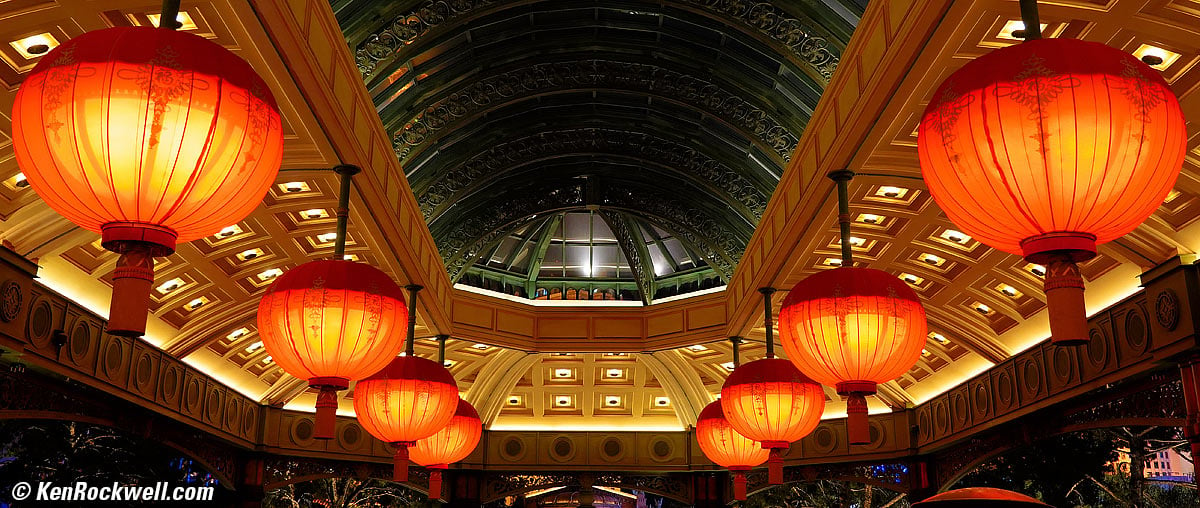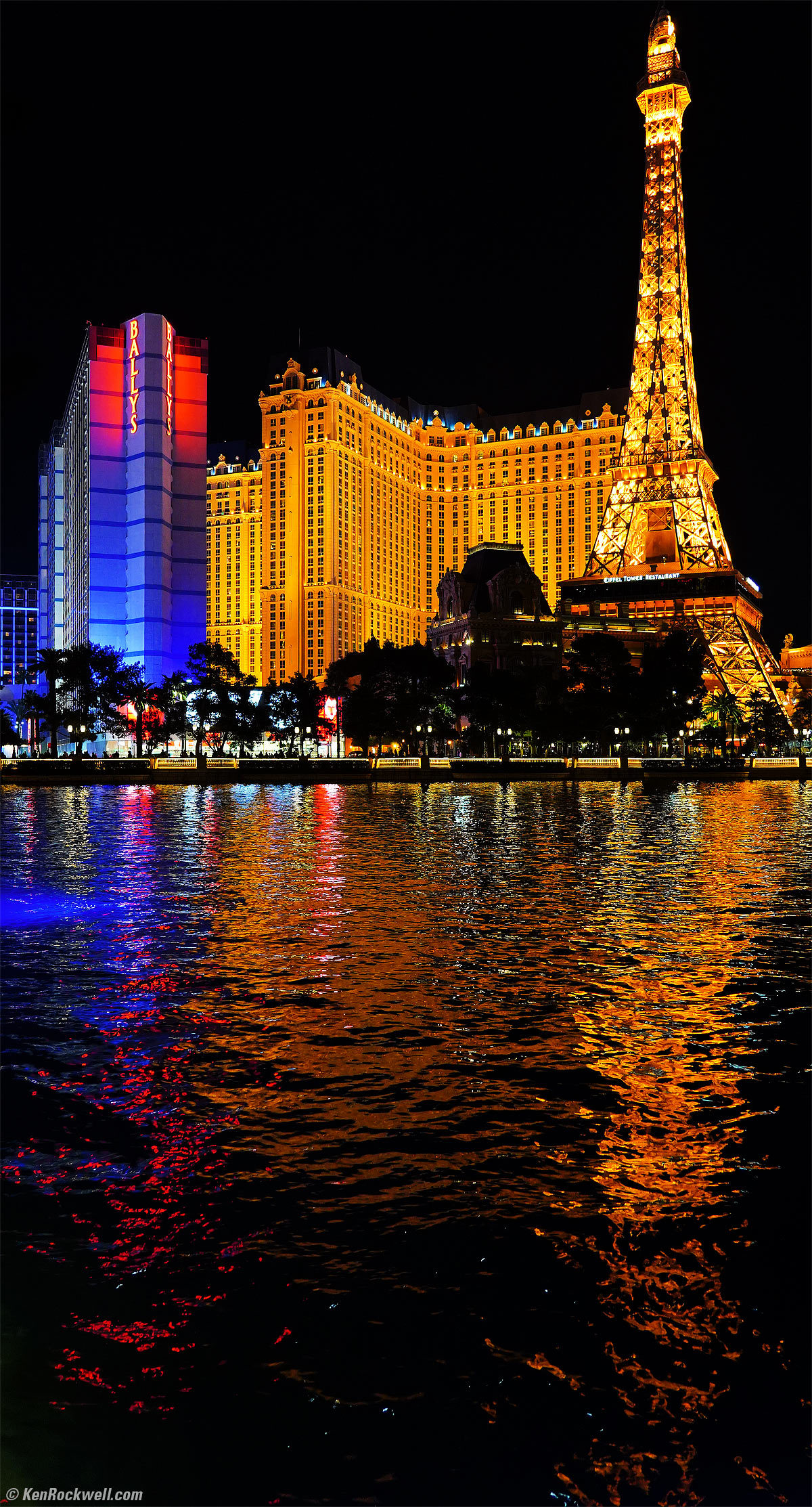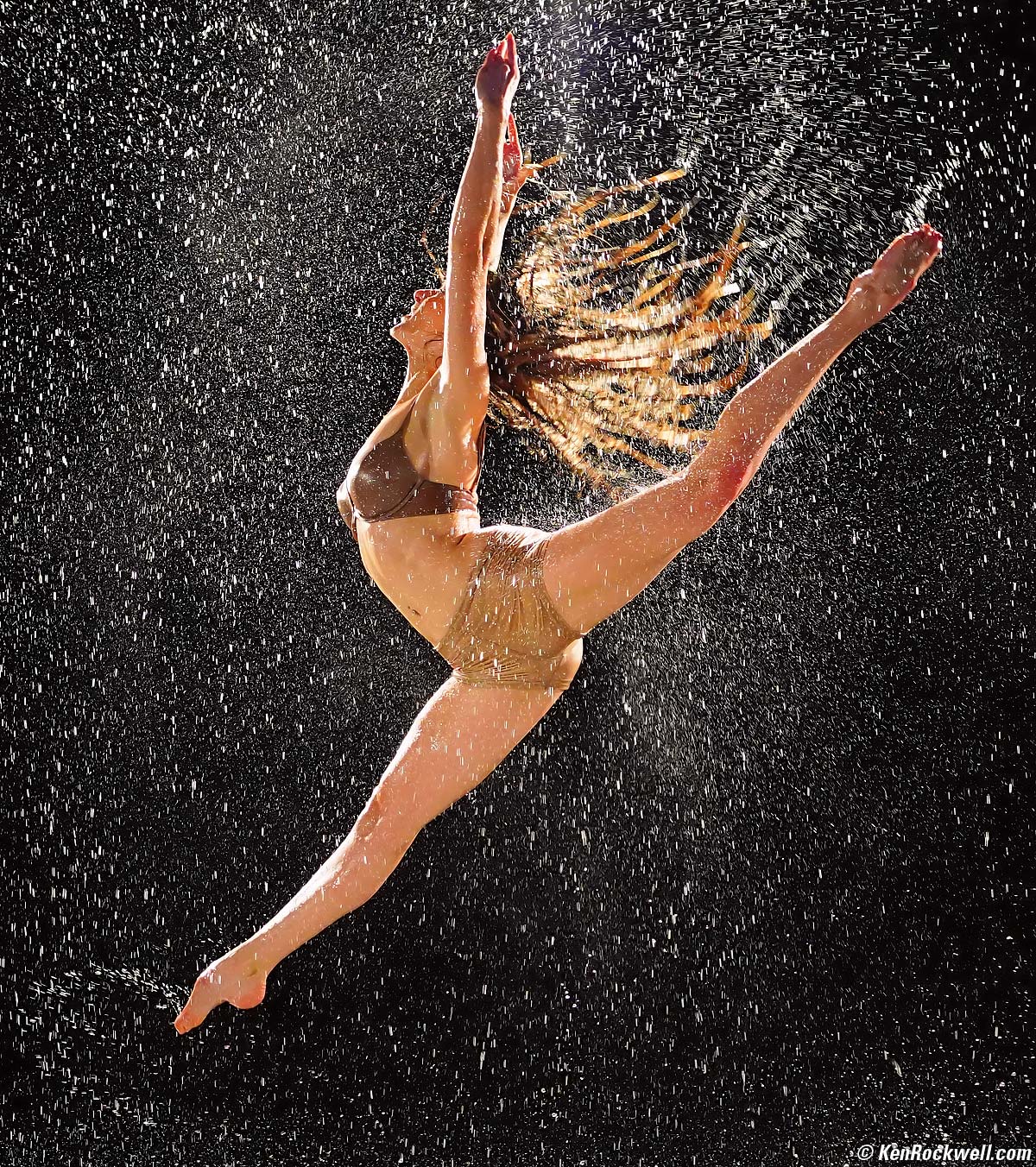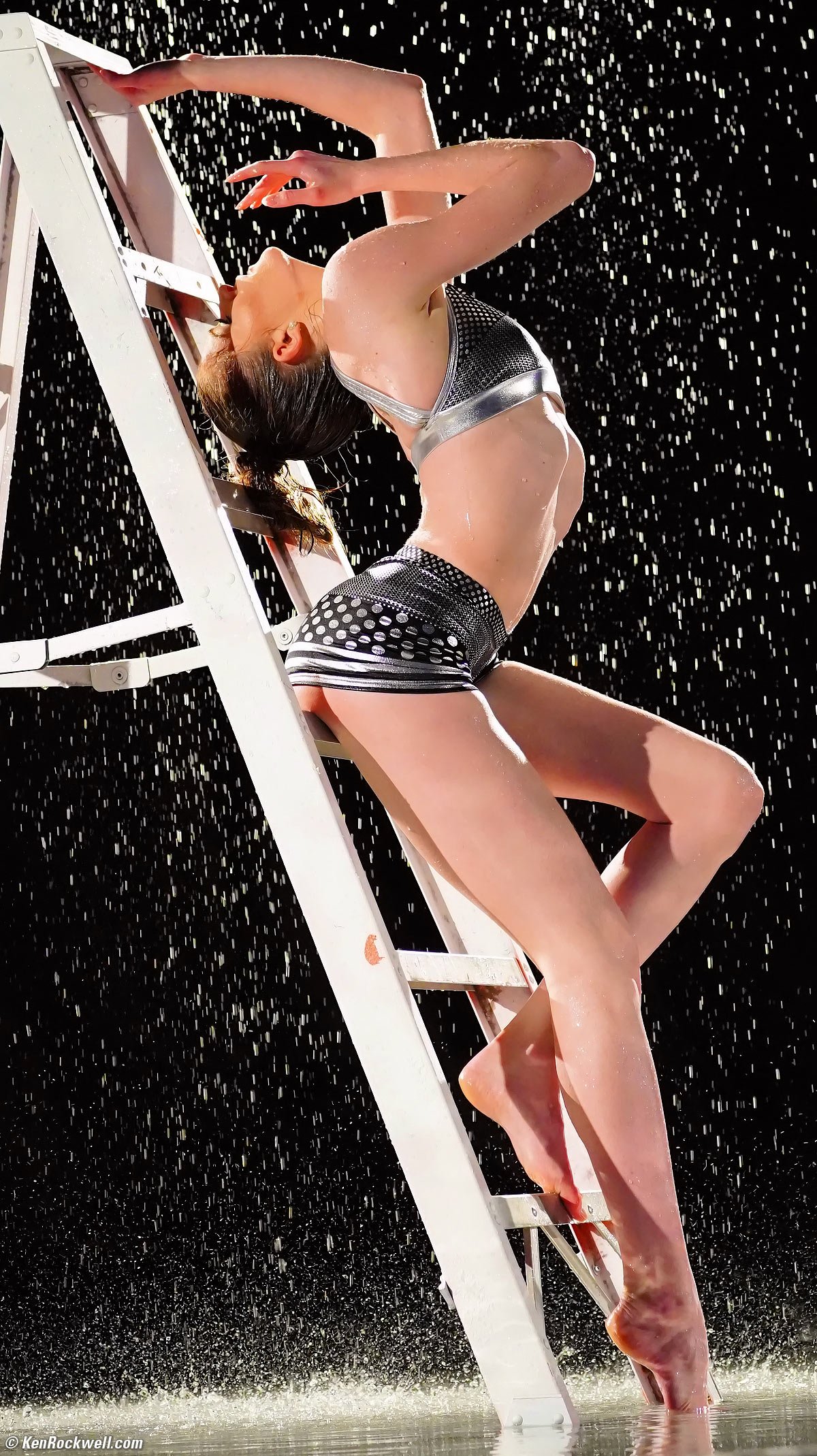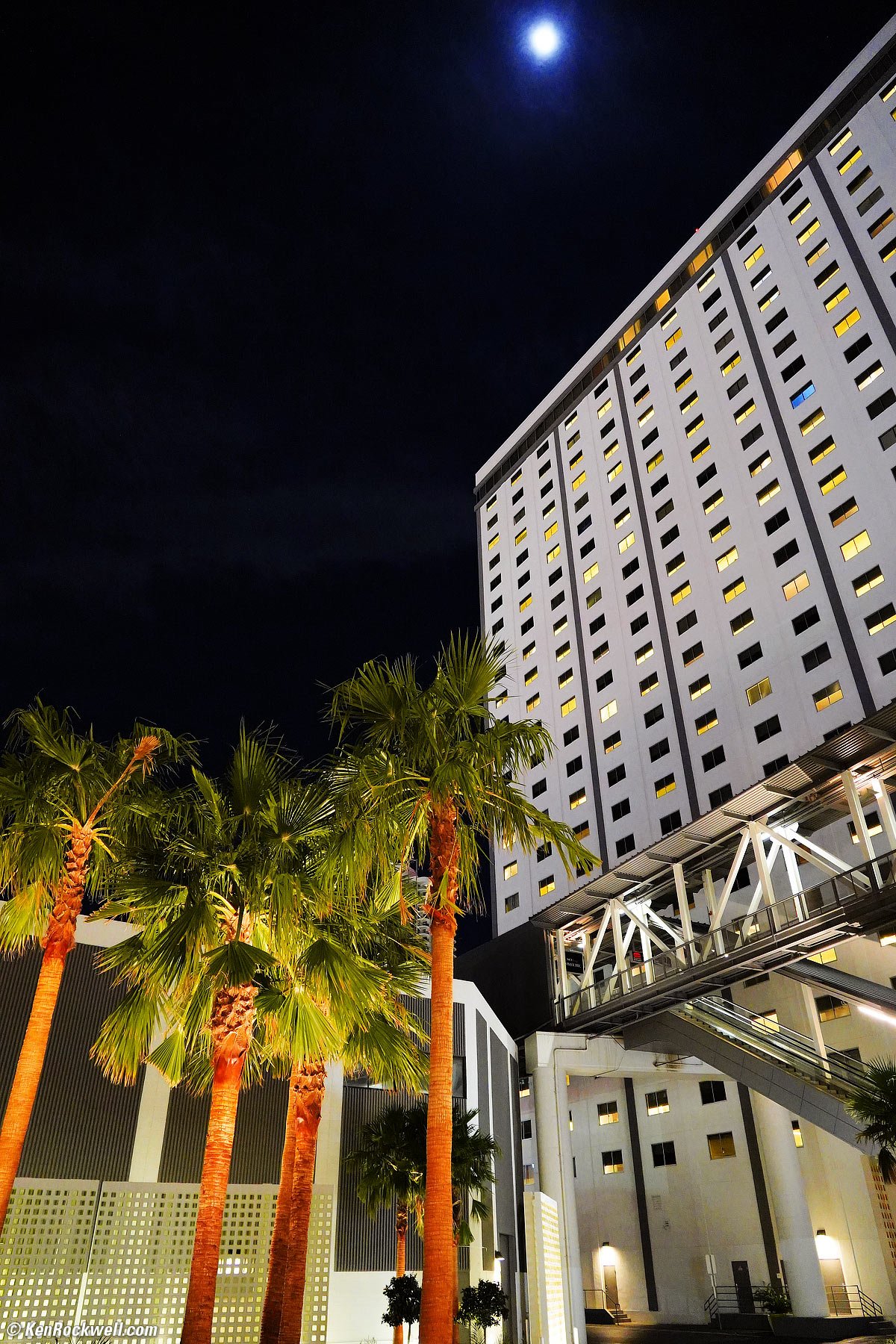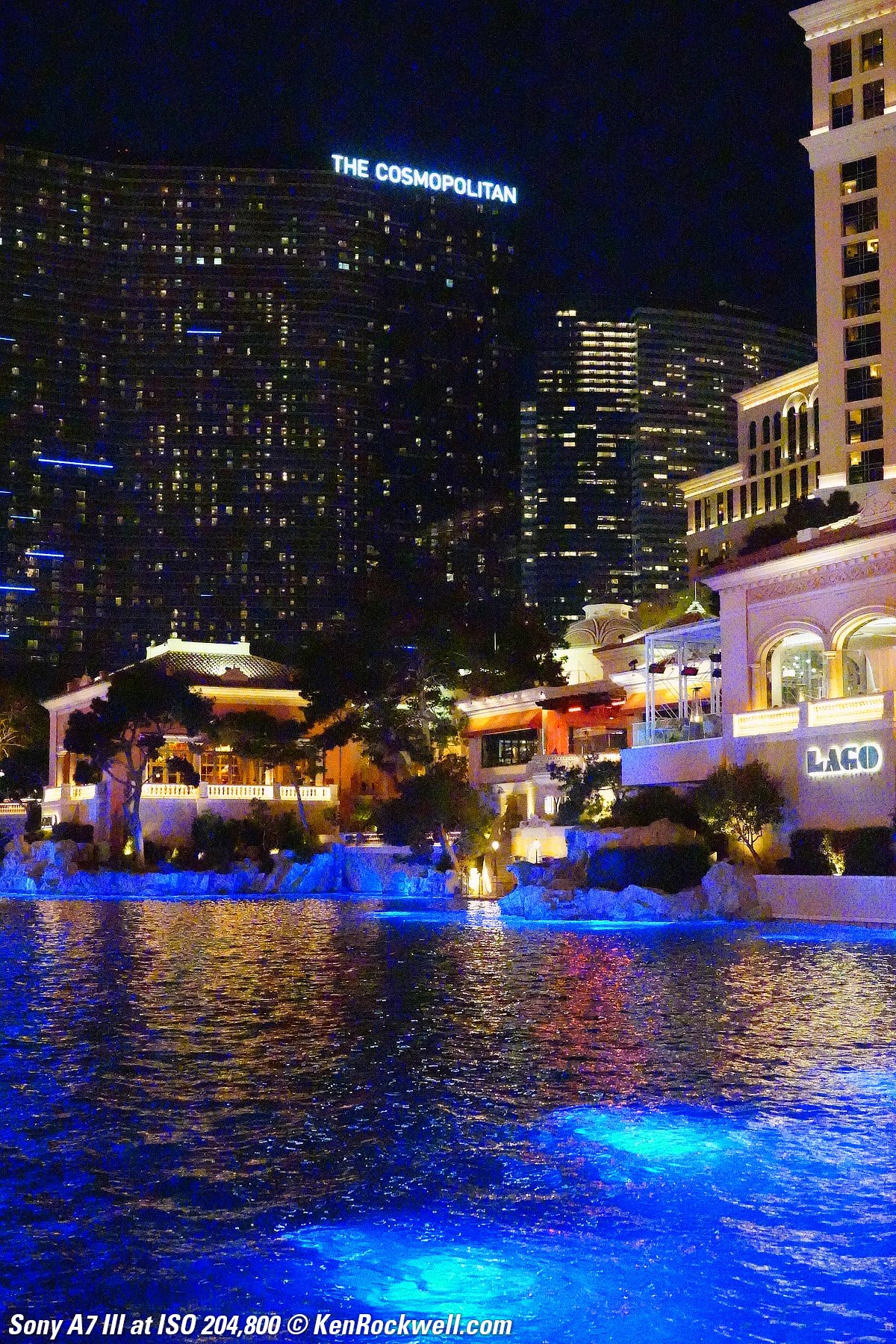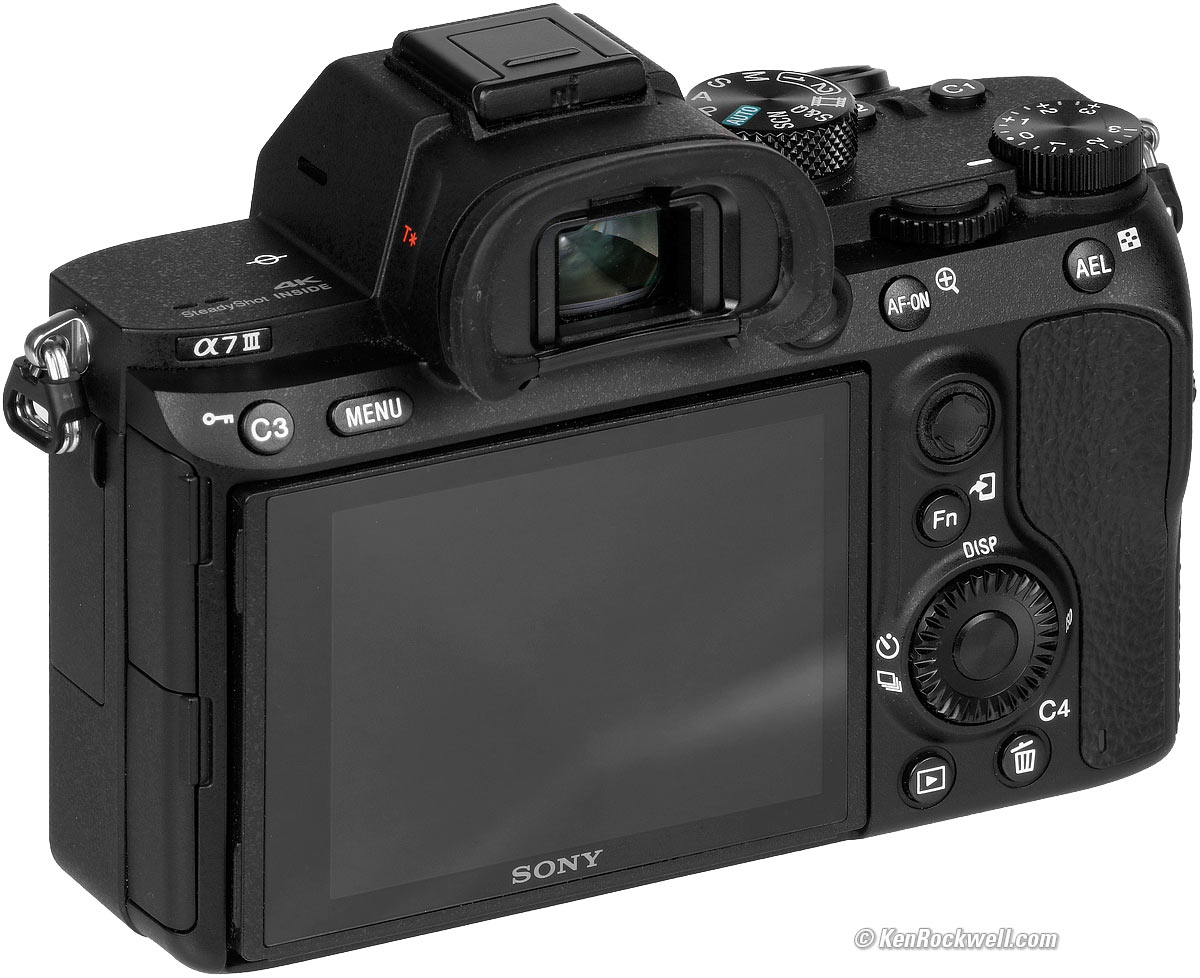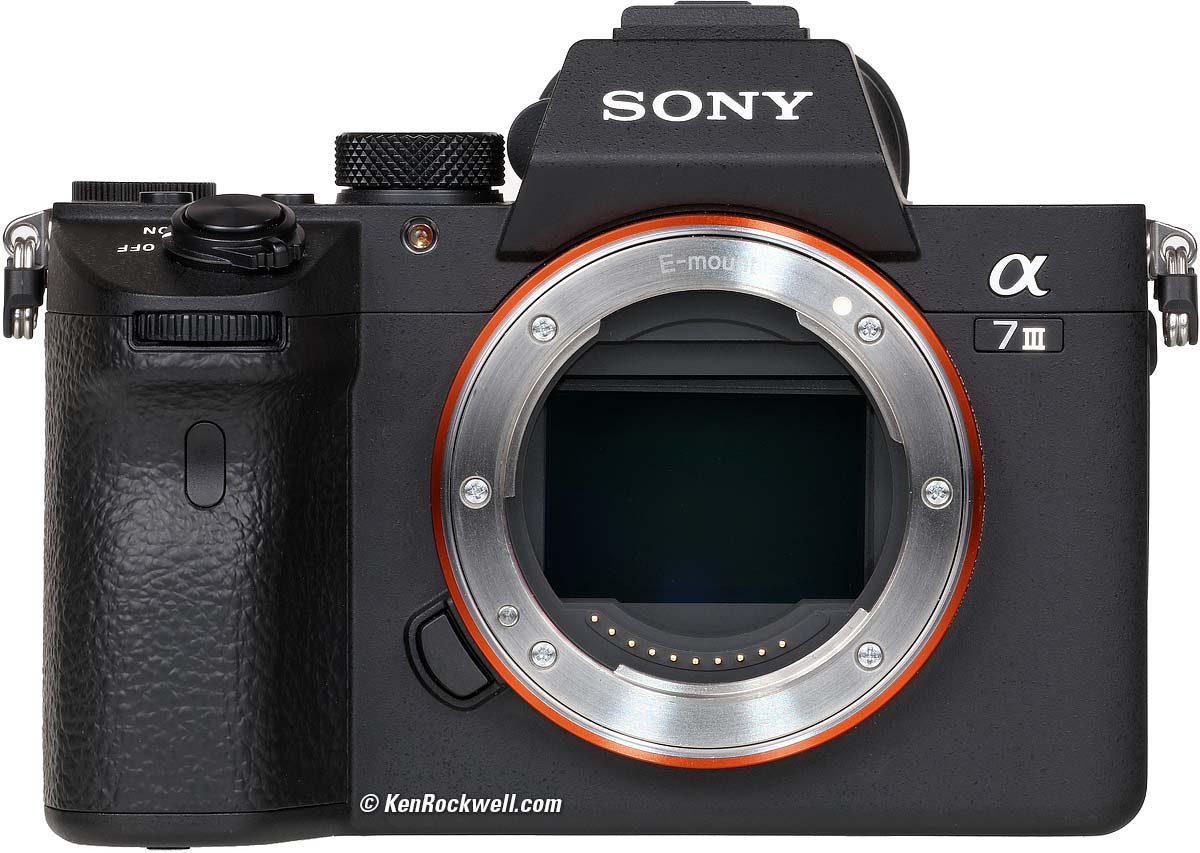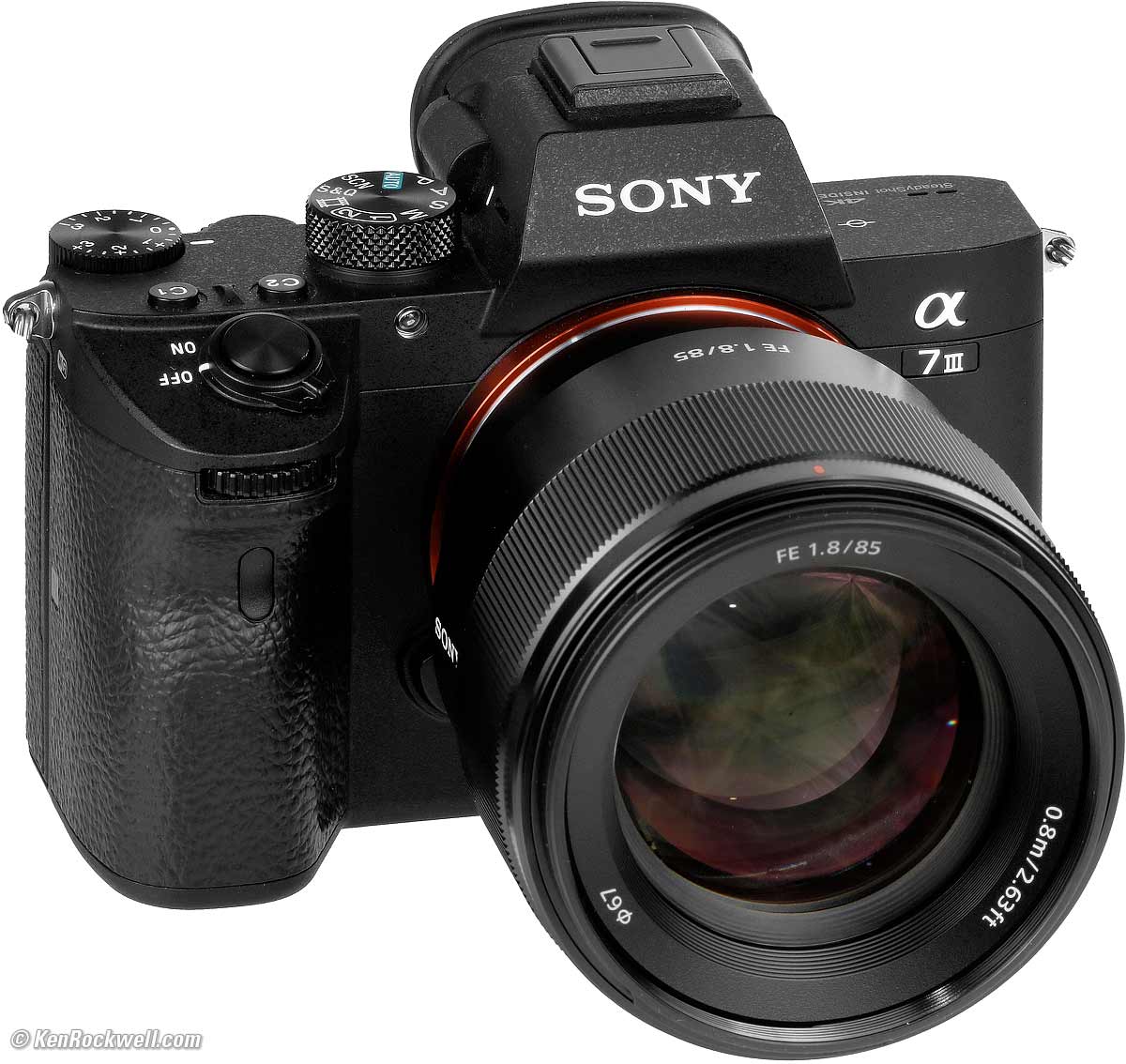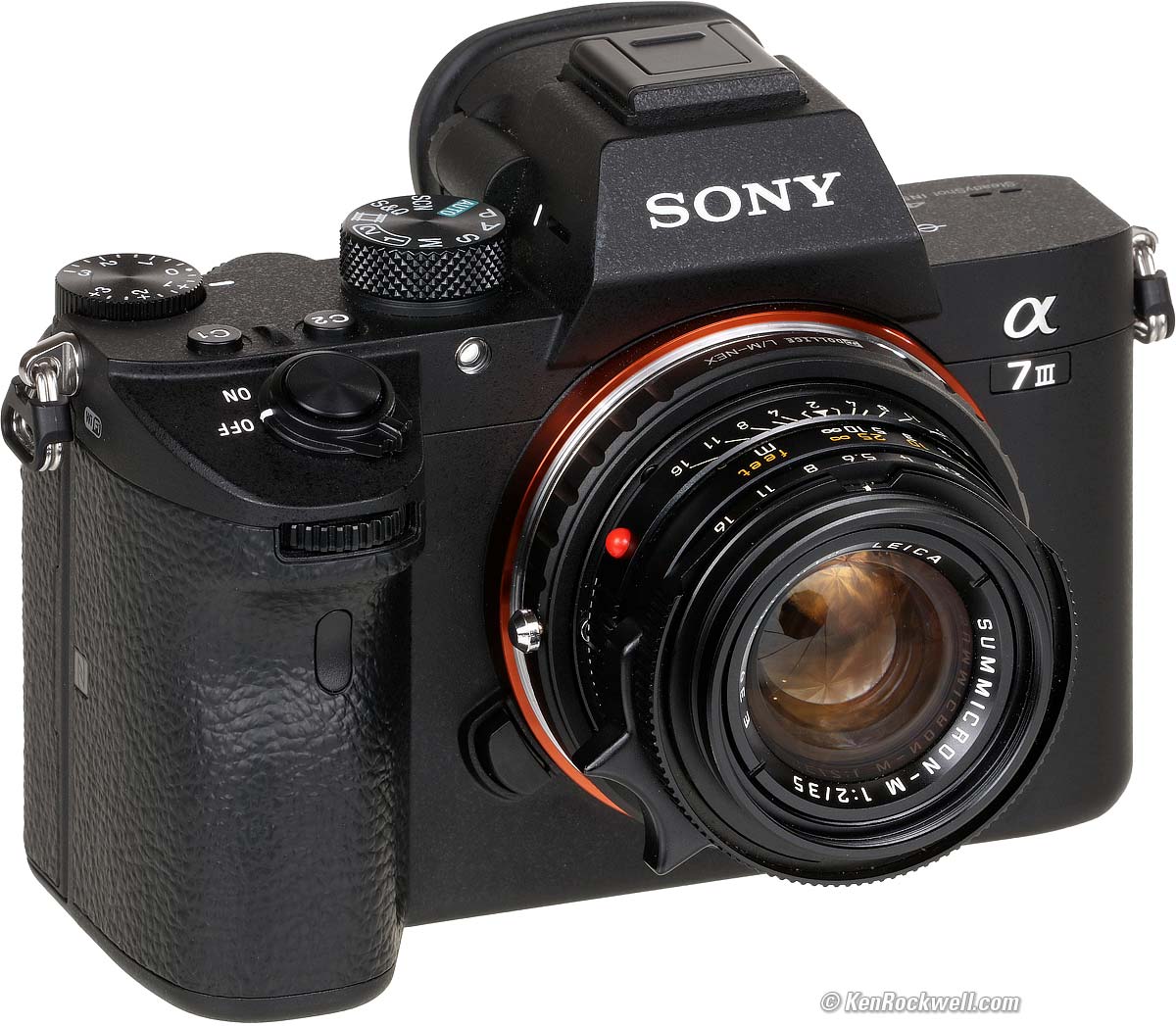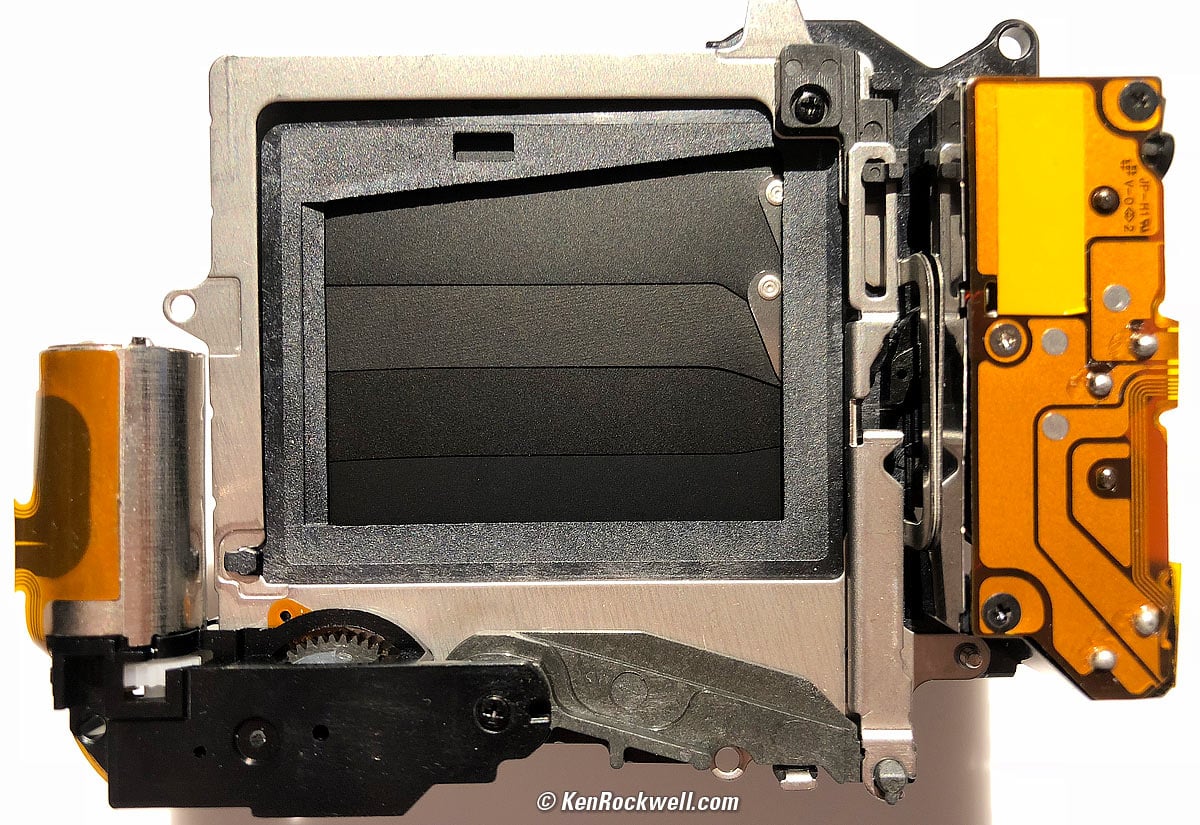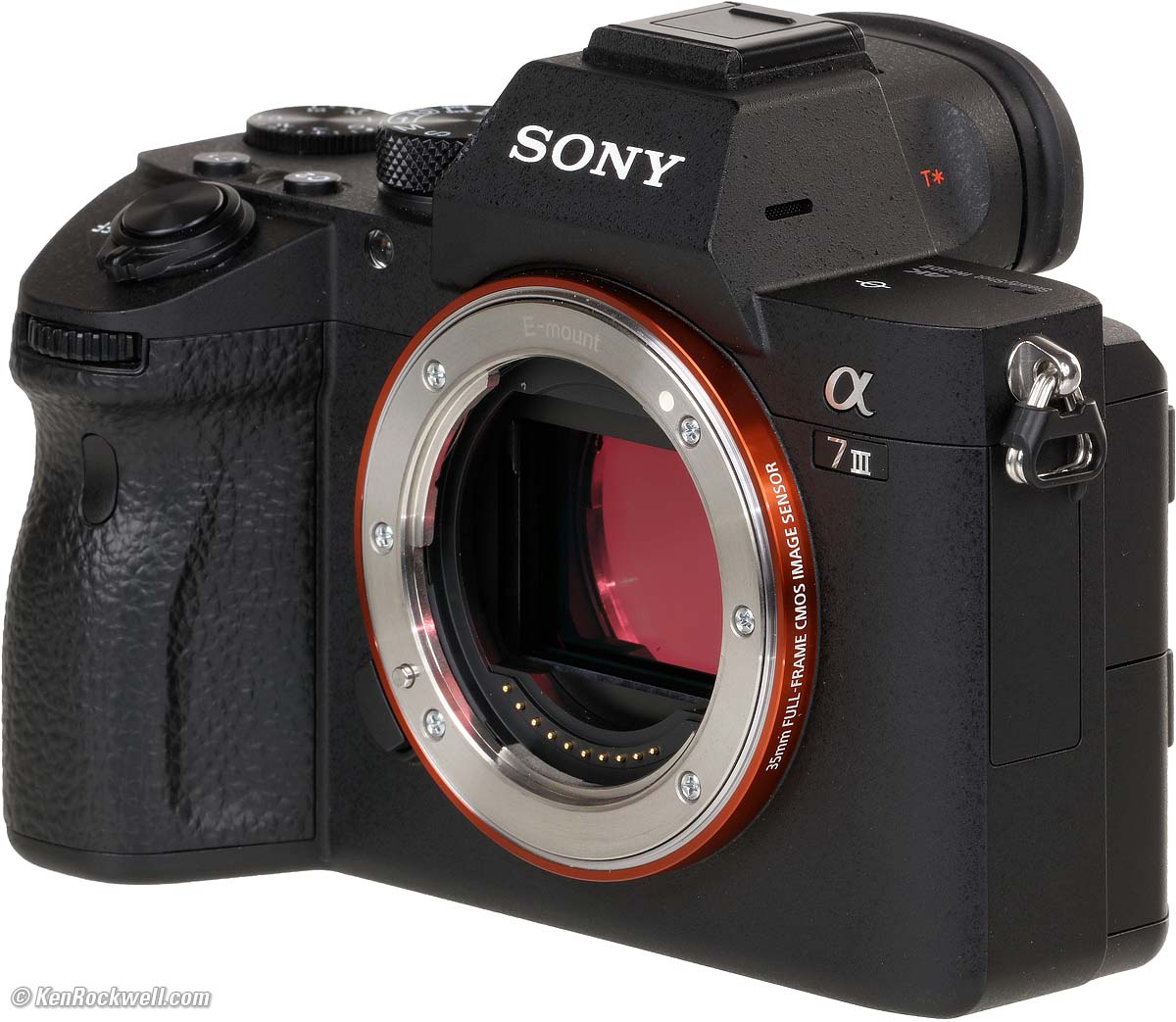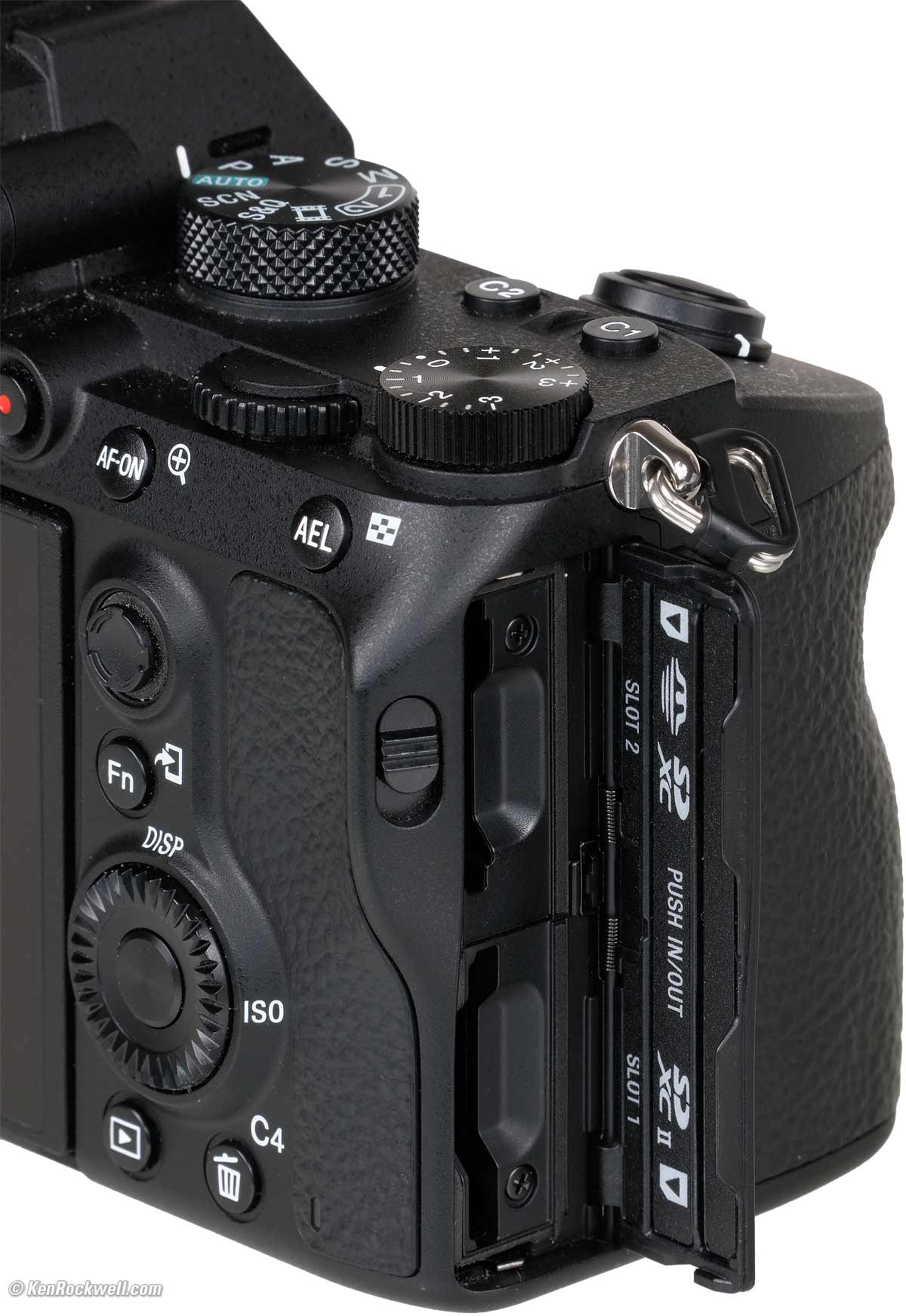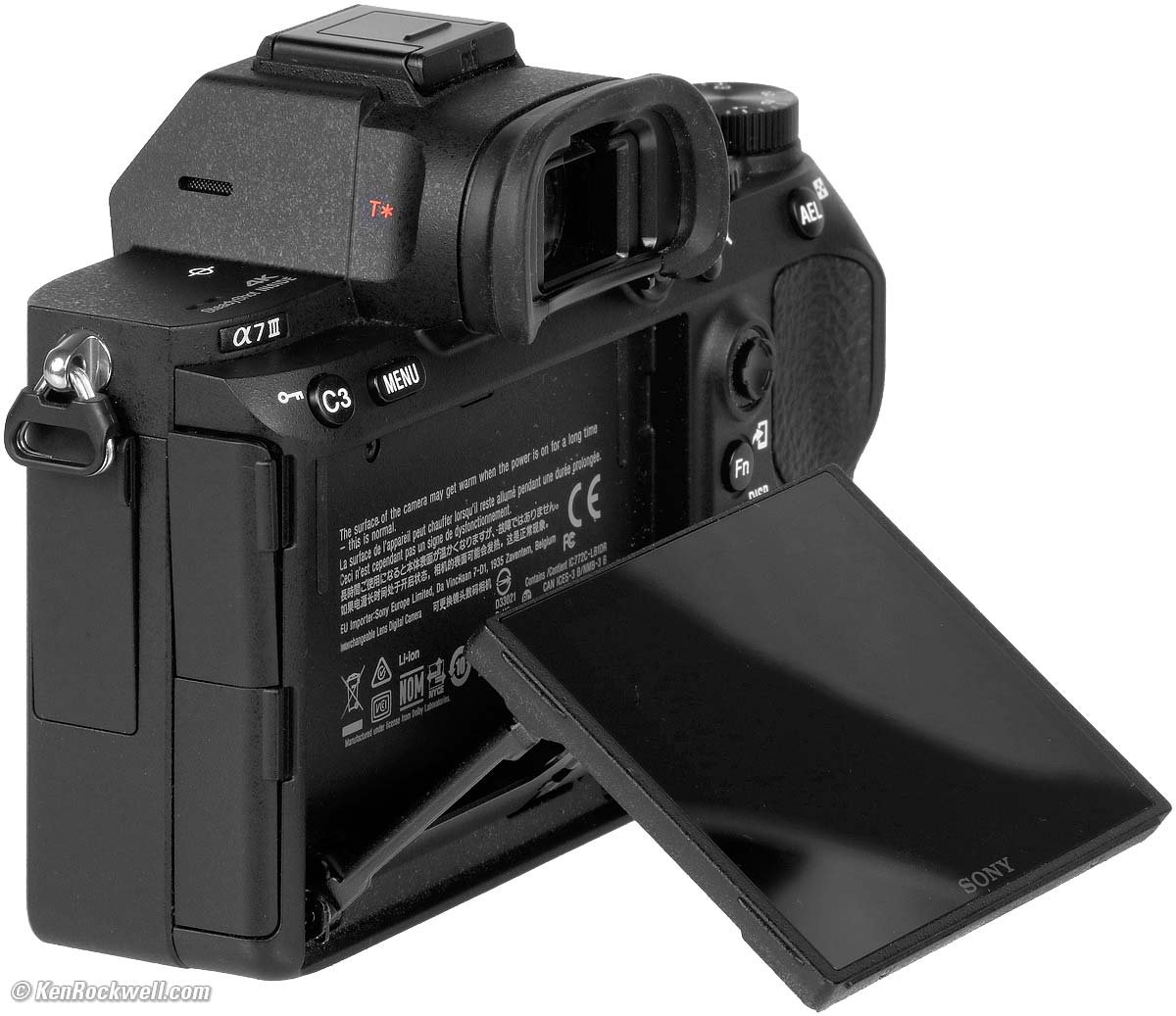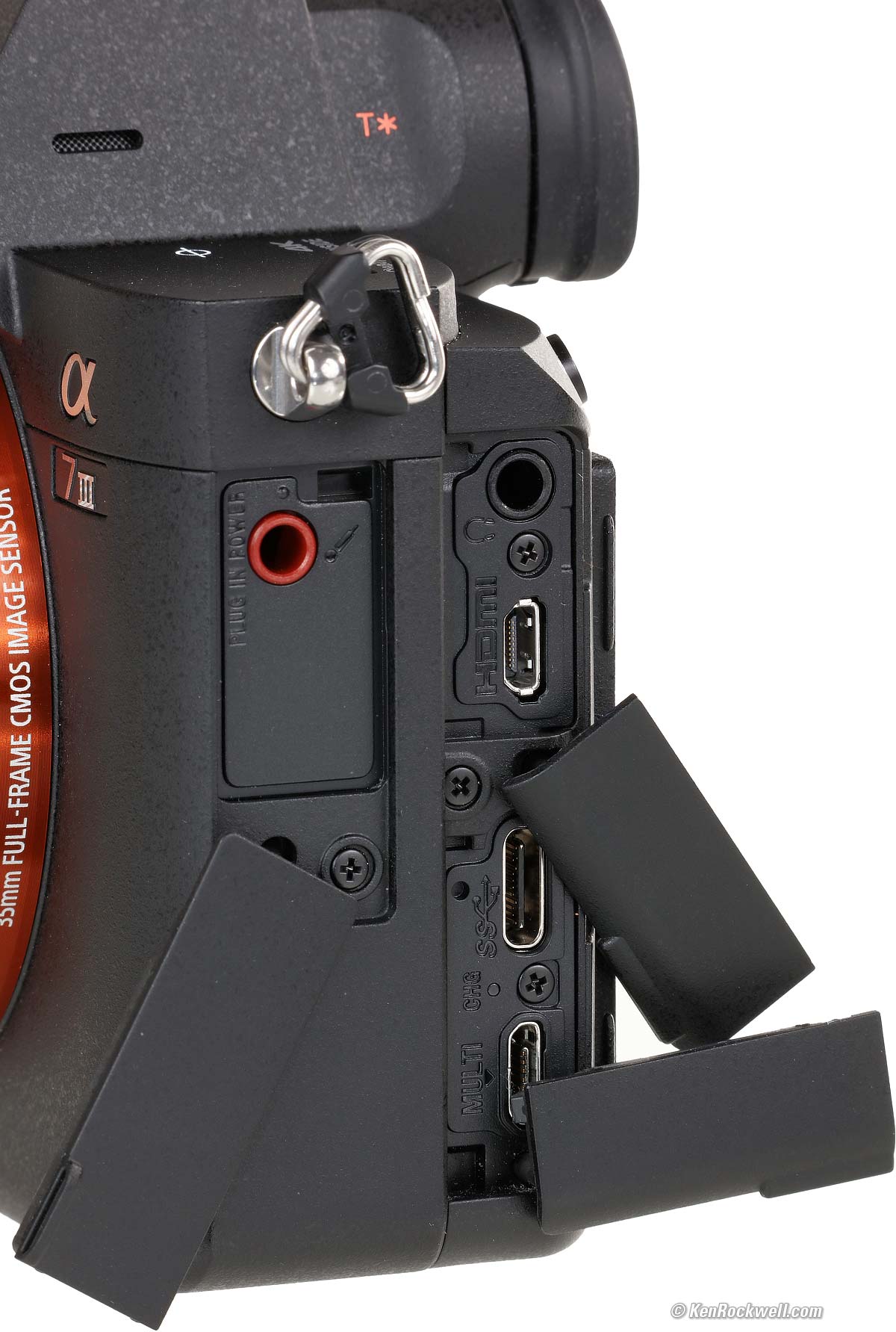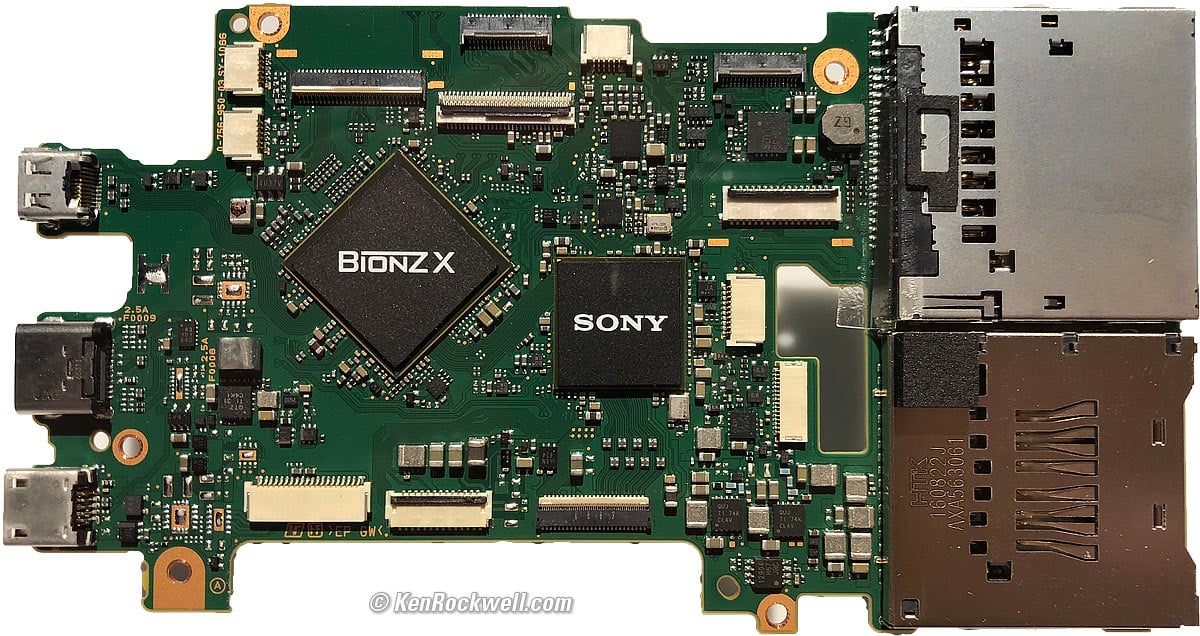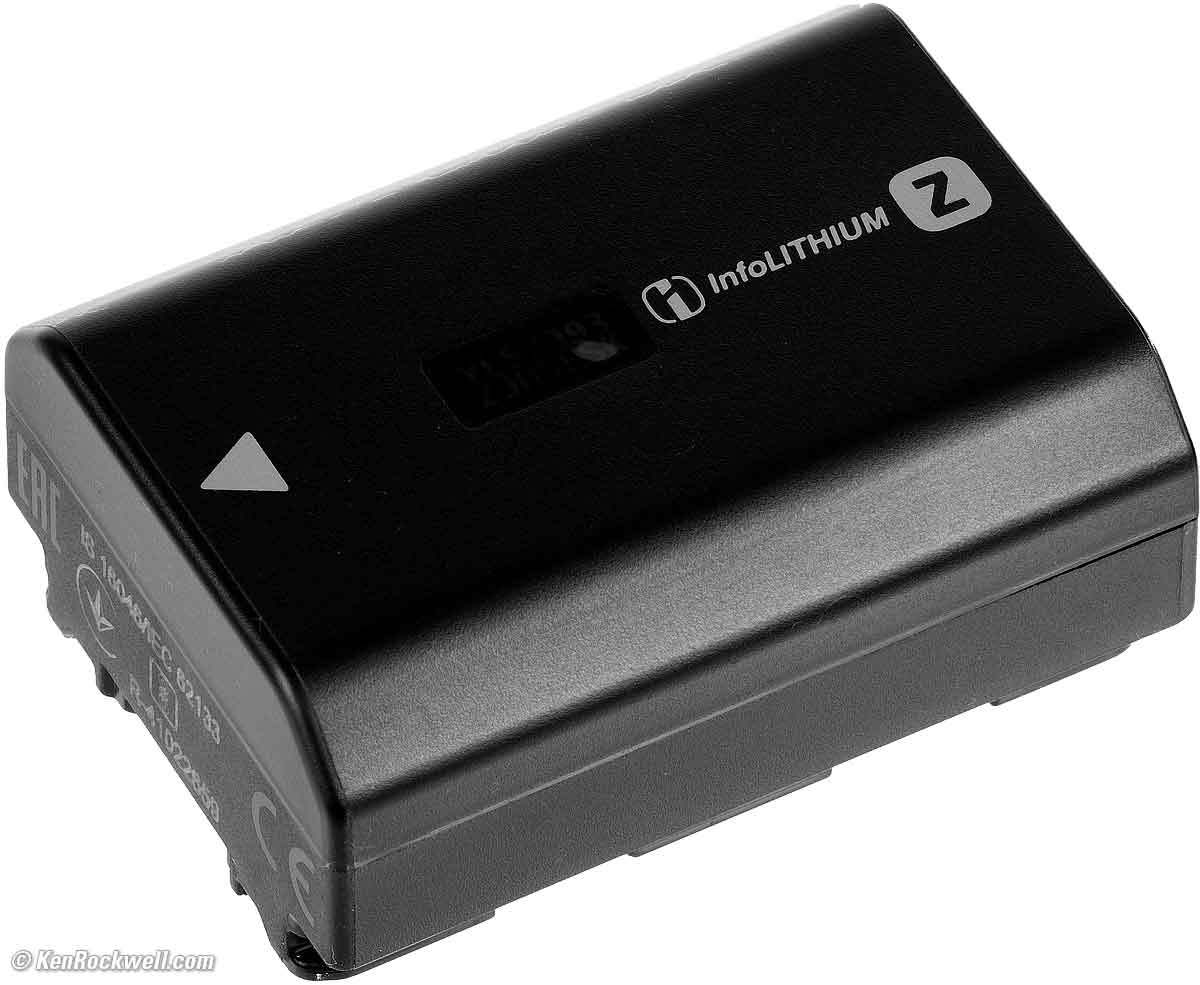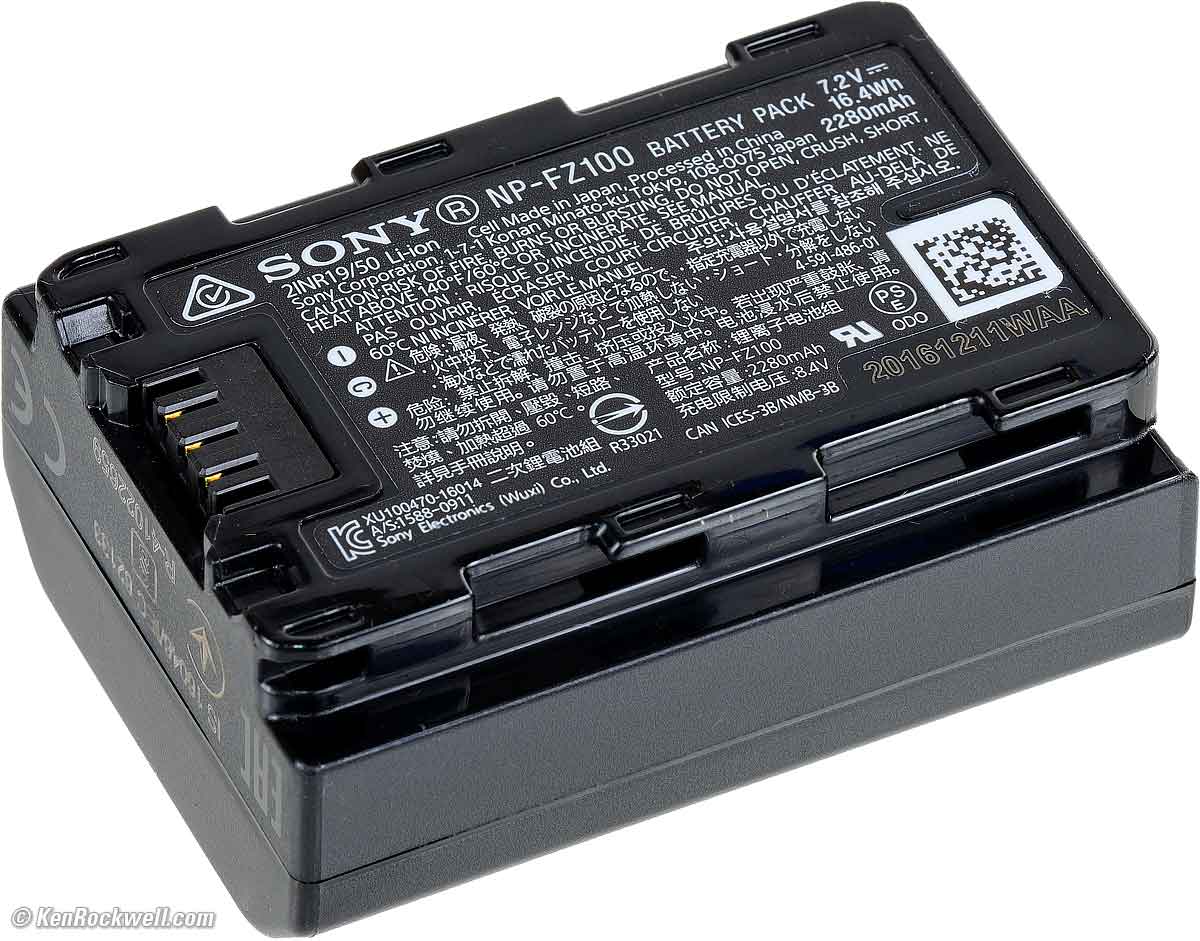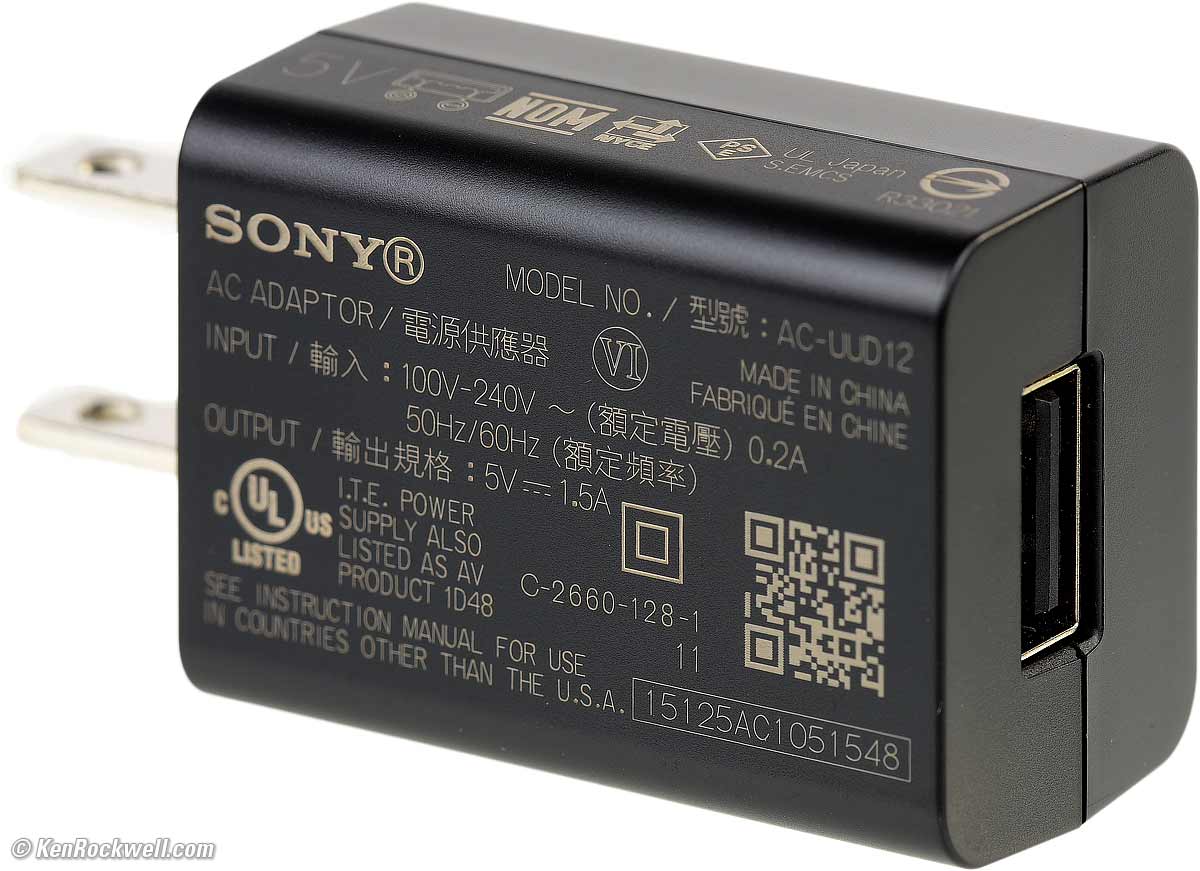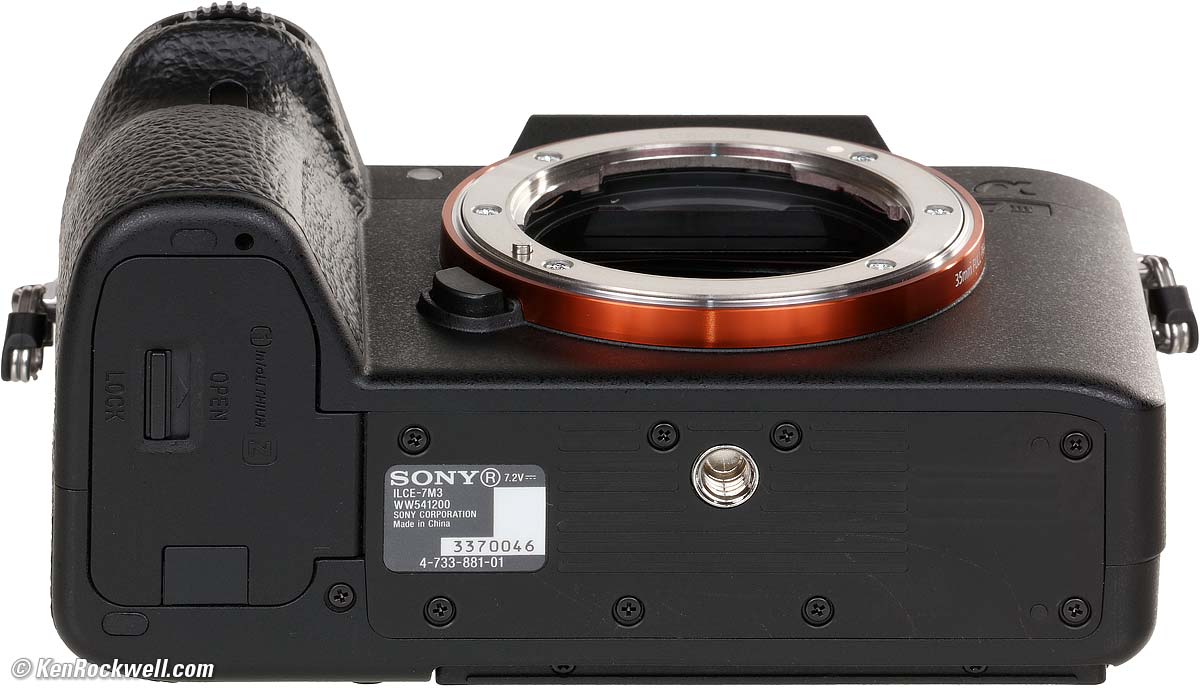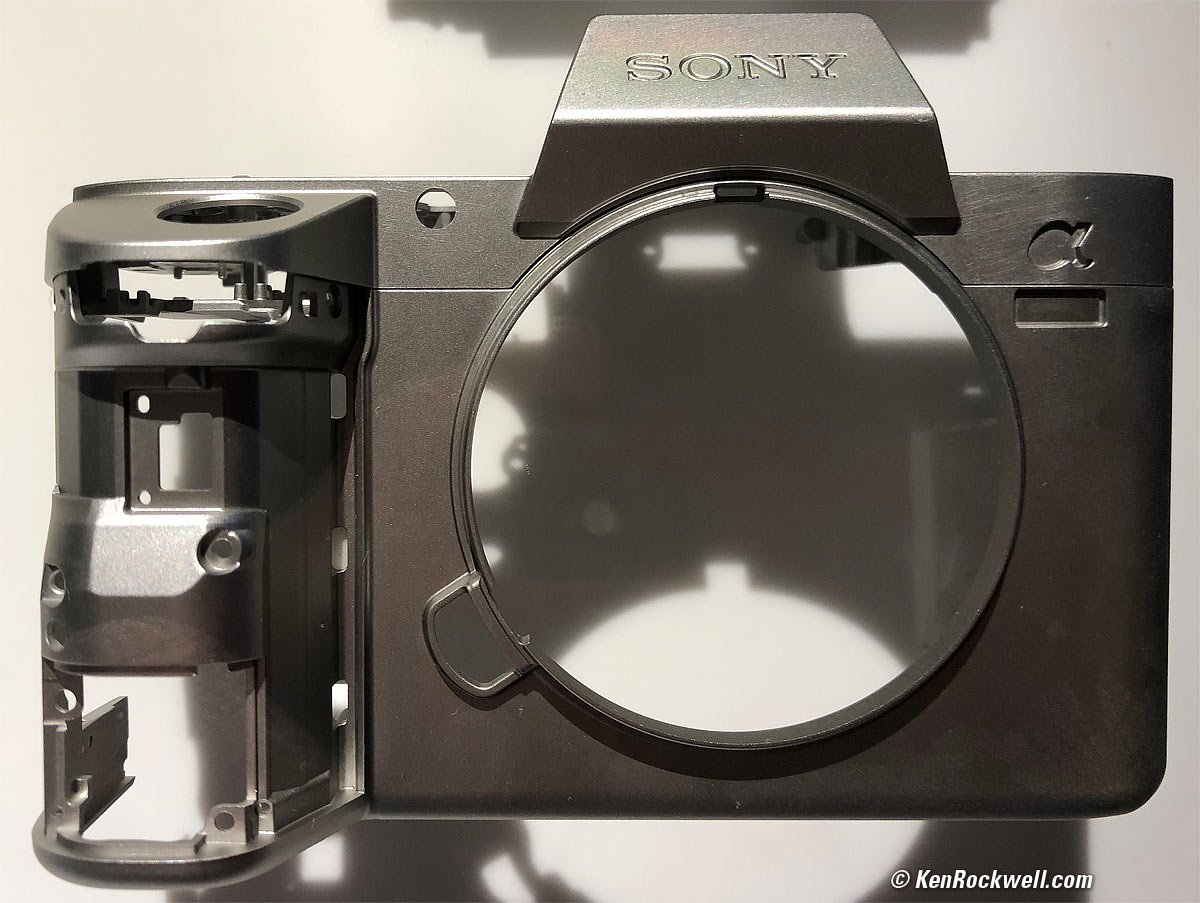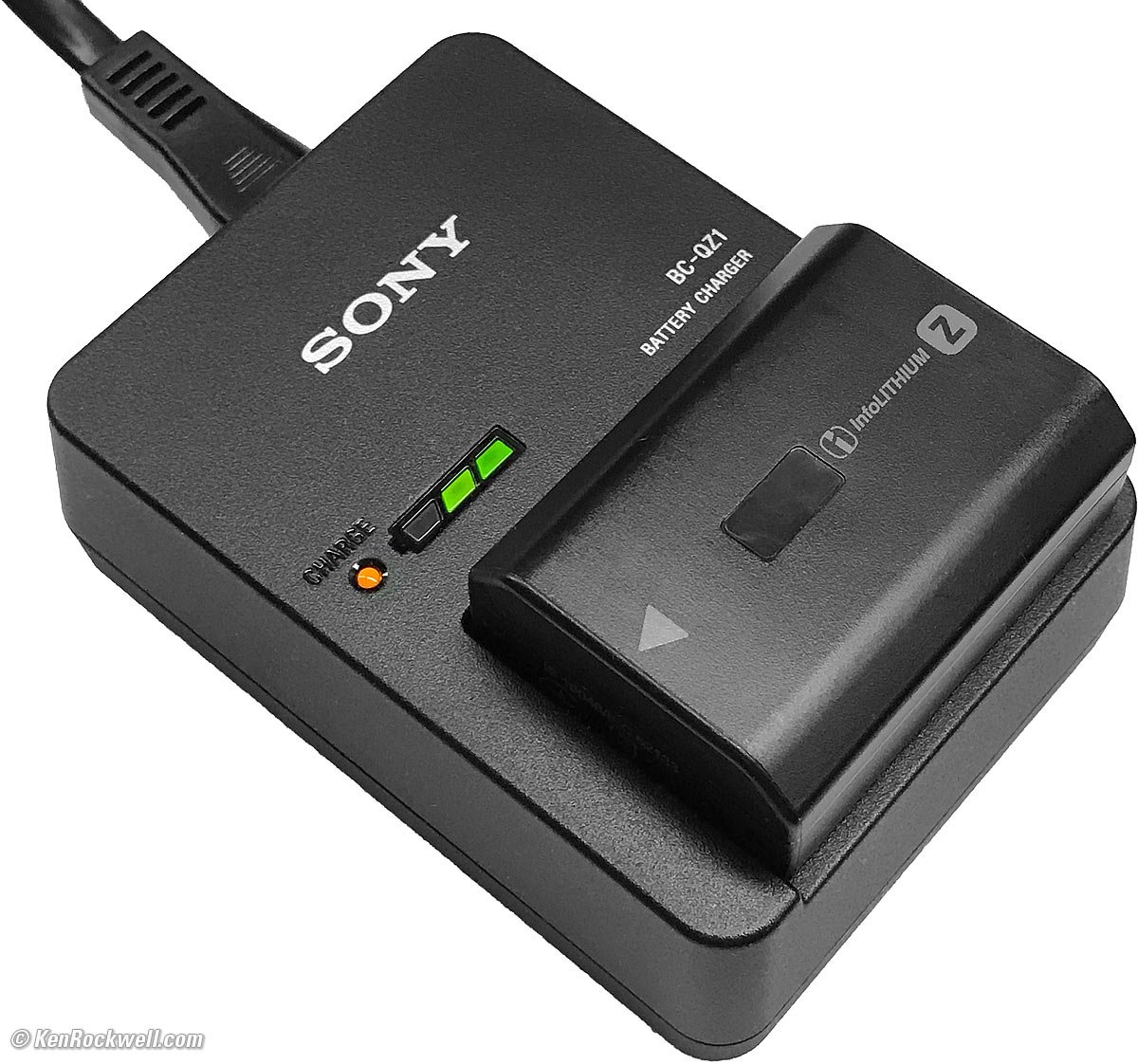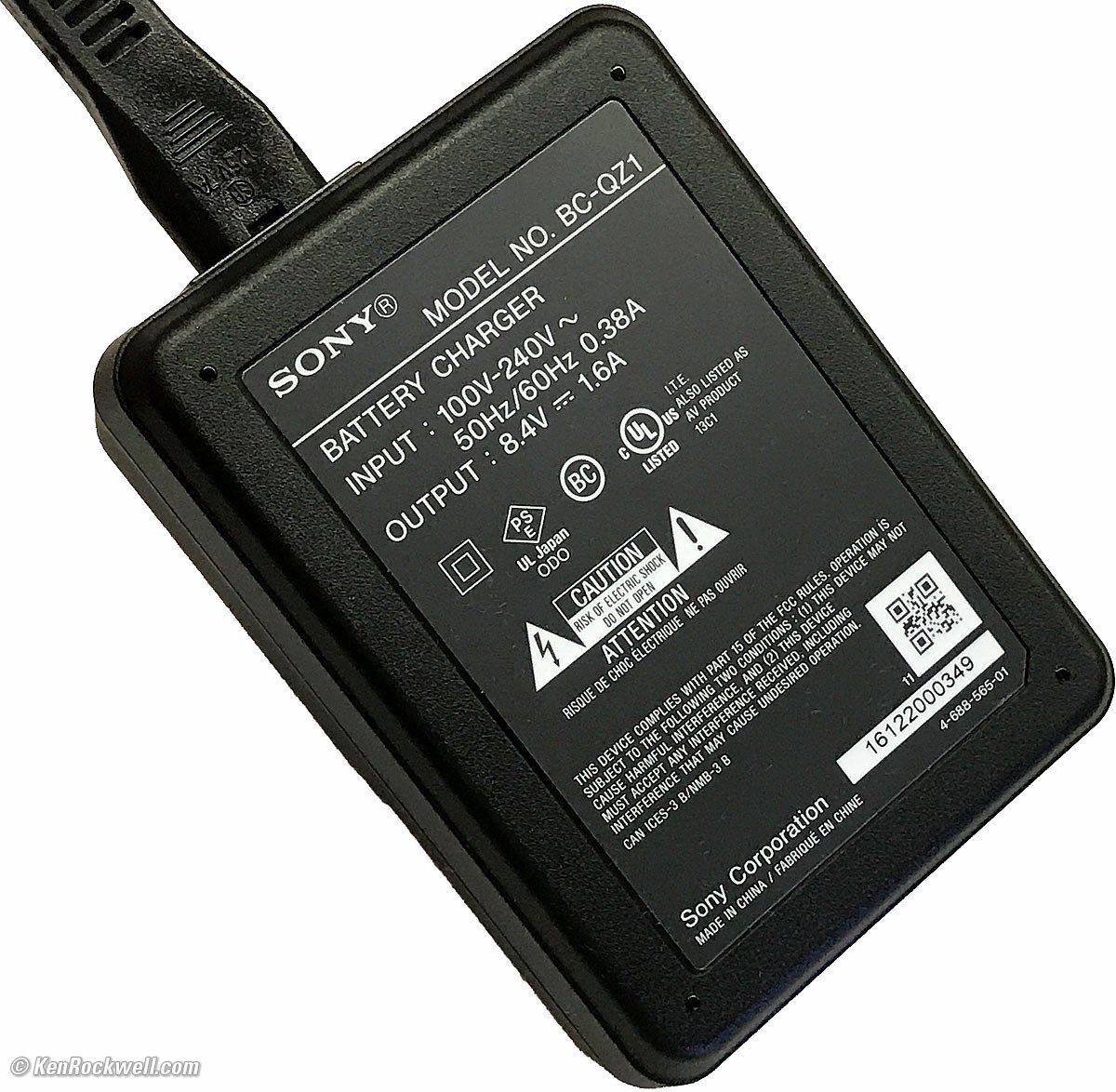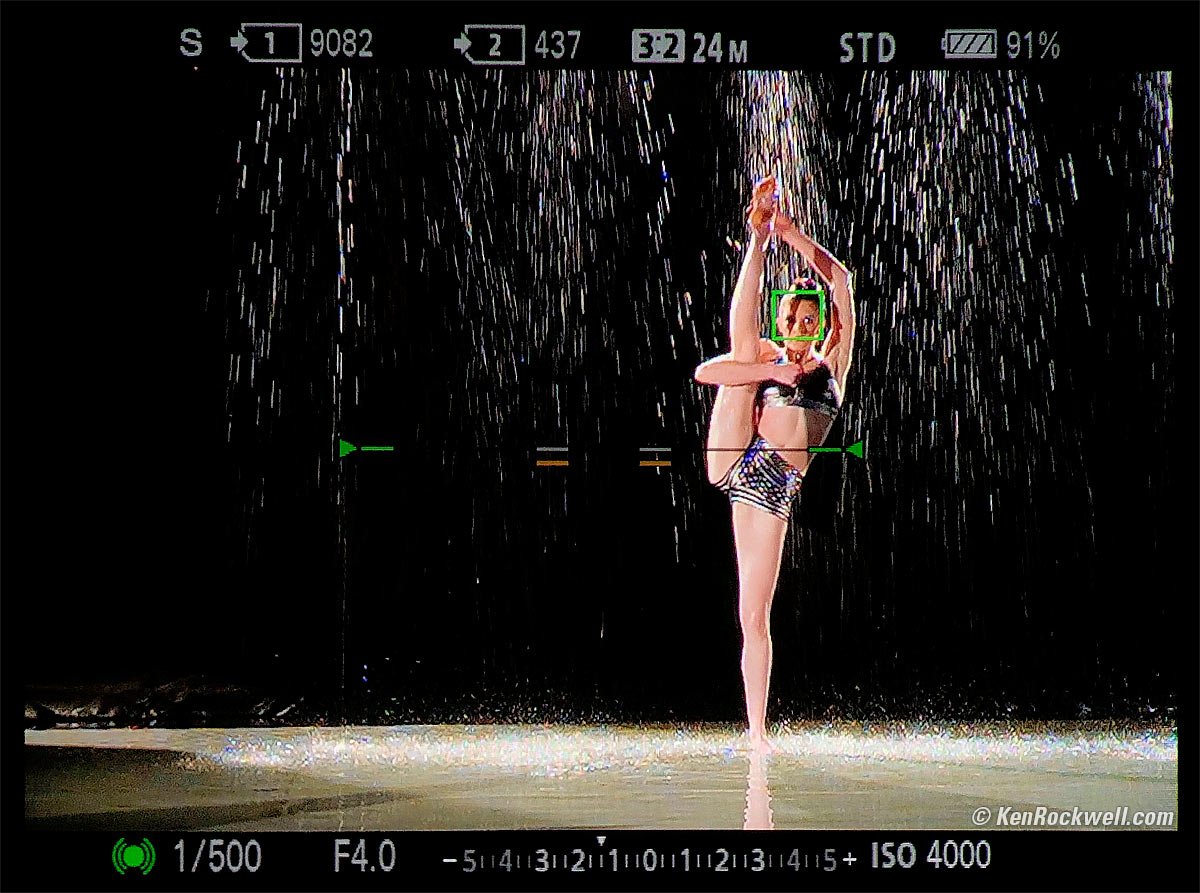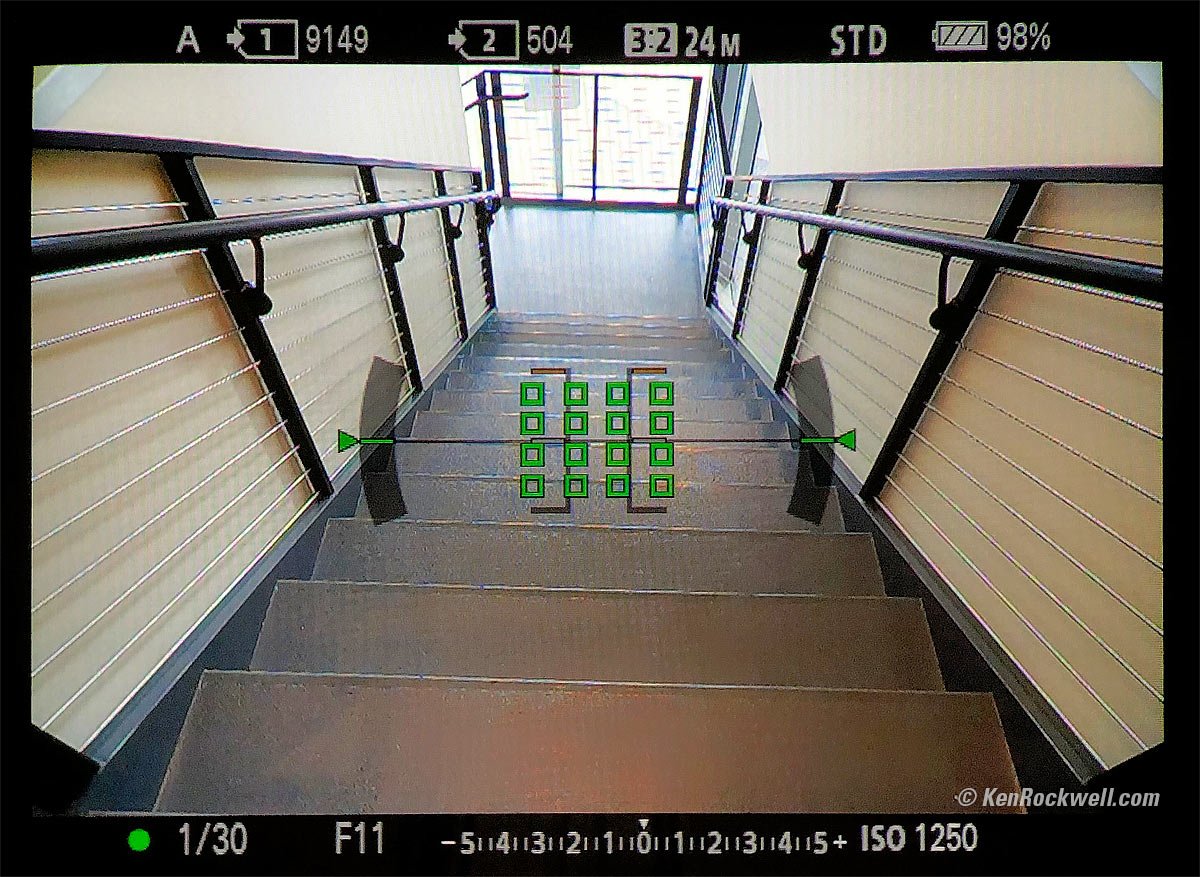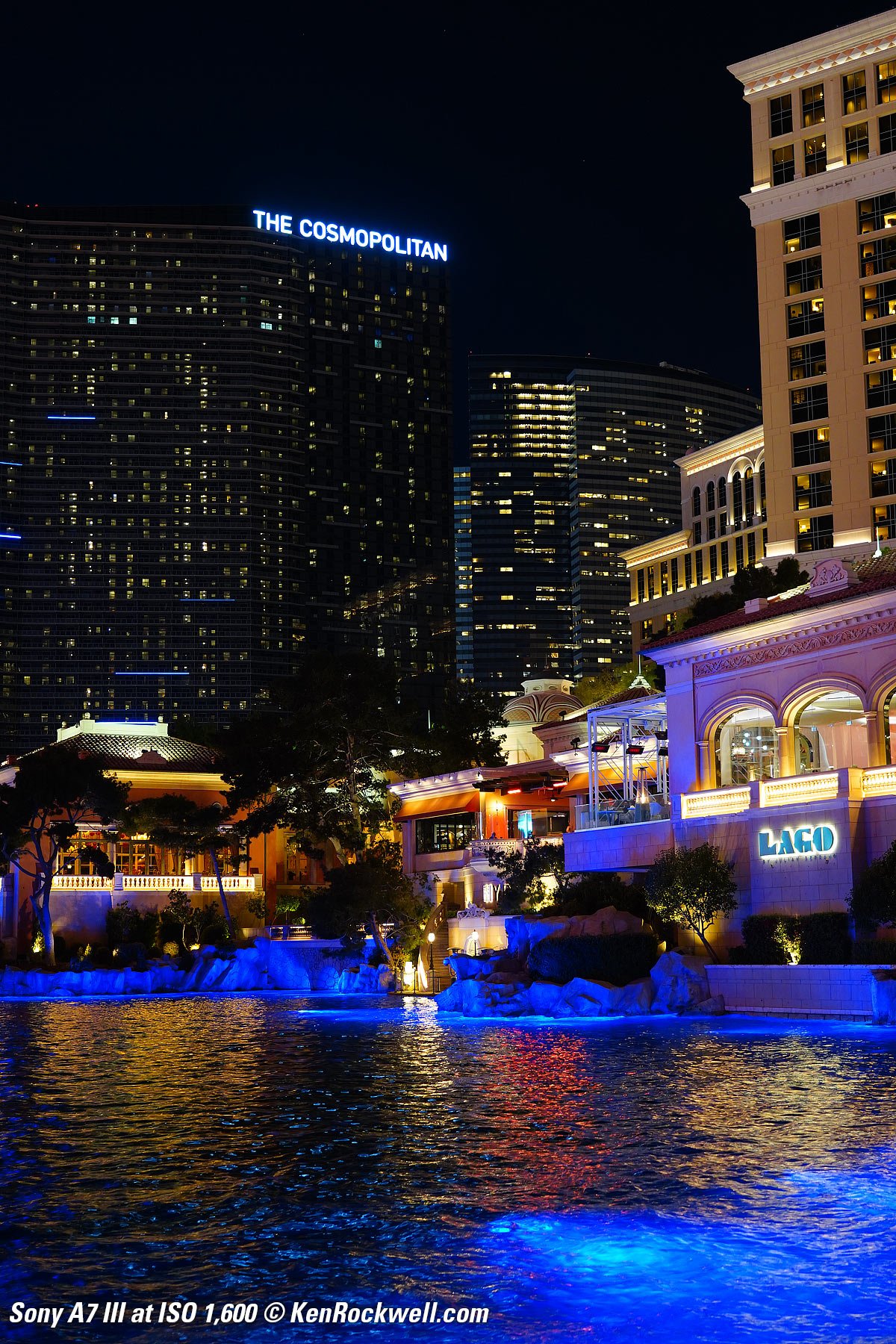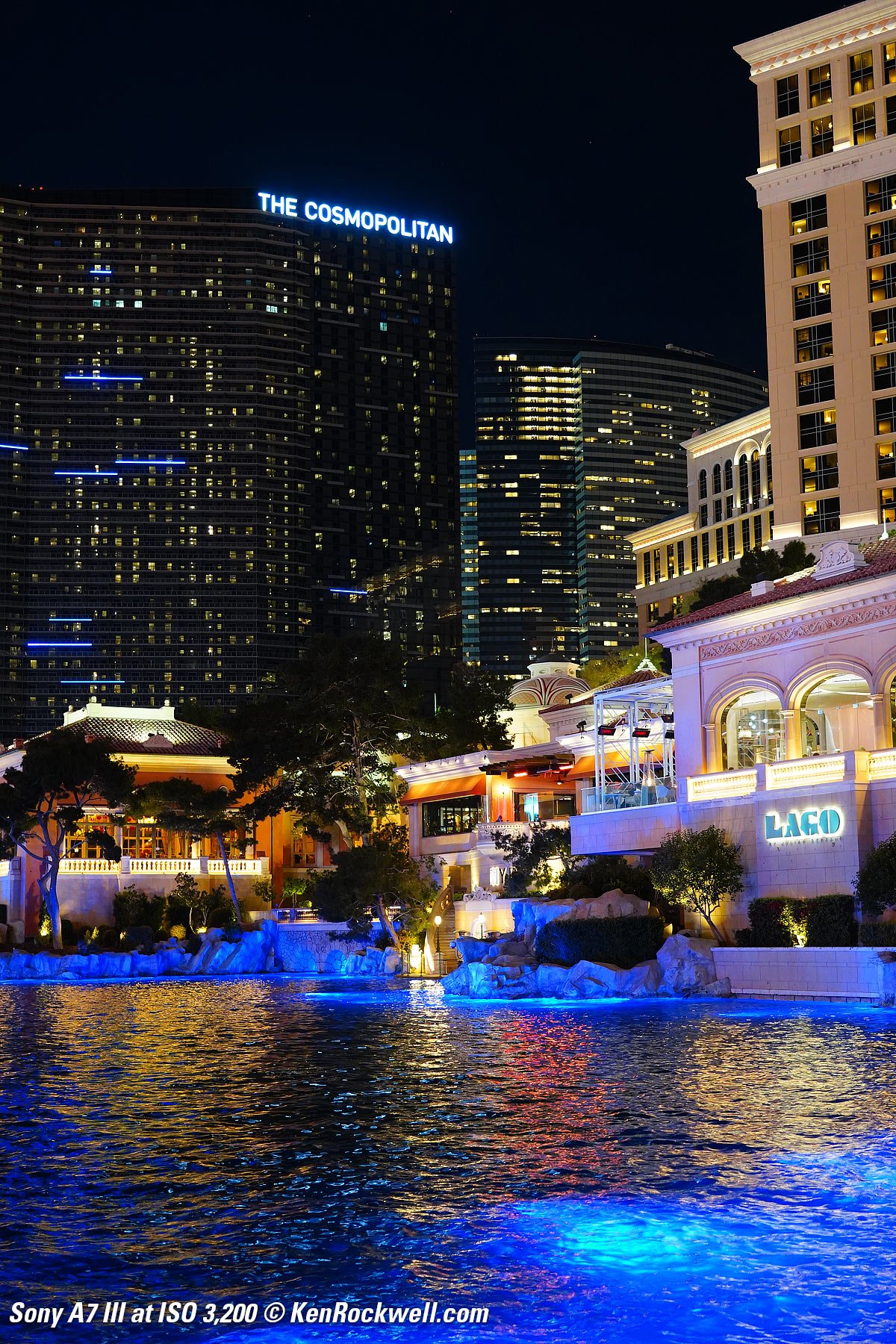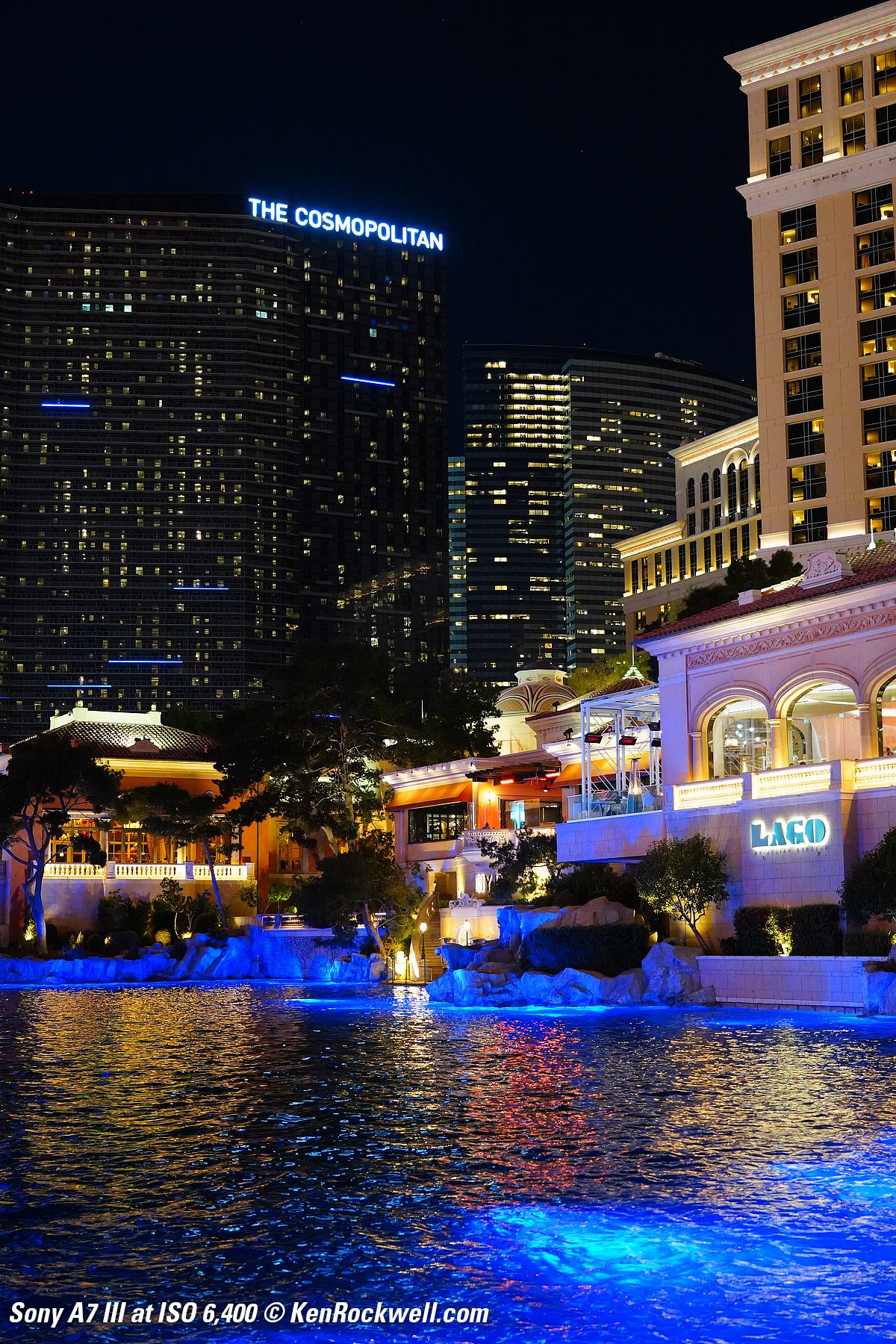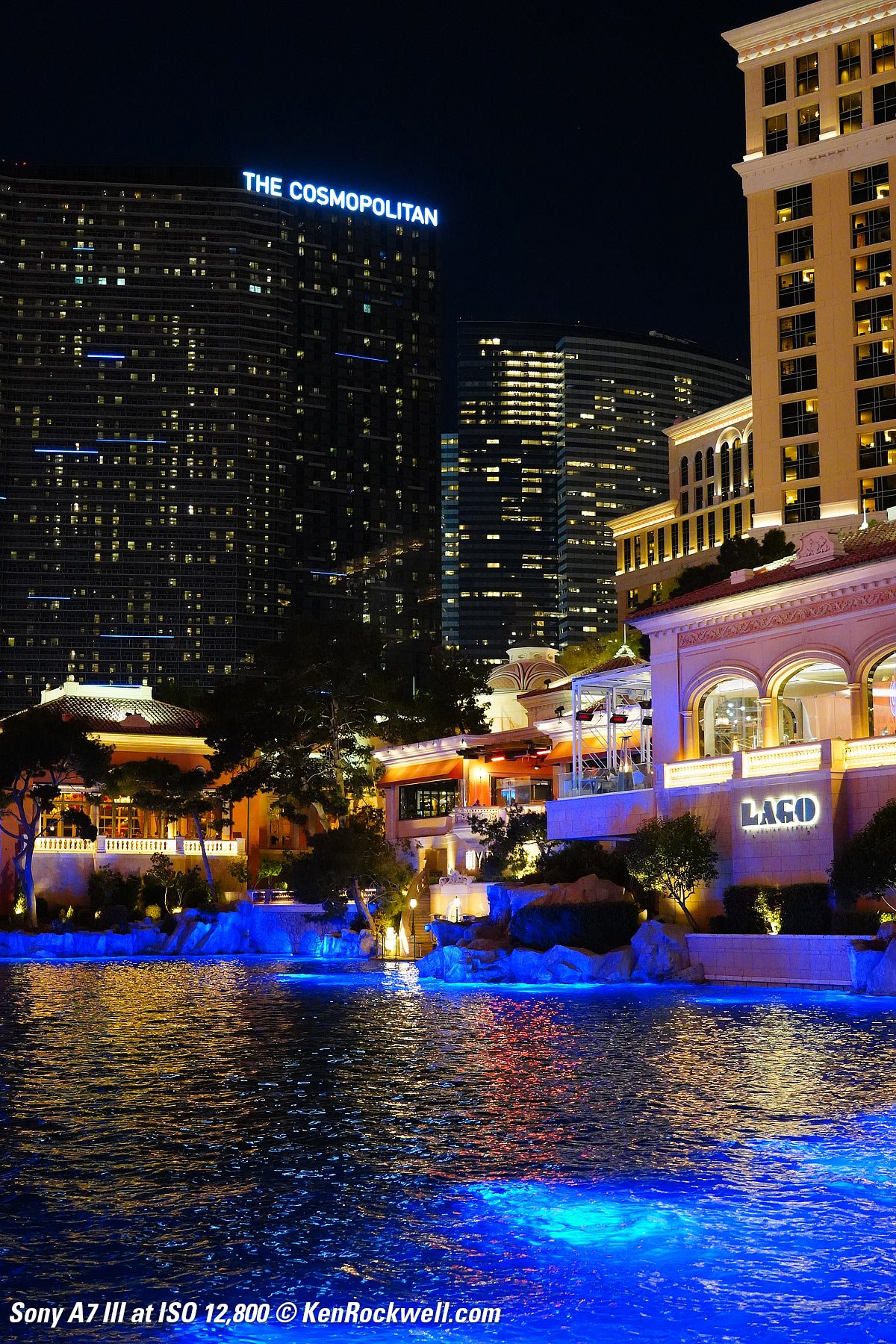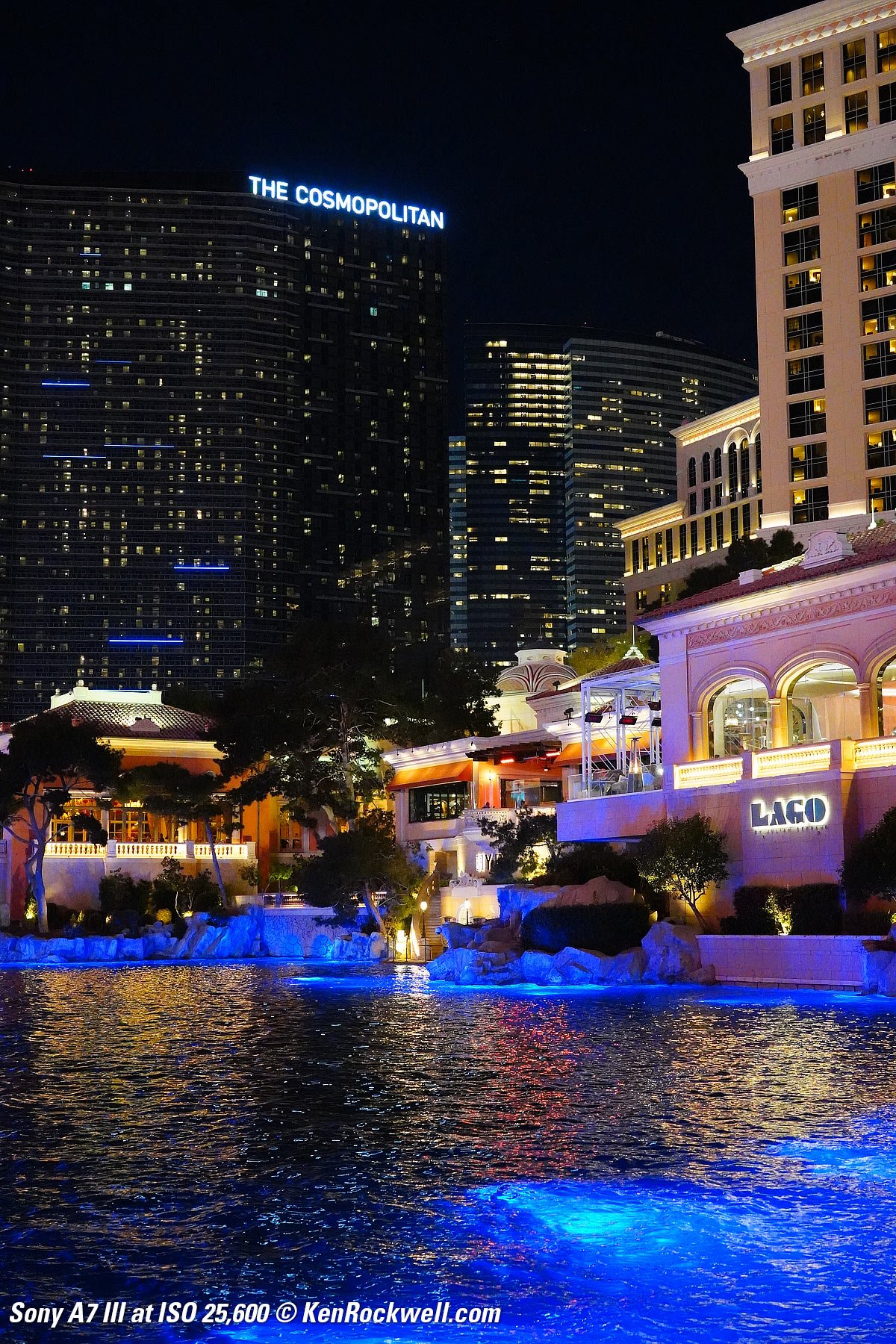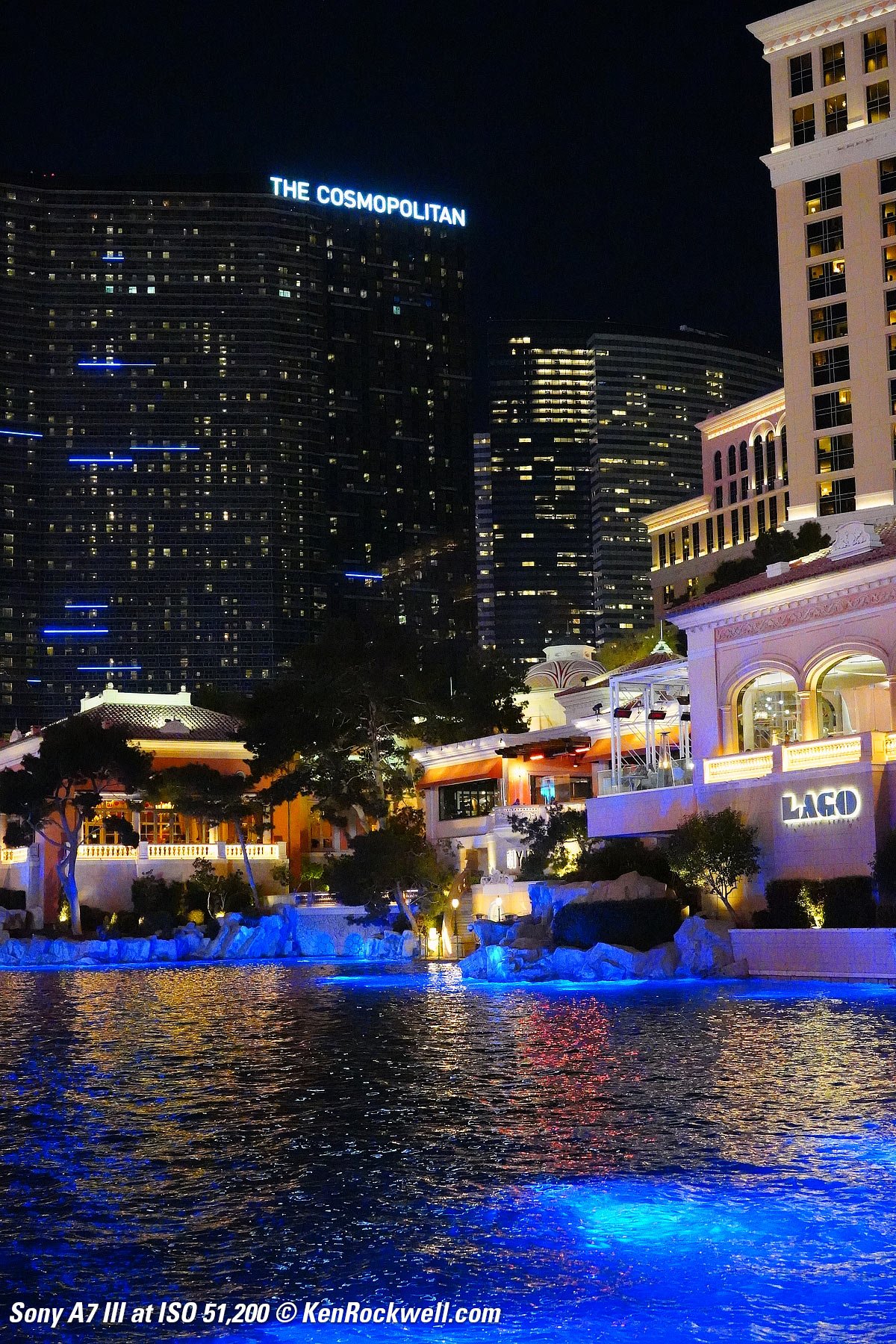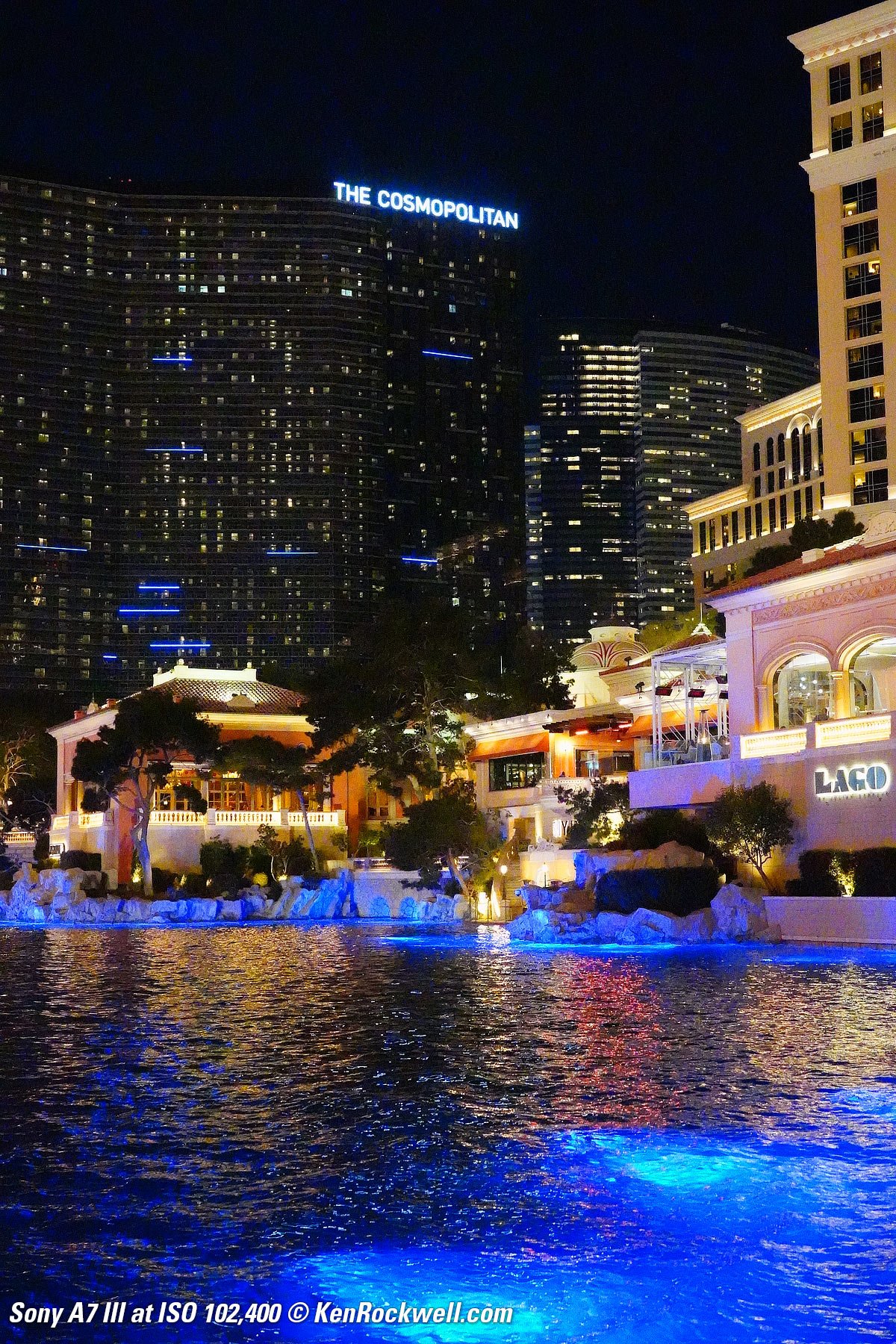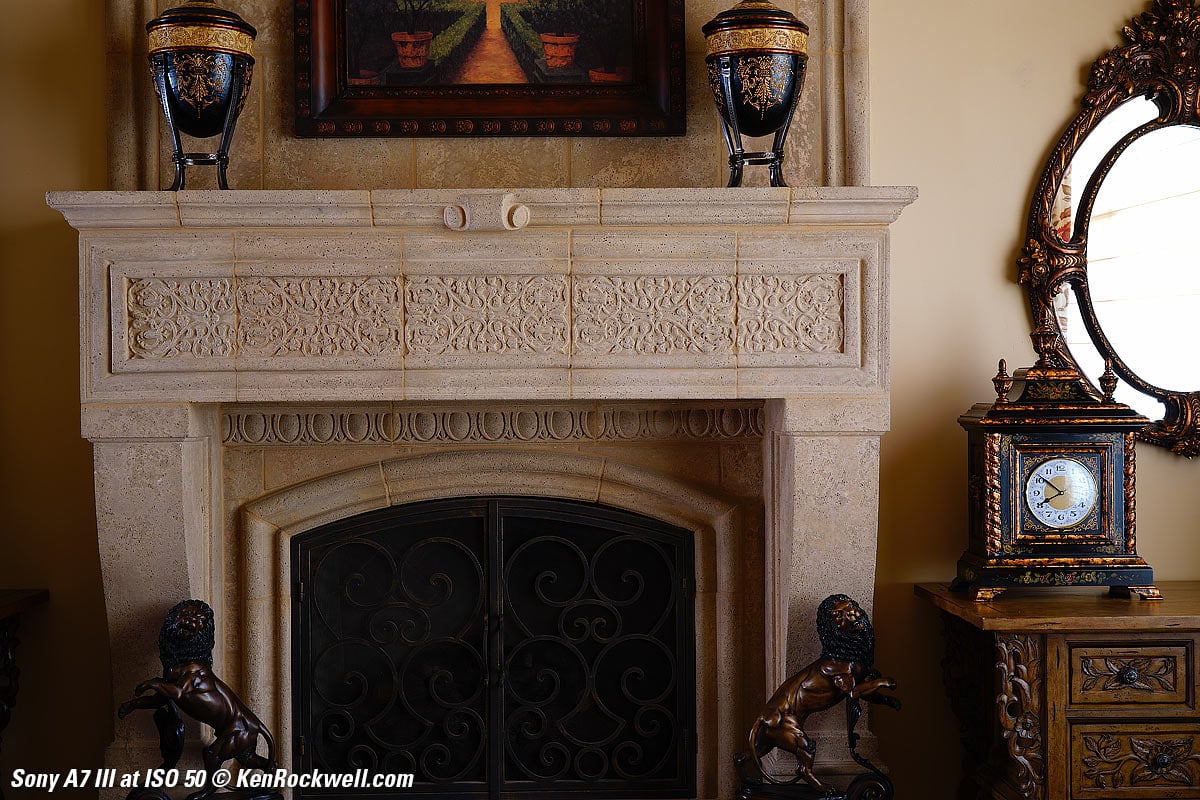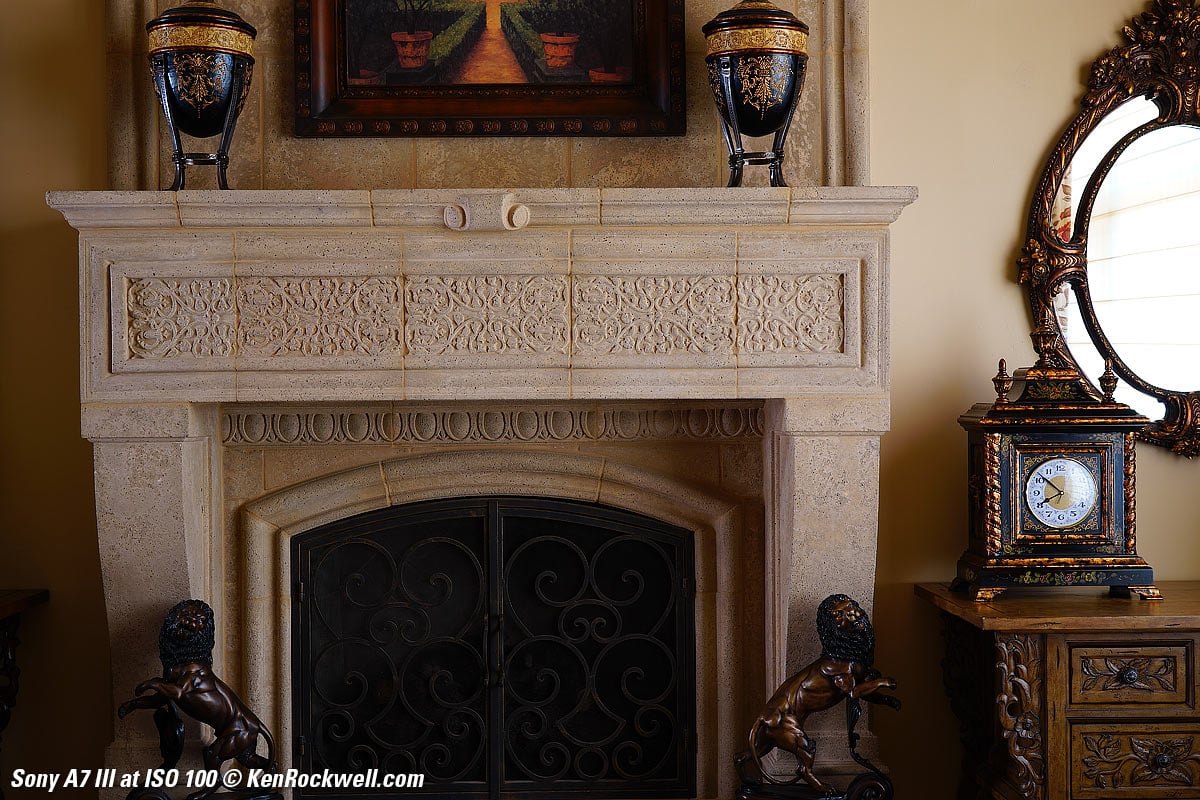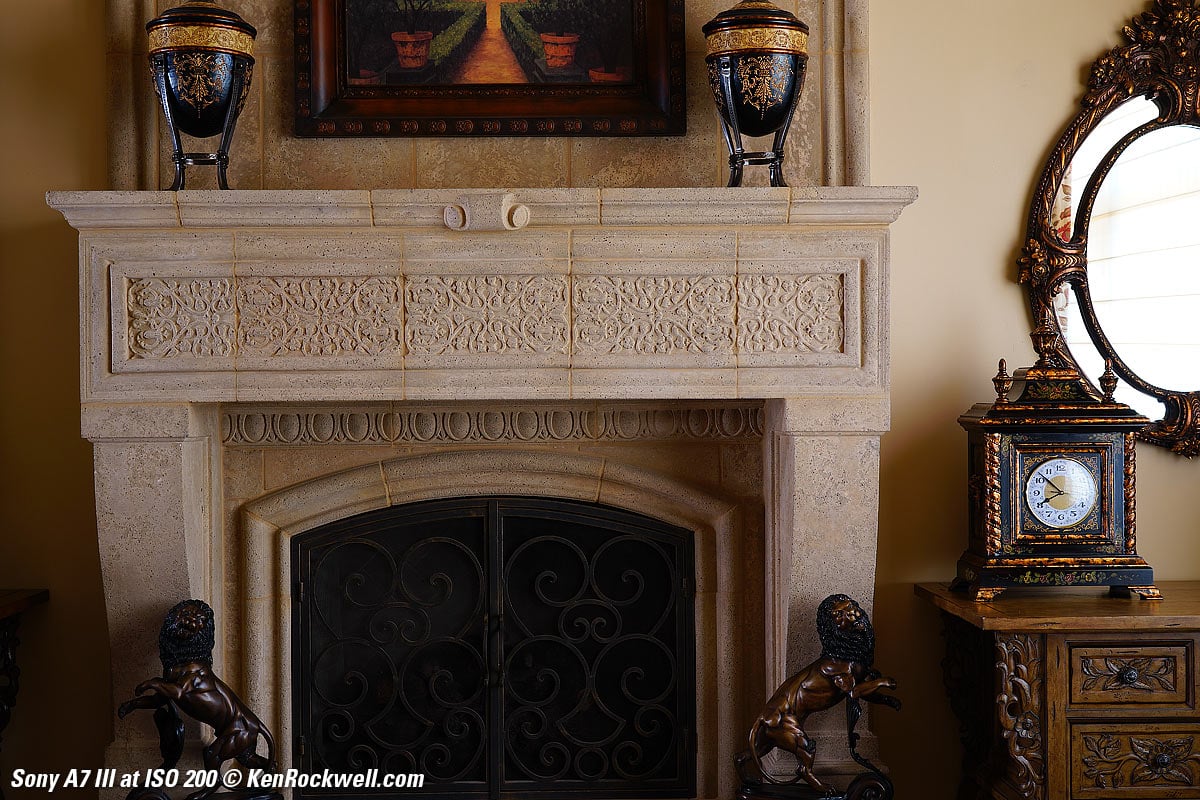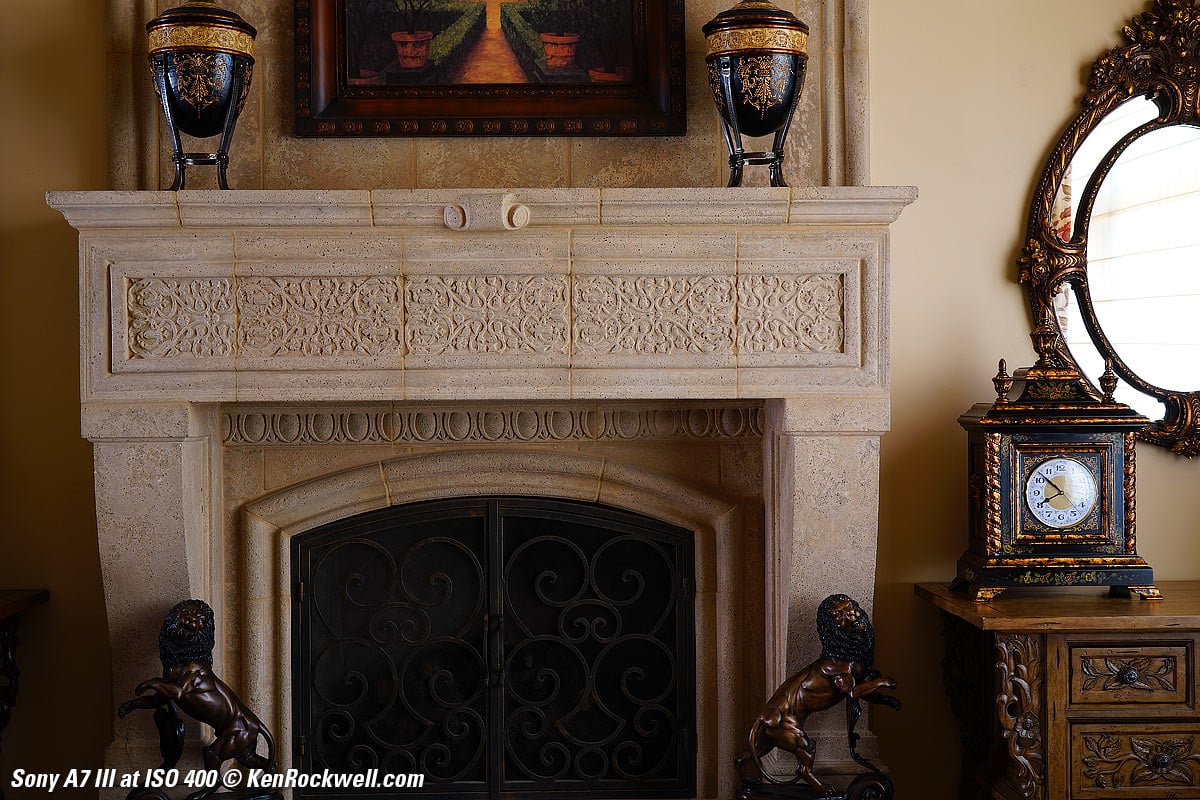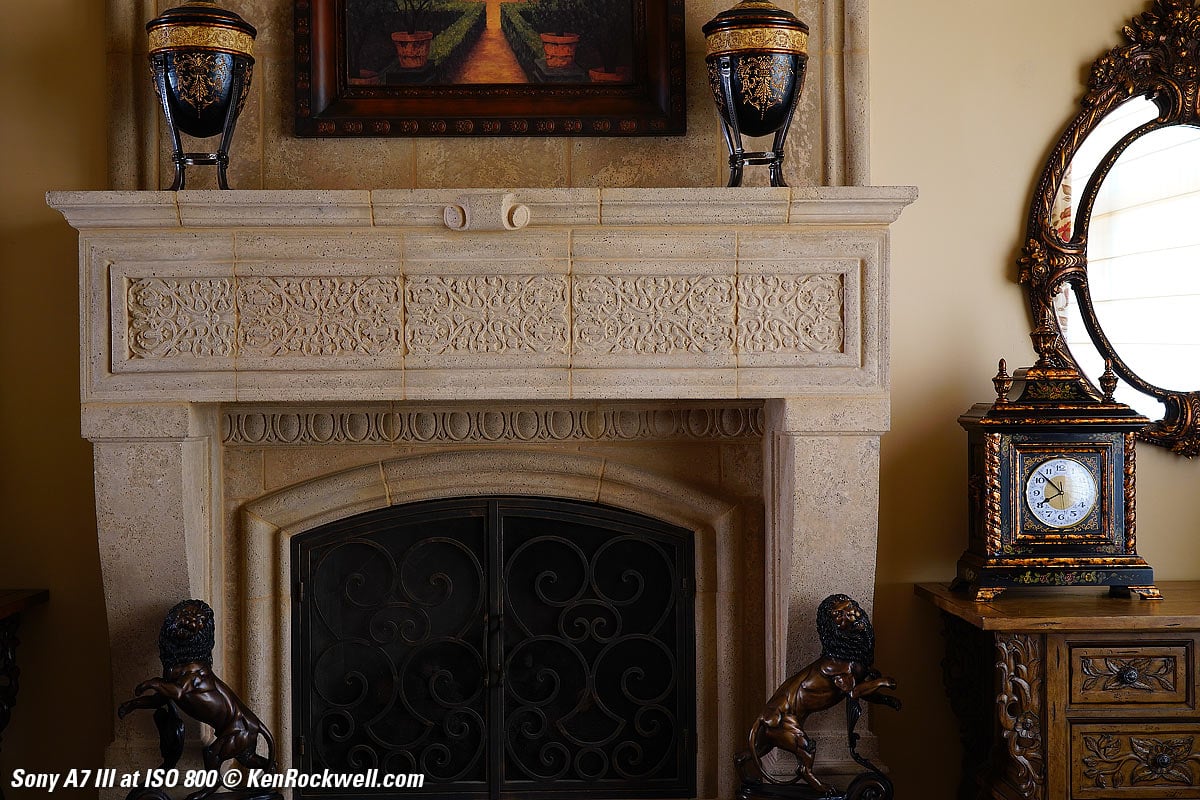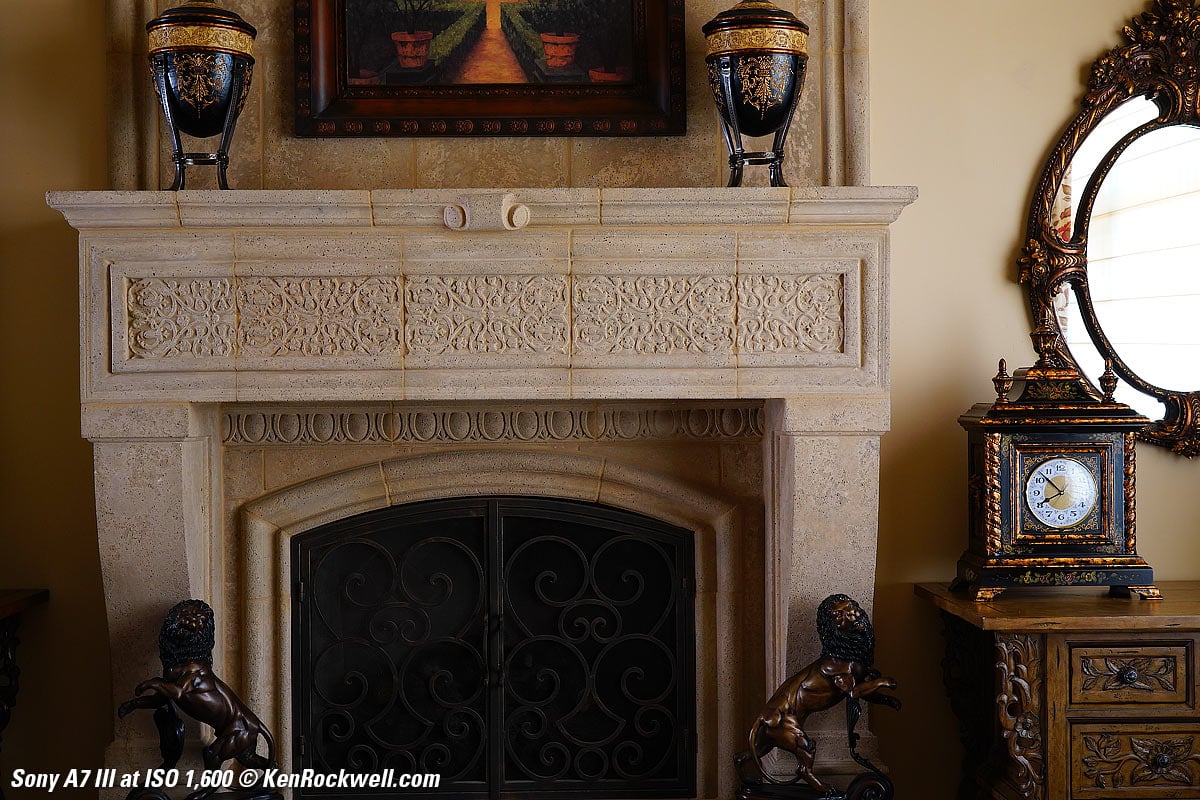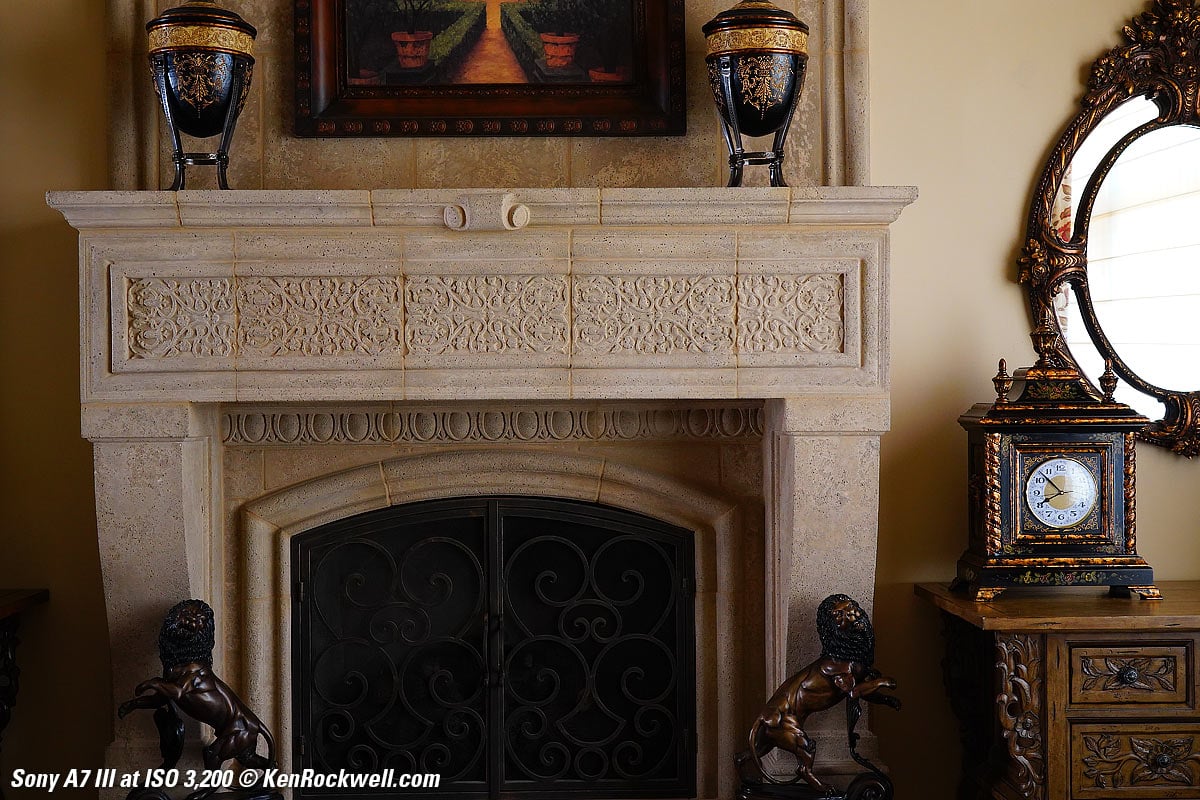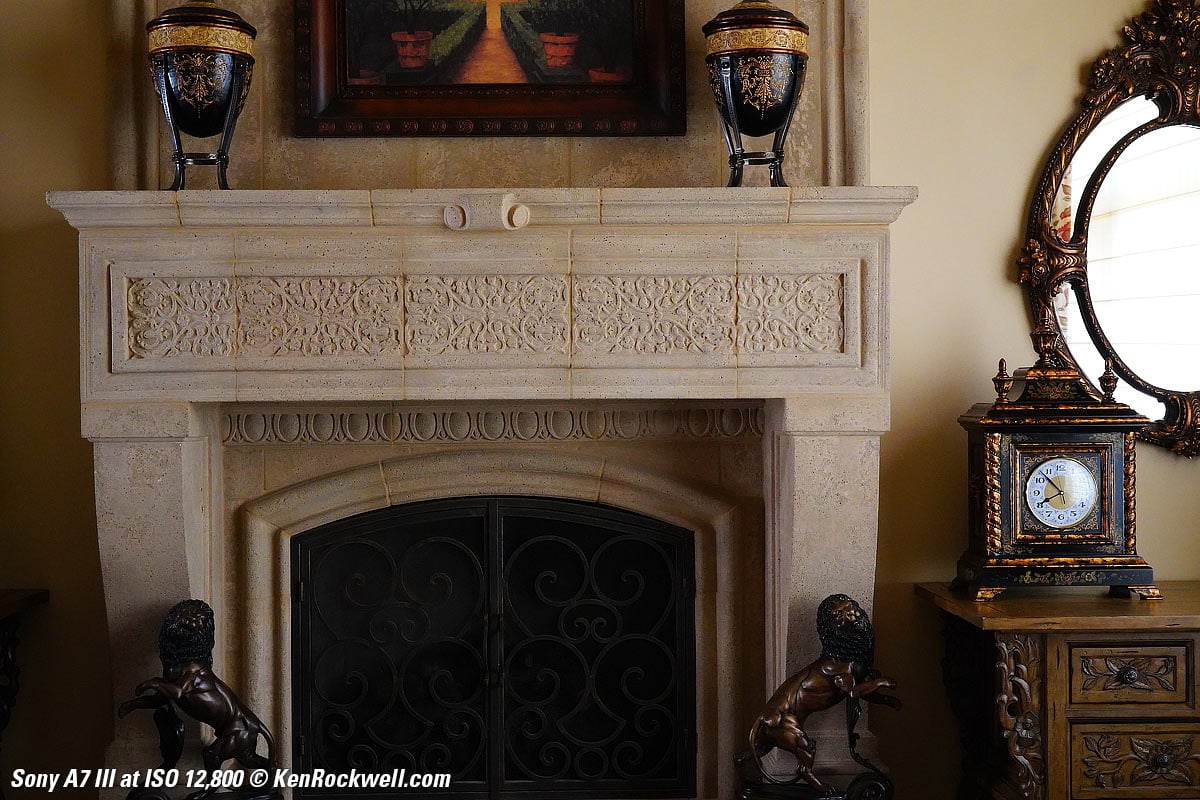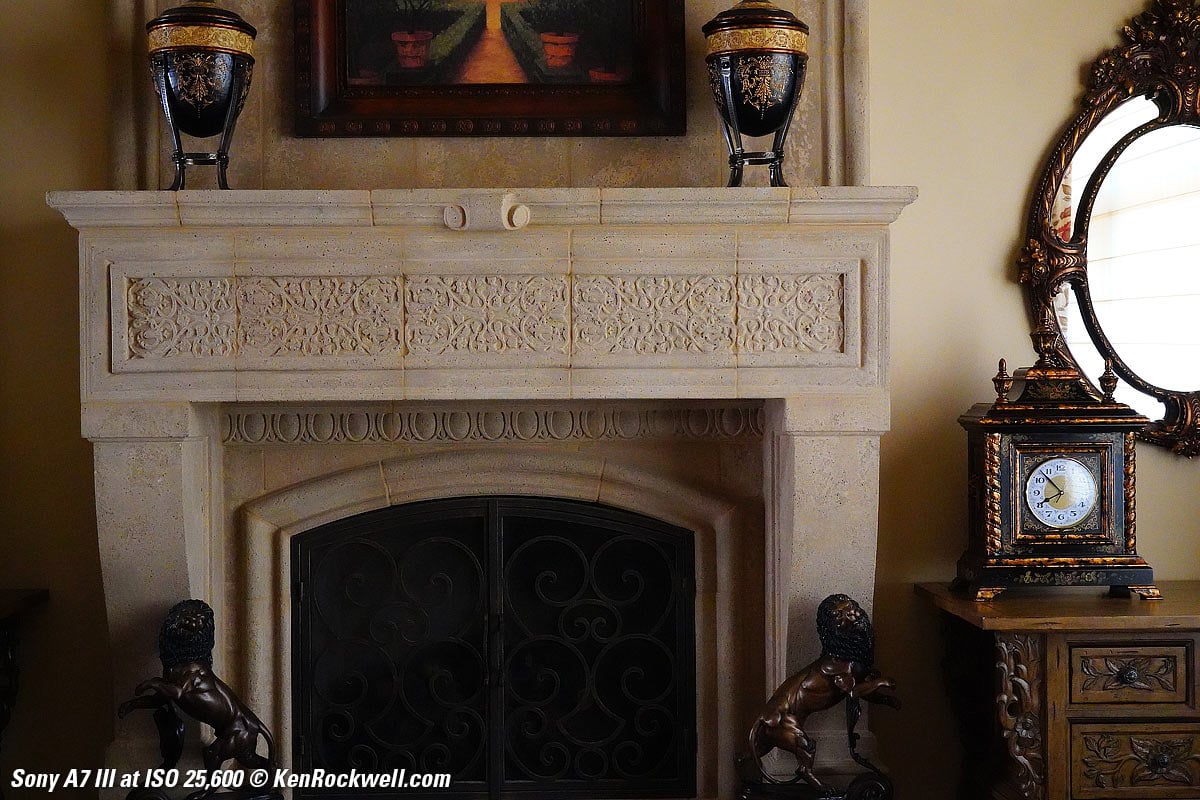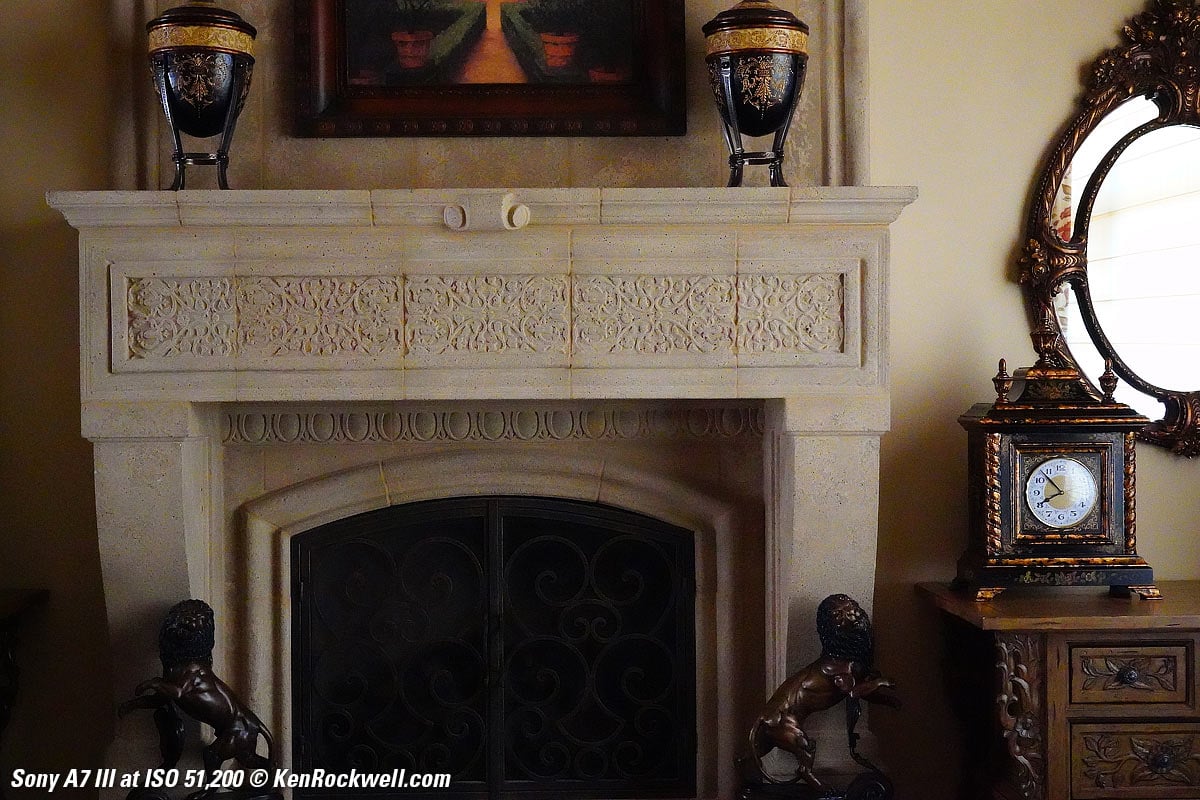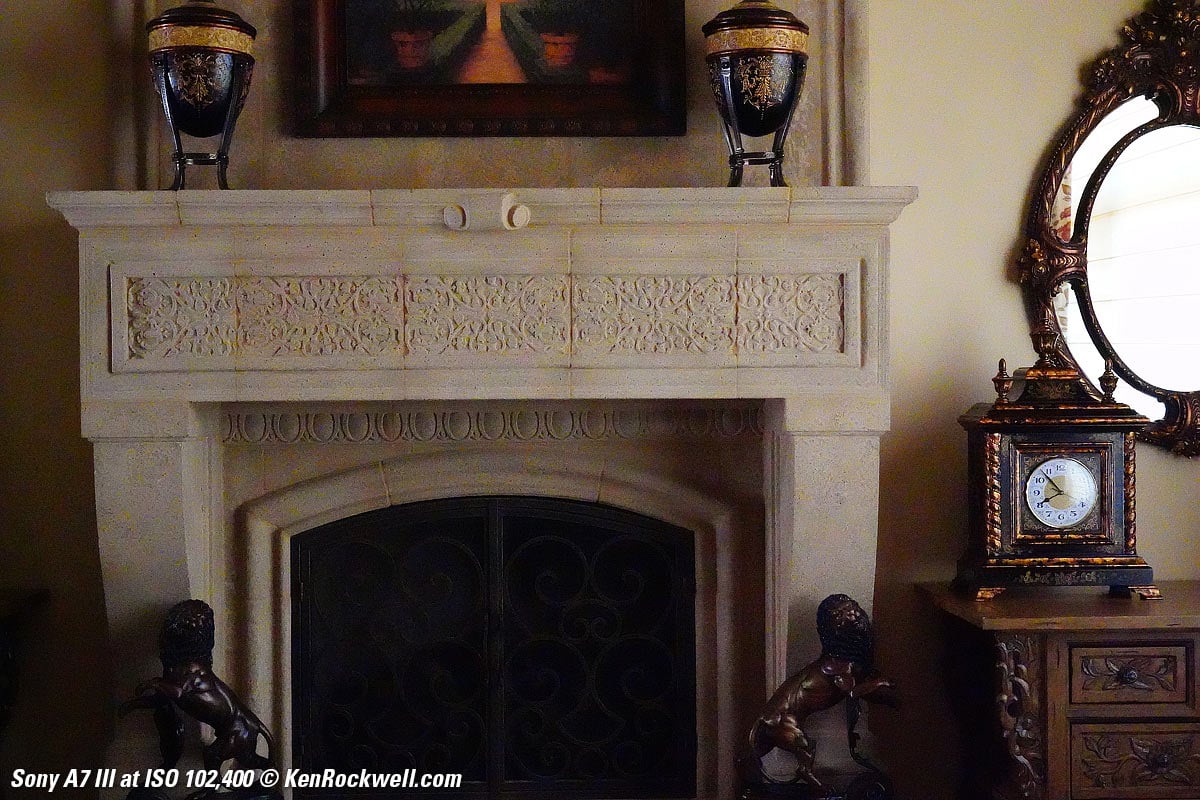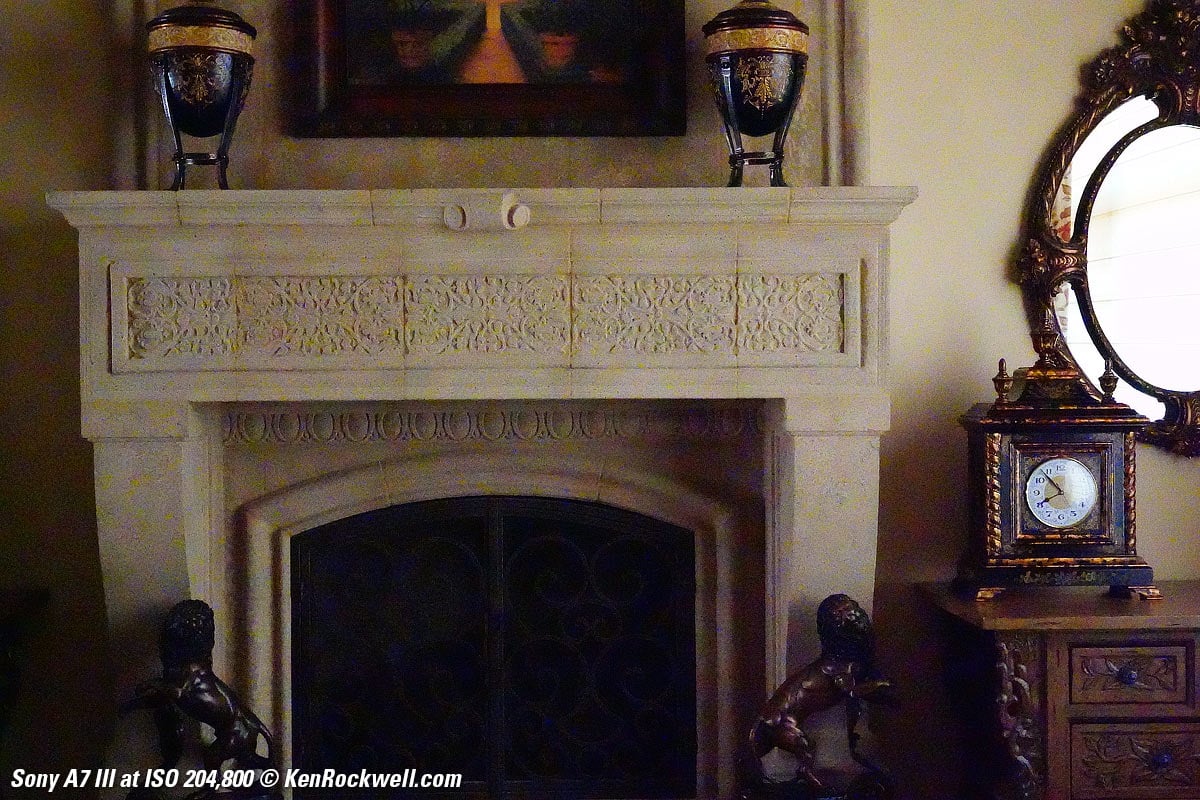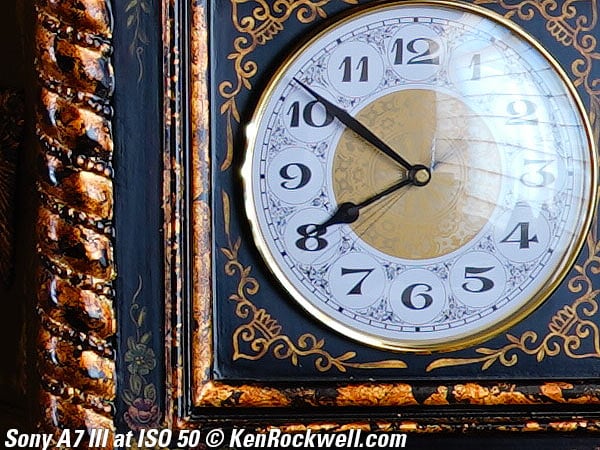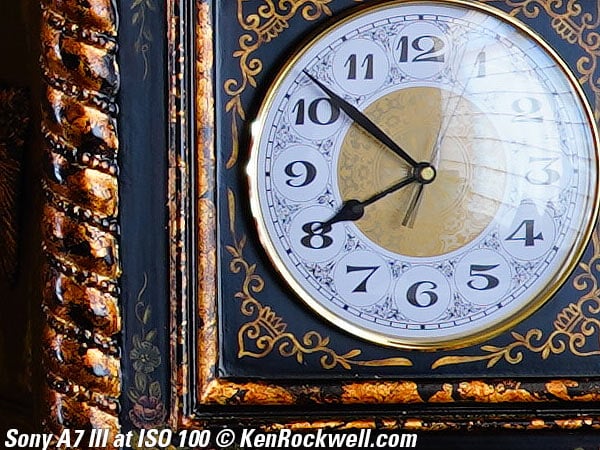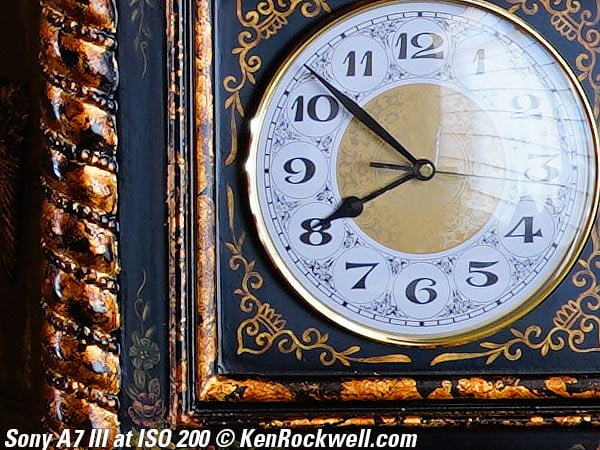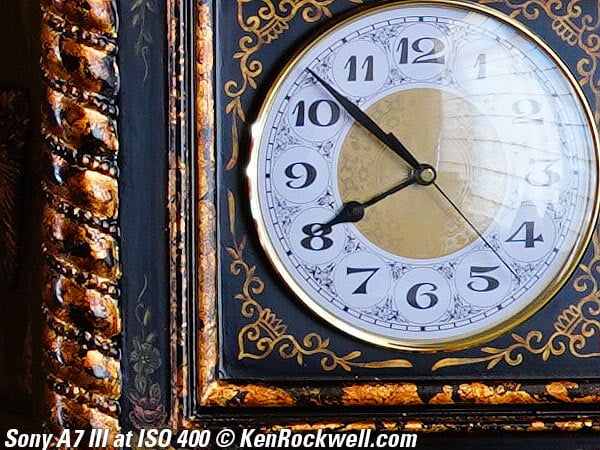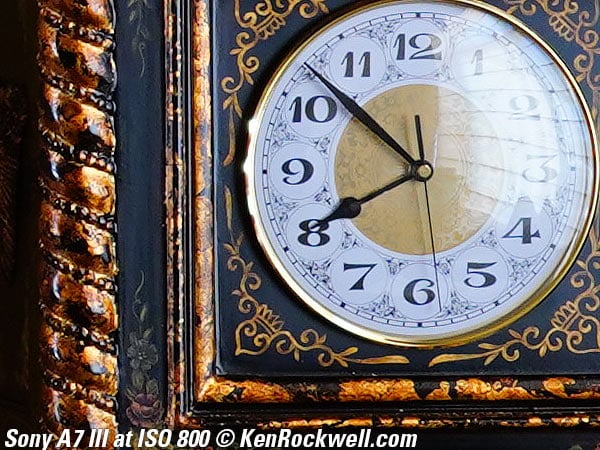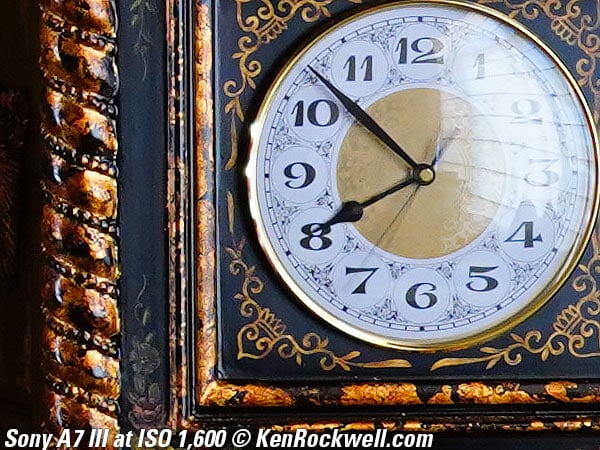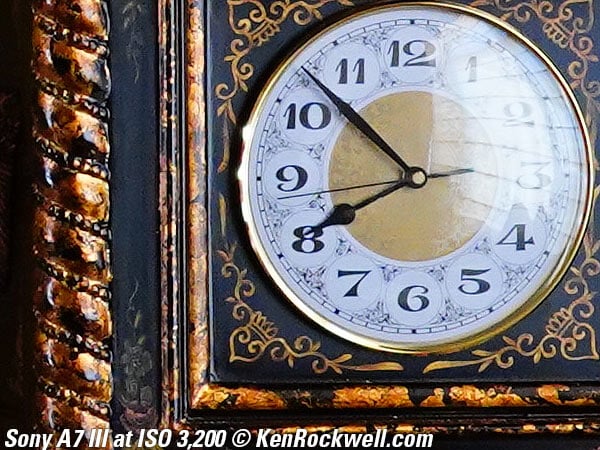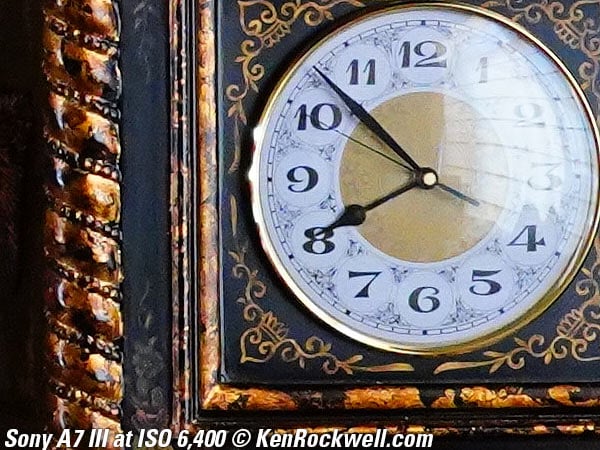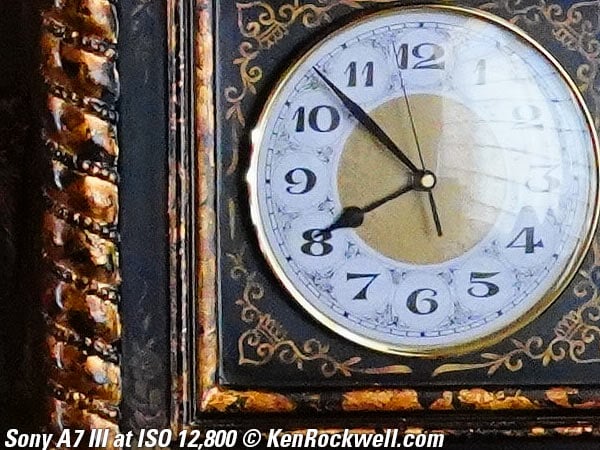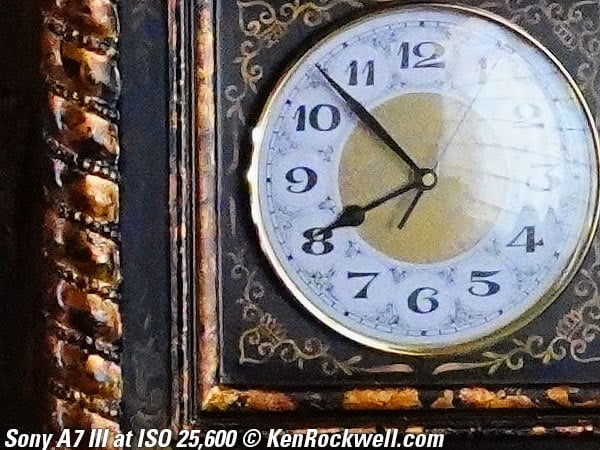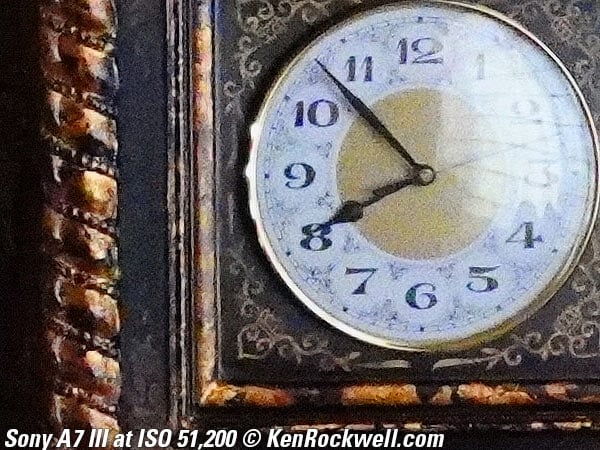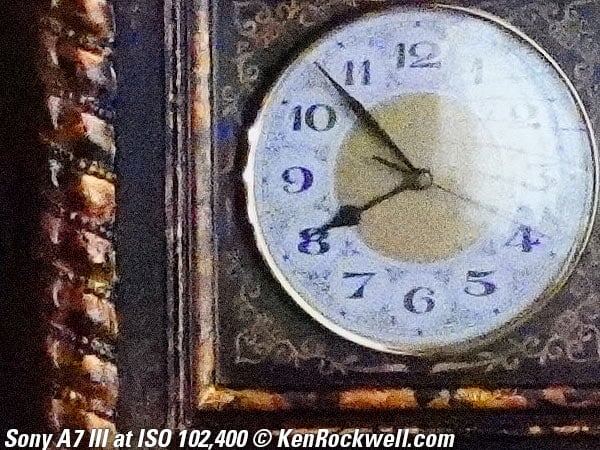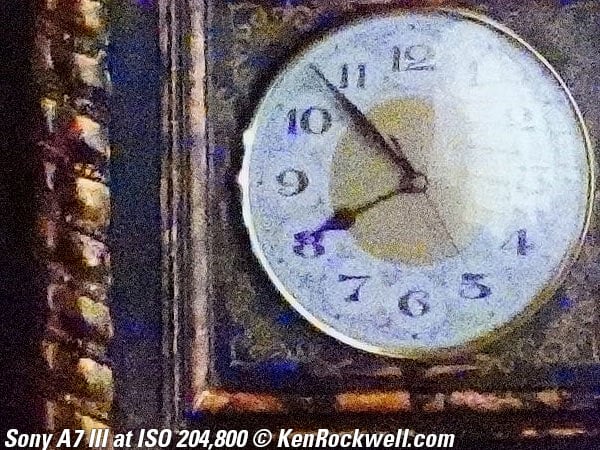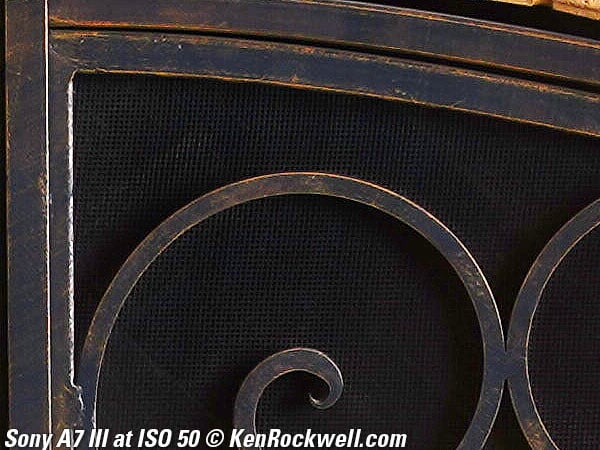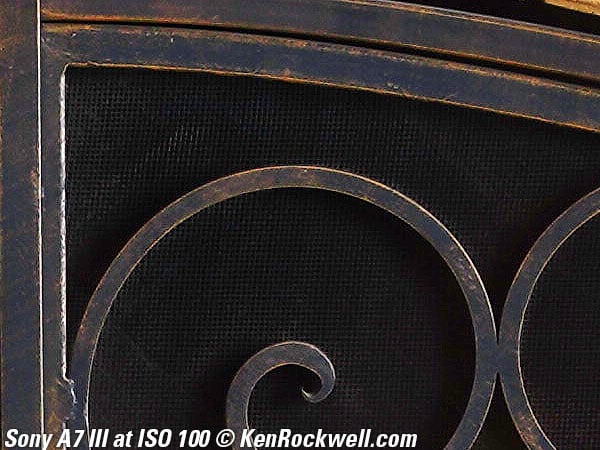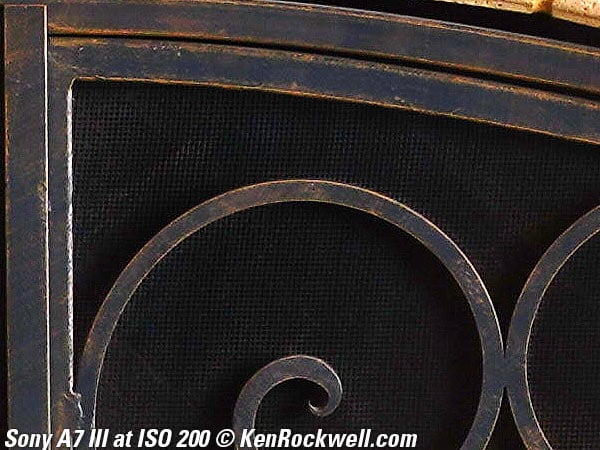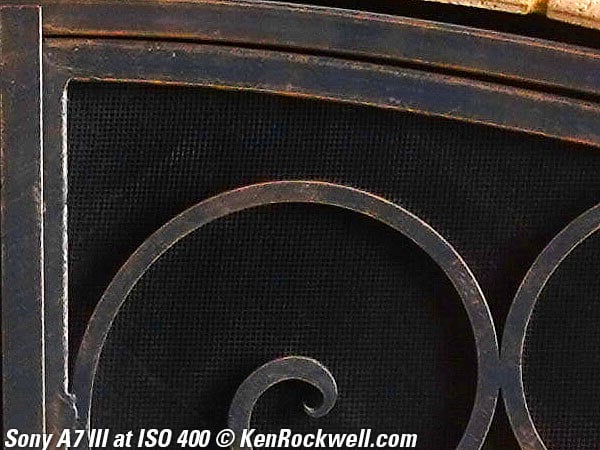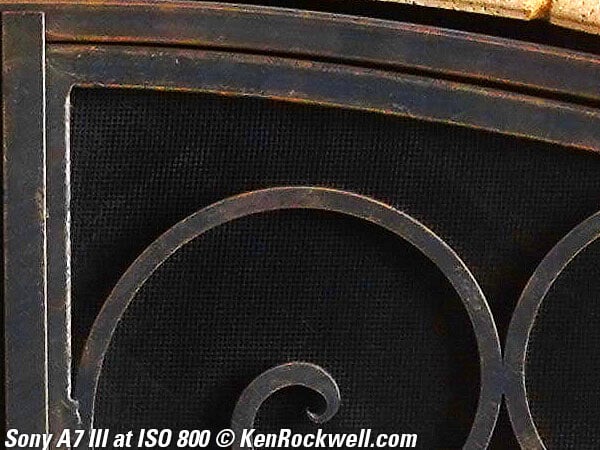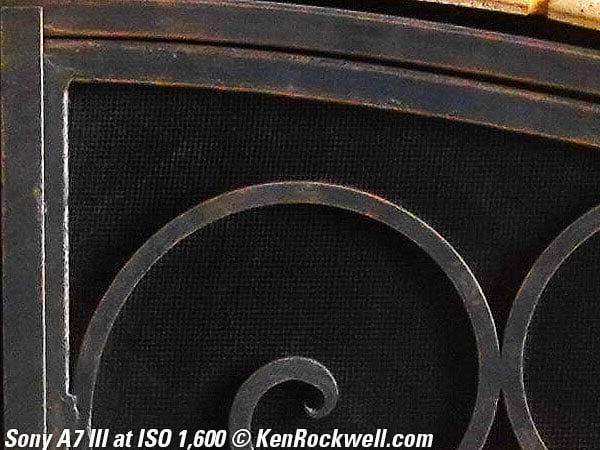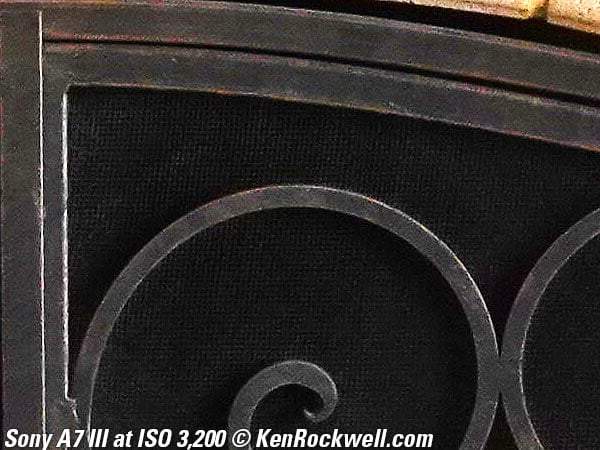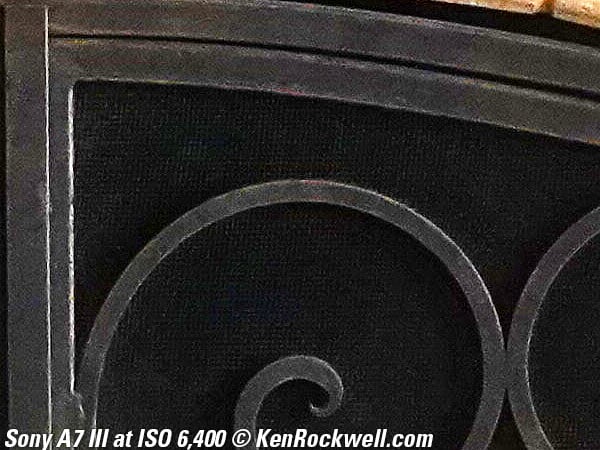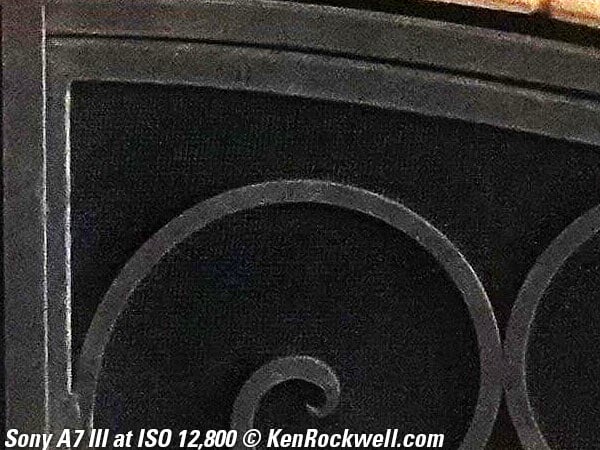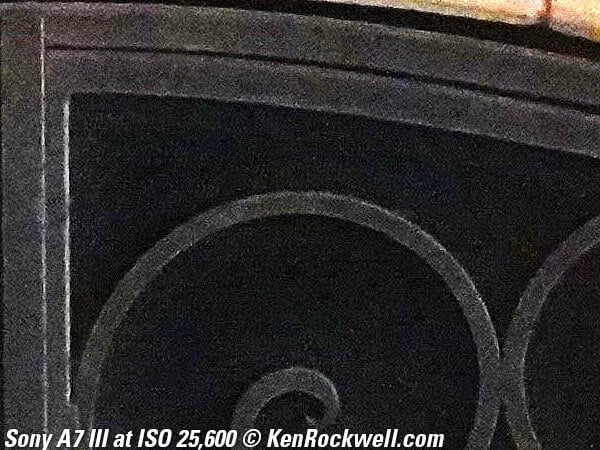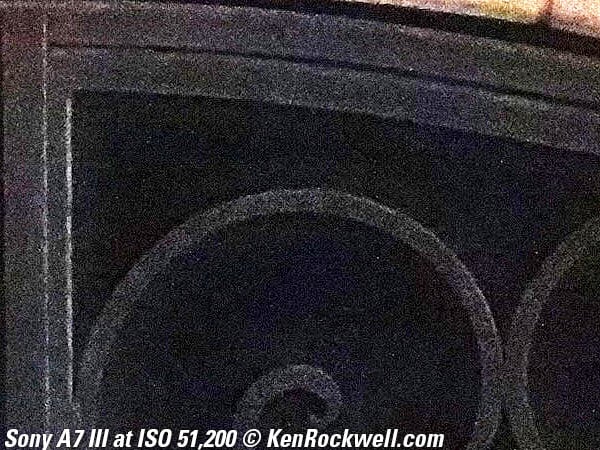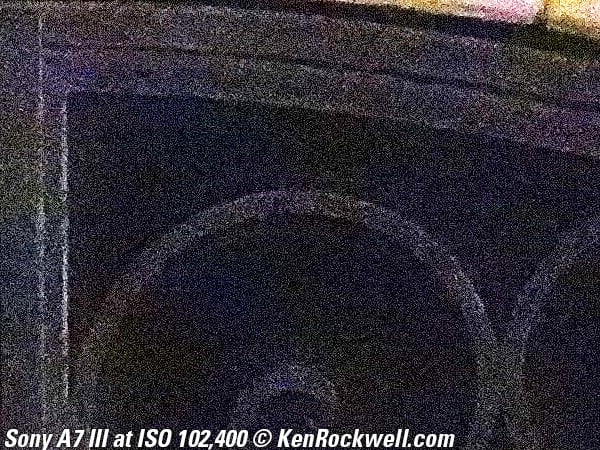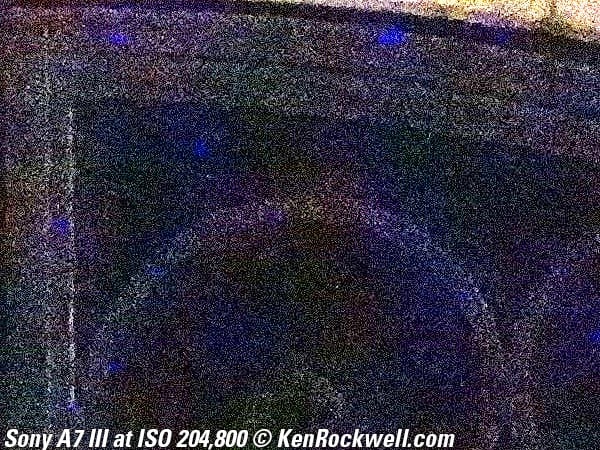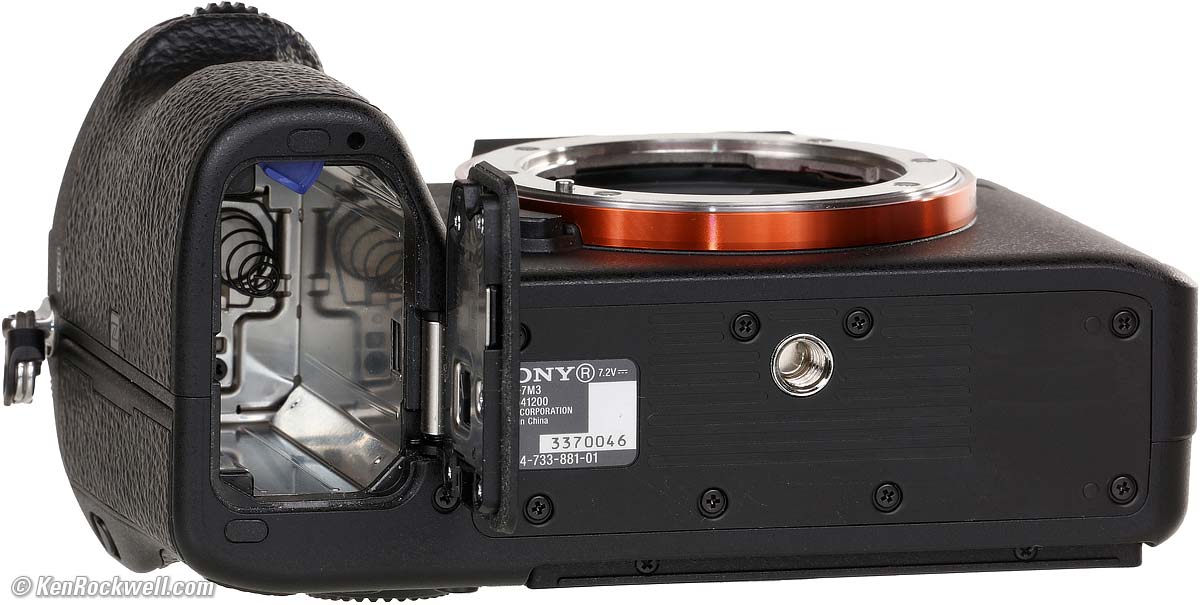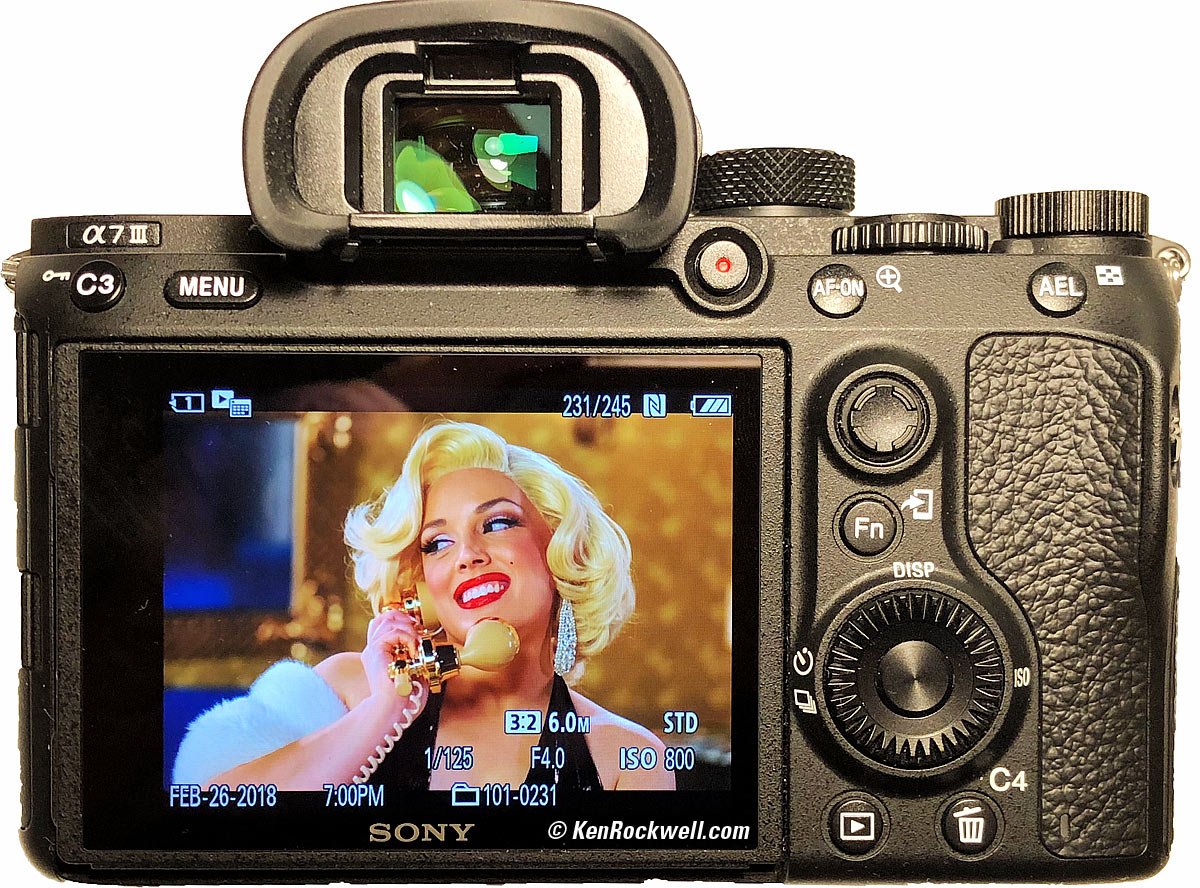Sony A7 III
24MP Stabilized Full-Frame, Silent 10FPS, ISO 204,800, 4K HDR Stereo
Sample Images Intro Lenses & Adapters
Specifications Accessories USA Version
Performance Compared User's Guide
Sony: A9 III A1 A9 II A9 A7R V A7R IV A7R III A7 IV A7 III A7R II A7S III A7c A7 II A6600 A6400 A6100 A6000 ZV-E10 RX10/4 RX100/7 RX100/6 Flash Lenses
Sony A7 III (22.9 oz./650g with battery and card, $1,798) and 24-105mm f/4 G OSS. I'd get mine at Adorama, at Amazon, at B&H or at Crutchfield. It also comes as a kit with the basic 28-70mm lens for $2,198 at B&H, at Adorama, at Amazon and at Crutchfield. Amazon also offers it as a kit with the 24-105/4G (the best choice), a kit with the Zeiss 24-70/4 or as a kit with the Sony 50mm f/1.8.
This all-content, junk-free website's biggest source of support is when you use those or any of these links to my personally-approved sources when you get anything, regardless of the country in which you live. Sony does not seal its boxes in any way, so never buy at retail or any other source not on my personally approved list since you'll have no way of knowing if you're missing accessories, getting a defective, damaged, returned, store demo or used camera. Buy only from the approved sources I use myself for the best prices, service, return policies and selection. Thanks for helping me help you! Ken.
November 2019 Sony Lenses Zeiss Nikon Canon Fuji LEICA All Reviews
Nikon vs Canon vs Sony Full Frame Mirrorless Compared.
Sony A7 III. bigger.
Sony A7 III. bigger.
Sample Images
Top Sample Images Intro Lenses & Adapters
Specifications Accessories USA Version
Performance Compared User's Guide
(More throughout the review and at High ISOs)
I only shoot my A7 III in its silent mode; everything you see, including the insane ISO 204,800 shots, are shot in the Silent mode — something last year's Sony A9 can't do.
ISO 100
Dune Buggies, Nelli Dunes, Nevada, 9:58 A.M., 28 February 2018. Sony A7 III with Sony 24-105mm f/4 G at 24mm at f/11 at 1/200 at Auto ISO 100, Perfectly Clear. bigger, full-resolution or camera-original © JPG.
Aerial View of Mandalay Bay Roof, Las Vegas, Nevada, 3:18 P.M., 28 February 2018. Sony A7 III with Sony 24-105mm f/4 G at 105mm at f/4 at 1/1,000 at Auto ISO 100, Perfectly Clear. bigger, full-resolution or camera-original © JPG.
ISO 125
Dune Buggy Flying over Dune, Nelli Dunes, Nevada, 10:36 A.M., 28 February 2018. Sony A7 III with Sony 24-105mm f/4 G at 24mm at f/6.3 at 1/500 at Auto ISO 125, as shot. bigger or camera-original © JPG.
ISO 400
Aerial Creosote Bush Inventory, Nevada Desert, 4:42 P.M., 28 February 2018. Sony A7 III with Sony 24-105mm f/4 G at 48mm at f/4 at 1/1,000 at Auto ISO 400, Perfectly Clear. bigger, full-resolution or camera-original © JPG. This is one of many images used by a joint effort between the BLM, Google and the Sierra Club to inventory each and every creosote bush in the Nevada Desert by mid-2019.
ISO 500
Aerial view towards Red Rock from the Las Vegas Strip at sunset, 5:14 P.M., 28 February 2018. Sony A7 III with Sony 24-105mm f/4 G at 34mm at f/4 at 1/1,000 at Auto ISO 500, Perfectly Clear. bigger, full-resolution or camera-original © JPG.
ISO 800
Hoover Dam, Nevada Desert, 4:57 P.M., 28 February 2018. Sony A7 III with Sony 24-105mm f/4 G at 24mm at f/4 at 1/1,000 at Auto ISO 800, Perfectly Clear. bigger, full-resolution or camera-original © JPG.
Marilyn Monroe on the Telephone — in color, 7:00 P.M., 26 February 2018. Sony A7 III with Sony 24-105mm f/4 G at 105mm at f/4 hand-held at 1/125 at Auto ISO 800, Perfectly Clear. bigger, full-resolution or camera-original © JPG.
ISO 1,000
Girl Stopped on Motorcycle in the Desert, 6:36 P.M., 26 February 2018. Sony A7 III with Sony 24-105mm f/4 G at 40mm at f/8 hand-held on the ground at 1/20 at ISO 1,000, Perfectly Clear. bigger, full-resolution or camera-original © JPG.
ISO 1,250
Aerial view of Frank Gery's brain-damaging Lou Rumor Brain Health Center, Las Vegas, 5:12 P.M., 28 February 2018. Sony A7 III with Sony 24-105mm f/4 G at 105mm at f/4 at 1/1,000 at Auto ISO 1,250, Perfectly Clear. bigger, full-resolution or camera-original © JPG.
ISO 2,000
Bellagio Hotel Turns Chinese, 8:06 P.M., 28 February 2018. Sony A7 III with Sony 24-105mm f/4 G at 30mm at f/4 hand-held at 1/30 at Auto ISO 2,000, Perfectly Clear. bigger, full-resolution or camera-original © JPG.
ISO 2,500
Paris by Moonlight in the Rain, 8:13 P.M., 28 February 2018. Sony A7 III with Sony 24-105mm f/4 G at 30mm at f/4 hand-held at 1/30 at Auto ISO 2,500, Perfectly Clear. bigger, full-resolution or camera-original © JPG.
ISO 5,000
Girl Dancing in the Rain, 3:18 P.M., 27 February 2018. cropped from horizontal Sony A7 III shot, Sony 24-105mm f/4 G at 67mm at f/4 at 1/500 at ISO 5,000, Perfectly Clear. bigger or full-resolution or camera-original © JPG.
ISO 6,400
Girl on a Ladder in the Rain, 2:16 P.M., 27 February 2018. Sony A7 III with Sony 100-400mm GM at 116mm at f/5 at 1/500 at ISO 6,400, Perfectly Clear. bigger or full-resolution or camera-original © JPG.
ISO 10,000
Las Vegas W Hotel under Moonlight, 8:23 P.M., 26 February 2018. Sony A7 III with Sony 24-105mm f/4 G at 24mm at f/4 hand-held at 1/30 at Auto ISO 10,000, Perfectly Clear. bigger, full-resolution or camera-original © JPG.
ISO 204,800!
At the Bellagio, Las Vegas, 8:22 P.M., 28 February 2018. Sony A7 III with Sony 24-105mm f/4 G at 44mm at f/5.6 at 1/400 at ISO 204,800, exactly as shot. bigger or camera-original © JPG. ISO 204,800 is at least ten times more than anyone needs; this is shot outdoors at night stopped-down at 1/400 of a second; I could be shooting sports here at 10 FPS!
Introduction
Top Sample Images Intro Lenses & Adapters
Specifications Accessories USA Version
Performance Compared User's Guide
|
I buy only from these approved sources. I can't vouch for ads below. |
Dollar-for-dollar, the Sony A7 III is the world's best full-frame mirrorless camera ever created. Look at the sample images; there is nothing this A7 III can't do, and do expertly. The A7 III is a brand-new, cutting-edge camera with exactly the same performance, features and quality — or more — as Sony's other two top full-frame cameras from last year, the A7R Mk III and A9, except that this A7 III sells for half the price! This A7 III runs in complete silence with full autofocus at 10 FPS!
Silent shooting opens many new worlds where photography was previously prohibited or inappropriate. If no one knows if you're shooting, you can shoot anything anywhere. In silent mode you can be blazing away at ten full 24 MP frames per second, even in raw with the A7 III's huge buffer, and no one will notice. By comparison, every single frame in the "quiet" modes of the pro Canon 1DX Mk II and Nikon D5 are so loud that I can hear them echo off the neighbor's houses. Pro DSLRs are the loudest cameras of all.
The images from this A7 III are the sharpest pixel-to-pixel JPG images I've seen from any camera. Sony never specifies if it has an anti-alias filter or not, but it's obvious to a trained professional looking at the camera-original samples at ISO 100 at Sample Images above that there is none. Bravo, Sony! These are all shot at the default sharpening settings.
The only real difference between this A7 III and the more expensive models from last year is that this A7 III runs at "only" the same 10 FPS as the A7R Mk III, not the 20 FPS of the A9, and has exactly the same 24 MP resolution of the A9, not 42 MP like the A7R Mk III.
Even better than either of those older cameras, this new 2018 A7 III runs from ISO 50 all the way to ISO 204,800 in its silent mode, which is the only way I ever shoot any of these cameras. The A7R III only goes to ISO 102,400 in its Silent mode, and the A9 only goes to ISO 25,600 in Silent. There's no restriction on slowest shutter speed in Silent mode in Continuous shooting with the A7R Mk III or this A7 III, but the A9 can't shoot at anything slower than 1/8 of a second.
Oh yes - this A7 III has more rated battery life than any other Sony mirrorless camera (all Sony cameras compared).
ISO 204,800 is ten times beyond insane, and the images and colors are still bright and bold, not all muted and crummy like other cameras at these beyond-insane ISOs. ISO 204,800 on this A7 III looks at least as good as ISO 51,200 did on the old A7S II, Sony's previous hyper-ISO leader.
This A7 III has the superior full-frame phase-detection AF system of the 20 FPS A9, not the lesser AF system of the A7R Mk III. This A7 Mk III has two card slots just like the A9 and A7R Mk III and retains all their features and image processing tricks.
It offers facial recognition autofocus over the entire frame, not just in the center of the picture like full-frame DSLRs. Autofocus is essentially instantaneous with the right lenses, and even with good consumer lenses it can track fast-moving targets in the dark at night. Presuming you activate face recognition in a menu, the A7-3 instantly recognizes faces, focuses on them and tracks them as they move around. It works flawlessly.
Running silently at 10 FPS at 24 MP is all I need for anything. Feel free to spend double if you want more pixels or more frames per second in the A7R Mk III or A9, but this A7 III loses nothing over last year's top cameras. This A7 III is a newer camera with fewer quirks than either of the A9 (limited performance in Silent Mode) or A7R Mk III (not quite full-frame AF).
This A7 III leaves thousands of dollars in your pocket so you can afford the top Sony lenses you deserve to take advantage of the A7 III's high performance.
While old-guard Canon and Nikon drop features from their less expensive models to try to get you to pay more because you're already invested in their systems, Sony is trying to wipe Nikon and Canon off the map by selling an absolute top-level full-frame camera at half the price of similar Nikon or Canon cameras. Sony is actually trying to make a camera so good we can't afford not to get it. For instance, the Canon 6D Mk II lacks facial recognition for viewfinder shooting so its AF and exposure are relatively poor for people pictures, and it only runs at a very noisy 6½ FPS, and Nikon's D750 also only runs at 6½ FPS, and not at all silently.
The Sony A73's images look great in every light and are always sharp and well exposed under very difficult and active conditions.
The AF system is magical; I never have to select sensors or systems manually; it just focuses and I can shoot.
When photographing people the A7 III has an instantaneous and clairvoyant ability to find and just focus on faces and track them as they move. If you're a people or event photographer, the A7 Mk III is going to make your life much simpler; you'll never have to manually select AF areas again. It's that good. Of course it has eyeball focus where it finds eyeballs as well as faces.
The new A7 III is a joy to shoot. Once set up, everything just goes, and the pictures look great. Better than DSLRs, you never need the rear LCD for anything; the electronic finder works for menu setting, playback and zooming-in on both playback and shooting!
Many buttons are programmable, and you can program them to do just about anything.
Sony has been the world's top maker of image sensors for many, many decades — long before digital cameras. The A7 III is so good and so inexpensive I'm starting to wonder if they're just trying to do anything to get us to buy their full-frame sensors, exactly as Kodak used to sell their cameras below cost just to get us to buy more film!
New since the A7 II
 Two card slots.
Two card slots.
 10 FPS, up from 5 FPS.
10 FPS, up from 5 FPS.
 Completely silent operation (set this in a menu).
Completely silent operation (set this in a menu).
 Maximum ISO 204,800, up from 25,600.
Maximum ISO 204,800, up from 25,600.
 Slowest shutter speed fully adjustable and programmable in Auto ISO.
Slowest shutter speed fully adjustable and programmable in Auto ISO.
 Bigger NP-FZ100 battery lasts about 1,500 shots in normal shooting (CIPA rated 610 single shots, or 710 if you use the rear LCD).
Bigger NP-FZ100 battery lasts about 1,500 shots in normal shooting (CIPA rated 610 single shots, or 710 if you use the rear LCD).
 4K video.
4K video.
 New thumb-nubbin controller on rear.
New thumb-nubbin controller on rear.
 Touch screen, but only for AF point selection.
Touch screen, but only for AF point selection.
 Ability to shoot-through flickering lighting.
Ability to shoot-through flickering lighting.
 Two separate AEL and AF-ON buttons, instead of just one button with a selector lever as on A7RII, A7SII, A7II and A7.
Two separate AEL and AF-ON buttons, instead of just one button with a selector lever as on A7RII, A7SII, A7II and A7.
 C3 button moved to left side of camera; it's on the right on A7RII, A7SII, A7II and A7.
C3 button moved to left side of camera; it's on the right on A7RII, A7SII, A7II and A7.
 Higher resolution electronic viewfinder.
Higher resolution electronic viewfinder.
 In-camera 5-axis sensor-shift stabilization now claims 5 stops improvement.
In-camera 5-axis sensor-shift stabilization now claims 5 stops improvement.
 14-bit raw.
14-bit raw.
 Shoots 4K video using the entire 36mm width of the image sensor.
Shoots 4K video using the entire 36mm width of the image sensor.
 XAVC S high-nitrate video formats for 60~100 MBPS video.
XAVC S high-nitrate video formats for 60~100 MBPS video.
 Under- and over-crank video from 1 FPS to 120 FPS, MOS (without sound).
Under- and over-crank video from 1 FPS to 120 FPS, MOS (without sound).
Good
 Completely silent in Silent Mode, but this mode isn't on by default. See How to Set Silent Mode.
Completely silent in Silent Mode, but this mode isn't on by default. See How to Set Silent Mode.
 Two card slots.
Two card slots.
 Magnificent electronic finder: always big, bright, sharp and wonderful in any light. Super-bright in daylight, and dims perfectly indoors and at night.
Magnificent electronic finder: always big, bright, sharp and wonderful in any light. Super-bright in daylight, and dims perfectly indoors and at night.
 Hybrid AF system uses phase-detection for speed and contrast detection for ultimate precision and accuracy.
Hybrid AF system uses phase-detection for speed and contrast detection for ultimate precision and accuracy.
 Battery life seems almost unlimited.
Battery life seems almost unlimited.
 Solid mostly metal construction.
Solid mostly metal construction.
 Even the regular mechanical shutter only moves at the ends of exposures. There's never any need for a special vibration-free mode; it always works this way. Suck on that, LEICA!
Even the regular mechanical shutter only moves at the ends of exposures. There's never any need for a special vibration-free mode; it always works this way. Suck on that, LEICA!
 Excellent high ISO performance.
Excellent high ISO performance.
 Facial recognition works well, but only after you find it and turn it on.
Facial recognition works well, but only after you find it and turn it on.
 In-finder 2-axis level works great for keeping horizons and vertical lines as they should be.
In-finder 2-axis level works great for keeping horizons and vertical lines as they should be.
 In-camera, as-shot automatic lens vignetting, lateral chromatic aberration and distortion correction.
In-camera, as-shot automatic lens vignetting, lateral chromatic aberration and distortion correction.
 Almost any lens of any brand or age can be adapted to work - but with no lens corrections.
Almost any lens of any brand or age can be adapted to work - but with no lens corrections.
 Stereo microphone built-in.
Stereo microphone built-in.
 3.5mm powered Mic and headphone jacks.
3.5mm powered Mic and headphone jacks.
 Can extract stills from video, in-camera after it's shot. In other words, shoot 4K video and you can pull-out 8MP stills shot at 30 FPS.
Can extract stills from video, in-camera after it's shot. In other words, shoot 4K video and you can pull-out 8MP stills shot at 30 FPS.
 Bluetooth & NFC.
Bluetooth & NFC.
Bad
 If you set it to record to two cards simultaneously as I do for backup, it locks-up and won't shoot if you remove either card or either card fills or has an error. It should just shoot to either card that has space, not leave you dead in the water if one dies; that's the whole point of this mode.
If you set it to record to two cards simultaneously as I do for backup, it locks-up and won't shoot if you remove either card or either card fills or has an error. It should just shoot to either card that has space, not leave you dead in the water if one dies; that's the whole point of this mode.
 Sony's usual disorganized menu system.
Sony's usual disorganized menu system.
Missing
 Silent electronic shutter is a game-changer, but won't work with flash. Flash sync speed is still only 1/250.
Silent electronic shutter is a game-changer, but won't work with flash. Flash sync speed is still only 1/250.
 No built-in flash.
No built-in flash.
 No auto brightness control for the rear LCD (but great auto brightness control for the electronic finder).
No auto brightness control for the rear LCD (but great auto brightness control for the electronic finder).
 No "3" position on the Mode dial for the third memory recall; instead this position is a SCN mode that's not on the A9 or A7R III.
No "3" position on the Mode dial for the third memory recall; instead this position is a SCN mode that's not on the A9 or A7R III.
 No Mode dial lock (good!).
No Mode dial lock (good!).
 No GPS, but a free app may let it tag from your phone.
No GPS, but a free app may let it tag from your phone.
 No shutter speed dial.
No shutter speed dial.
 No ISO dial.
No ISO dial.
 No square, 4:5 or 4:3 crops; 16:9 only.
No square, 4:5 or 4:3 crops; 16:9 only.
 No way to back up the complete camera state as Nikons can do.
No way to back up the complete camera state as Nikons can do.
 Touch screen lets you select movie focus areas, but doesn't work for setting the camera in the menu screens or do much of anything else.
Touch screen lets you select movie focus areas, but doesn't work for setting the camera in the menu screens or do much of anything else.
 No more swept panoramas (an iPhone does this better anyway).
No more swept panoramas (an iPhone does this better anyway).
Sony A7 III. bigger.
Lenses & Adapters top
Top Sample Images Intro Lenses & Adapters
Specifications Accessories USA Version
Performance Compared User's Guide
Lens Compatibility
Lens Mount, Sony A7 III. bigger.
The A7 III uses the Sony E-Mount, formerly called the NEX mount, whose shallow 18mm flange focal distance allows better lens designs than DSLRs do — the same advantage rangefinder cameras have, as well as allowing just about any lens to mount with an adapter.
The A7 III works best with all the lenses made by Sony, Zeiss and others for Sony's mirrorless E-Mount.
If you mount a Sony or Zeiss APS-C lens, it automatically uses only the central APS-C section of the full-frame sensor. You'd never know, since all the displays just look right. It's that seamless, but sort of silly to waste most of this camera's sensor area with an APS-C lens.
Highest Performance Lenses
Sony A7 III and 85mm f/1.8. bigger.
The popular Sony 12-24mm f/4 G, Sony 16-35/2.8 GM, Sony 24-70/2.8 GM, Sony 24-105mm f/4 G, Sony 70-200/2.8 GM and Sony 100-400 GM are all extraordinary, and the very best you can get for the A7 III. They focus just about instantly, and are super sharp at every setting.
If you want the high performance for which you're paying a premium with your A7 III, be sure to get the best lenses for it.
Zeiss' zooms are older designs. I'd pass on the Zeiss zooms; the Sony G and GM are newer and better on this camera.
See also my list of Best Sony Lenses.
Sony's Adapters
Sony's own adapters work pretty well, but know that none of Sony's A-mount lenses are as good as the latest E-mount lenses, especially when used on E-mount.
LA-EA2: Discontinued.
LA-EA3: only for lenses with built in AF motors.
The LA-EA3 is a great adapter and allows just about full performance with any Sony Alpha DSLR or Minolta MAXXUM 35mm SLR - but only if it's one of the very few lenses with an internal autofocus motor.
If the lens has its own AF motor, with this adapter you should get full communication and AF and everything.
LA-EA4: Recommended for all Sony Alpha and Minolta MAXXUM lenses.
The LA-EA4 is everything the LA-EA3 is, and adds its own AF motor to drive every Sony Alpha and Minolta MAXXUM lens for full autofocus — for every lens back to 1986. It works with lenses both with or without internal AF motors.
Sony Alpha and Minolta MAXXUM lens work great with the LA-EA4 on the A7 III. They focus very fast, and even Auto ISO and Program Shift all follow your zooms focal length.
While phase-detection points only are active around the center of the frame, Face Recognition sees and focuses on faces anywhere. Oddly the face box stays gray or white, not locking-on in green unless the face is near the center of the frame, but it works anyway.
Lenses stay wide open most of the time for framing and focus and only stop down for the exposure. I program my C1 button for aperture preview.
Other Brand Adapters
Sony A7 III and LEICA SUMMICRON-M 35mm f/2 on adapter. bigger.
While you can adapt any lens of any brand or age to the A7 III, they won't work as well as native Sony or Zeiss FE lenses, or Alpha or MAXXUM lenses with the LA-EA4 adapter.
Lenses that perform magnificently on their own brand of camera may or may not autofocus that well adapted to Sony. If you demand the best performance, just use the same brand of lens as your camera. Adapters should never be your go-to for the best performance. Don't expect the best results for sharpness or for autofocus from other-brand adapters if you're picky.
Adapters are great for fun; you can get adapters cheap for any kind of lens, but not only may autofocus be iffy, adapted wide-angle lenses usually aren't very sharp on the sides at large apertures because Sony's full-frame mirrorless sensors are optimized for lenses with a curved fields. Most other adapted lenses won't seem very sharp on the sides at large apertures due their flat fields not interfacing well with the curved fields needed by Sony's sensors on these cameras. If you get the center in focus, the sides will probably be off, and if you get the sides in focus, the center will be off. This is more of a problem with wider lenses and at large apertures; stop a lens down and the sides will come into better focus.
See also my Meta Bones Adapter Review, which is the best I've found for using Canon lenses — but if you deserve the best, you're going to wind up buying Sony's G and GM lenses eventually.
Specifications
Top Sample Images Intro Lenses & Adapters
Specifications Accessories USA Version
Performance Compared User's Guide
Sensor
Sensor and shutter assembly, Sony A7 III. bigger.
24 MP full-frame 23.8 × 35.6mm back-illuminated CMOS sensor.
1.5:1 aspect ratio.
15-stop dynamic range.
Sony never mentions if it has an anti-alias filter or not, and my observations confirm the pixel-to-pixel sharpness as being so high that it doesn't appear to have an anti-alias filter. Just look at the camera-original ISO 100 sample images which were shot as JPGs in-camera: they are insanely sharp; I've never seen sharper JPGs come from any camera. My tests on other cameras that were sold in versions both with and without these filters (very slight difference between Nikon D800 and D800E and no visible difference between Canon 5DS and 5DSR) has shown little to no difference even when camera makers charge for taking out the filter, so don't worry about it.
No anti-alias filter.
Anti-reflection coated.
Ultrasonic cleaner and anti-static coating.
Mechanical "5-axis" sensor-shift stabilizer claims 5 stops improvement.
Sony A7 III. bigger.
Autofocus
693 point on-sensor phase-detection.
Contrast-detection.
Hybrid AF uses phase-detection for speed and fine-tunes with contrast detection when it can.
AF range LV -3 to +20 with an f/2 lens.
LED AF illuminator, 10'/3m range.
Face recognition, but only if you activate it.
4.7x and 9.4x magnifiers.
Electronic Viewfinder
0.78x with 50mm lens.
100% coverage.
0.5" (13mm) OLED.
2,359,296 dots XGA.
Auto and manual brightness control.
5 steps of manual color temperature shift.
-4 to +3 diopters.
Eyepoint: 18.5mm from the eyepiece frame, 23mm from the eyepiece
Light Meter
1,200 zone evaluative, entire screen Averaging, Center-Weighted, Spot, Spot standard or large or highlight-weighted.
Meter range LV -3 to +20 with an f/2 lens.
Shutters
Vertical metal mechanical focal-plane, or silent electronic.
1/8,000 to 30s and Bulb.
Still Frame Rates
It runs to 10 FPS with either the mechanical or silent electronic shutters.
Continuous High +: 10 FPS.
Continuous High: 8 FPS.
Continuous Mid: 6 FPS.
Continuous Lo: 3 FPS
Frame Buffer
163~177 frames JPG.
89 frames raw.
79 frames raw + JPG.
40 frames uncompressed raw.
Still Image Sizes
Cropped Sizes
The A7 III automatically crops the full-frame down to APS-C if you mount an APS-C lens, or you can set this manually (MENU > Camera 1 > page 1/14 > APS-C/Super 35mm > ON), and either of these 1.5:1 formats may also be set to a 16:9 crop.
Full Frame
6,000 x 4,000 pixels (Large, 24 MP), native.
3,936 x 2,624 (Medium, 10 MP).
3,008 x 2,000 (Small, 6 MP).
APS-C
3,936 x 2,624 (Large, 10 MP), native.
3,008 x 2,000 (Medium, 6 MP).
1,968 x 1,312 (Small, 2.6 MP).
Image Formats
JPG, raw or raw + JPG.
JPG: Extra Fine, Fine or Standard.
Raw: 14-bit compressed or uncompressed.
Video & Audio
Stereo Mic built-in.
XAVC S
File Format
MPEG-4 AVC/H.264 XAVC S ver.1.0 format compliant video with LPCM 48 kips 16-bit stereo audio.
Rates & Sizes
3,840 x 2,160 (4K): 29.97p, 25p or 23.976p at 100 or 60 MBPS
1,920 x 1,080: 119.88p or 100p at 100 MBPS or 60 MBPS; 59.94p,50p, 29.97p, 25p or 23.976p at 50 MBPS.
AVCHD v 2.0
File Format
MPEG-4 AVC/H.264 video with Dolby Digital 2 channels, equipped with Dolby Digital Stereo Creator.
Rates & Sizes
1,920 x 1,080: 59.94p, 28 MBPS, PS; 59.94i, 24 MBPS, FX; 59.94i, 17 MBPS, FH; 23.976p, 24 MBPS, FX, 23.976p, 17 MBPS, FH; 50p, 28 MBPS, PS; 50i, 24 MBPS, FX; 50i, 17 MBPS, FH; 25p, 24 MBPS, FX; 25p, 17 MBPS, FH.
MP4
File Format
MPEG-4 AVC/H.264 video with stereo MPEG-4 AAC-LC.
Rates & Sizes
1,920 x 1,080: 59.94p or 50p at 28 MBPS; 29.97p or 25p at 16 MBPS
1280 x 720: 29.97p or 25p at 6 MBPS.
Under- and Over-crank (slow-mo and fast-motion)
Sony calls this S&Q, for "Slow and Quick" motion.
MOS (recorded without sound) only.
1, 2, 4, 8, 15, 30, 60 and 120 FPS in the pulled-down ("NTSC") modes.
1, 2, 3, 6, 12, 25, 50 and 100 FPS in the straight ("PAL") modes.
ISO
Stills, regular mechanical or silent electronic shutterISO 50 ~ 204,800.
ISO 100 ~ 51,200 is optimum.
Video
Regular: ISO 100 ~ 51,600.
Auto ISO
Upper and lower limits selectable from ISO 100 to ISO 204,800 in full stops (limited to ISO 32,000 for video).
Slowest shutter speed settable in full stops from 1/8,000 to 30s in full stops, as well as an Auto setting that varies with the lens focal length. The Auto Slowest Shutter Speed setting my be varied ±2 stops slower or faster than the lens' focal length.
Storage
Card door, Sony A7 III. bigger.
Two slots:
Slot 1 (bottom): SD, SDHC or SDXC, UHS-I and UHS-II compliant.
Slot 2 (top): SD, SDHC and SDXC, UHS-1 compliant, or Memory Stick PRO Duo.
LCD
Flipping LCD, Sony A7 III. bigger.
2.95" TFT LCD.
921,600 dots.
Flips, but can't flip 180º for self-portraits. Only flips up 107º or down 41.º
Does not swing left or right.
Manual brightness control only. There is a "Sunny" mode, too.
Touch screen to move focus area, but not for menus or playback.
Connectors
Connectors, Sony A7 III. bigger.
Left Column
3.5mm microphone jack with plug-in power.
Right Column, from top
3.5mm stereo headphone jack.
HDMI Micro-D.
USB 3.1 type C connector.
USB Micro B "Multi Connector."
WiFi
IEEE 802.11 b/g/n
Infrastructure mode
2.4 GHz.
WEP, WPA-PSK and WPA2-PSK.
Wi-Fi Protected Setup (WPS) or Manual setup.
NFC
NFC Forum Type 3 Tag compliant.
Blue tooth
v4.1.
2.4 GHz.
Model No. WW361847.
Sony A7 III Main Circuit Board. bigger.
Battery
Sony NP-FZ100 rechargeable lithium ion battery included.
Rated 610 still shots with the viewfinder (CIPA).
Rated 710 still shots with the rear LCD (CIPA).
or
115 minutes of video (125 minutes using the rear LCD), CIPA.
Sony NP-FZ100 battery. enlarge.
Sony NP-FZ100 battery. enlarge.
It's 7.2V, 2,280 mAh, 16.4 W.
Charging
The A7 III charges its battery in-camera via USB.
You can use any USB type C or USB Micro B cord and any USB source (try the USB sockets in your car, for instance) to charge.
Sony graciously includes it's own 1.5 amp USB adapter for use at home if you don't already have a drawer full of these:
Included Sony AC-UUD12 universal USB AC power adapter. bigger.
AC Adapter
Just plug your camera into any USB source — easy!
Camera Power Consumption
With Viewfinder
Consumes 3.2W for stills; 4.9W for video.
With Rear LCD
Consumes 2.8W for stills; 4.7W for video.
Size
3⅞ x 5 x 2⅞ inches HWD overall.
95.6 x 126.9 x 73.7 mm HWD overall.
3⅞ x 5 x 2½ inches HWD, excluding the rear viewfinder protrusion.
95.6 x 126.9 x 62.7 mm HWD, excluding the rear viewfinder protrusion.
Weight
22.9 oz. (650g) with battery and card.
Quality
Made in China:
Bottom, Sony A7 III. bigger.
Magnesium alloy top cover, front cover, internal frame and rear cover.
The grip area has been reinforced with magnesium alloy.
Sony claims weather seals around most of the buttons and dials, but there are no seals on the card and connector covers.
Bottom, Sony A7 III. bigger.
Announced
Monday, 26 February 2018 at 5:11PM at WPPI in Las Vegas.
Promised for
10 April 2018.
Included
A7 III camera & body cap.
FDA-EP18 eye cup, attached.
Black plastic hot shoe cover, attached.
Shoulder strap.
NP-FZ100 rechargeable lithium ion battery (also fits A9 and A7 III as of March 2018).
AC-UUD12 universal USB AC power adapter.
Micro USB Type-C cable.
Model Numbers
Sony's official "ILCE-7M3" model number is printed on the certification sticker on the bottom. It's also how the model is listed in the EXIF information.
Its more casual "α7 III" designation is on the front and back.
Operating Temperature
0 ~ 40º C (32 ~ 104ºF).
Price
November 2019 ~
$1,798, body only.
$1,998, kit with basic 28-70mm lens.
$2,696, kit with Zeiss 24-70mm f/4.
$3,196, kit with my favorite 24-105mm G.
$3,996, kit with 24-70mm f/2.8 GM.
February 2018 ~ October 2019
$1,998, body only.
Accessories
Top Sample Images Intro Lenses & Adapters
Specifications Accessories USA Version
Performance Compared User's Guide
The A7 III takes the same accessories as its A9 and A7R III brethren.
Included
AC-UUD12 universal USB AC power adapter.
Optional
Sony BC-QZ1 Battery Charger
I love this charger; it's faster than in-camera USB charging.
If you get this external charger you can charge two batteries at once; one in the camera via USB and the other in this charger.
Although I prefer a folding plug charger, this universal corded charger works anywhere with the right cord.
A nice feature is the three-segment battery status indicator. It shows about 2/3 charged here:
Sony BC-QZ1 Battery Charger with NP-FZ100 battery. bigger.
Sony BC-QZ1 Battery Charger. bigger.
VG-C3EM Vertical Battery Grip
The VG-C3EM vertical grip takes-over the existing battery bay and holds two NP-FZ100 batteries for double the shooting life, therefore rated 1,220 single shots with the viewfinder or 1,420 shots with the rear LCD.
Magnesium alloy exterior.
Dust and moisture resistant.
You can charge the batteries in the grip via the camera's USB connector.
GP-EX1 Grip Extender
This extends the left-hand grip down a little bit, making it easier to grab a camera with all your fingers. Without this extender, a man's hand typically will only be able to wrap three fingers around the camera's grip, not all four. (The thumb isn't a finger.)
CLM-FHD5 External HD Monitor
This is a 5" monitor made to bracket onto your camera so you can see what you're shooting at arm's length, just like real studio cameras.
NPA-MQZ1K Multi Battery Adapter
This is a crazy adapter that holds up to four batteries!
Not only does it hold them all so you can just keep on shooting, it also can charge up to four batteries in 8 hours.
It may seem expensive, but it comes included with two NP-FZ100 batteries to get you started. Along with the one that comes with your A9, you're already up to three.
PCK-LG1 Glass Screen Protector
ECM-XYST1M Stereo Mic
An inexpensive stereo Mic which attaches to the A9's hot shoe for much better audio than the built-in mics.
XLR-K2M or XLR-K1M XLR Mic/Line Adapters
Each of these includes a professional stereo XLR preamplifier that slides into the A9's hot shoe and allows using professional microphones or mixing consoles. It's pretty nifty, with auto and manual gain controls, selectable lo-cut filters, line and mic level inputs and +48V phantom power.
Each also includes an ECM-XM1 shotgun microphone.
Getting a Legal USA Version
Top Sample Images Intro Lenses & Adapters
Specifications Accessories USA Version
Performance Compared User's Guide
(Applies in USA only)
So long as you get yours from an authorized source, you'll get a legitimate USA version with a warranty from Sony USA.
USA versions are marked "UC2" above the UPC bar codes. Be sure the serial number on the bar code matches the one on your camera.
USA versions also include a warranty slip which specifically mentions the USA and has Sony's USA phone number in your completely unsealed box.
If you do something stupid like buy from a source that is not an approved source, you may get a gray market version, which has no warranty in the USA and will lack this code on the box or the USA warranty sheet.
Just to keep things interesting, you'll notice that the A7 III has a much larger and longer warranty sheet, no longer just a card, because this warranty now has many more exclusions and limitations than ever before. It specifically adds, about halfway down, that even if you have all this paperwork, if you didn't get your A7 III from an approved (by Sony) dealer, then the warranty doesn't apply.
Buying gray market or what looks like a USA model from an unauthorized dealer is always taking a chance compared to getting a legal USA version from an authorized dealer. If you can save $750, then by all means go for it, but if you only get $100 off, I wouldn't risk it.
Performance
Top Sample Images Intro Lenses & Adapters
Specifications Accessories USA Version
Performance Compared User's Guide
Overall Autofocus Ergonomics Exposure
Finder High ISOs Auto ISO Auto White Balance
Image Stabilization Lens Corrections
Sound, Noise & Vibration Mechanics
Rear LCD Playback Data Power & Battery
Overall
● This new A7 Mk III is as good as Sony's slightly older top-of-the-line A9 and A7R Mk III for half the price. No features, innovations or image qualities are missing; this A7 III is the top Sony for the thinking man. The only significant differences between the more expensive cameras are resolution and frame rates, and the A7 III's 24MP and 10 FPS are enough to shoot anything.
● Unlike Canon and Nikon who pull features from their less expensive cameras, this A7 III just costs less than the top models, but performs exactly as well.
Just look at the Sample Images.
Autofocus
● Autofocus is great. It's fast, sure and usually totally automatic.
● With face recognition the A7 III autofocuses throughout the entire frame, not just the central area, but you do have to enable Face Detection before it works.
Facial Recognition: Actual view through the Sony A7 III's electronic viewfinder. bigger.
See the little green box over the girl's face? The A7 III finds any and all faces, locks-on and tracks them wherever they are in the finder, not just the center like a full-frame DSLR.
It's important to use a top G or GM lens whose internal AF system is optimized for the Sony mirrorless system; if you use an older or adapted lens, you'll miss much of what the A7 III can do.
● While Sony claims only "93% coverage" for the phase-detection pixels, for people photos face recognition covers the entire frame, and as far as I'm concerned, 93% is the whole frame for phase detection I never focus on the edges, but I do need to focus on the top and bottom and sides which my full-frame DSLRs don't let me do.
Phase Detection: Actual view through the Sony A7 III's electronic viewfinder. bigger.
In this image the A7 III has only selected some of the central phase-detection AF points; it can select them anyplace in the image and it's truly satisfying to see them chase a fast-moving subject all over.
Set the A7 III to AF-C for continuous AF to let the system shine.
Turn on Face Detection (MENU > Camera 1 > page 6/14 > Set Face Prty in AF > ON), and the A7 III finds the closest eye and just focuses on it all by itself, with no need to select autofocus areas manually:
With general subjects, zillion little green boxes magically fly all over your subject and the camera just focuses on it.
Set the DMF focus mode with the Fn button to allow manual focus override during AF-S (single) autofocus. It's so smart that it will magically zoom into faces as you turn the focus ring!
Ergonomics
Ergonomics are identical to Sony's other top two cameras, the A9 and A7R Mk III. This A7 III uses the same body and firmware.
● The A7 III has so many programmable buttons that it's easy to get it set up the way we'd like.
● The M1 and M2 camera-setting-recall potions on the top dial are lifesavers for instantly resetting my A7 III for different conditions. See Usage for how I set mine, M1 for photos of places and things and M2 for photos of people. Oddly recalling either of these can lock-up the camera for a second or two; if this is a bother it can be faster to turn the camera off, move the top dial and turn it back on, which bypasses the screen showing you all the settings in each of these.
● A and S exposure modes recall whatever they were set to if you turn the camera off and back on again. In other words, I use the A mode when I want smaller apertures in low light, and any time I go into A mode it comes back up at the same aperture at which I left it the last time I used it, like f/11. Ditto for the S mode; regardless of what I do in the other exposure modes, the S mode comes back up where I left it the last time, like 1/500.
The battery goes in backwards from what you'd expect: instead of the curved side facing the curved outside of the grip into which it slides, the square side of the battery faces the outward curved part of the grip and the battery's curved side faces inwards towards the sensor.
The battery door catch oddly isn't spring-loaded. You have to consciously slide the lock home to be sure the door stays shut; you can't just snap the plastic battery door shut.
Memory cards go in with the label away from you. Oddly card 1 is on the bottom and card 2 is on the top; which you'll need to know when you set what records to which.
Unlike Nikon and Canon pro DSLRs whose physical design has been refined over many decades and whose cameras feel soft and comfortable due to their expertly designed curves, the A7 III feels blocky because it is. The A7 III is mostly straight lines and hard edges, and feels that way. Sony's industrial design for these cameras is still in its infancy.
● Turn-on can take a second or two if the camera's been off for a while; it's not always instantaneous as the A9.
● Like its siblings, Sony's menu structure is still in need of organization. Even experts usually have to look through every menu to find any given item since related items are only sometimes filed together in meaningful tabs. Often items are found in random places, for instance, FORMAT is hidden at MENU > Suitcase > page 5 out of 7 > Format.
Exposure
● Typical for better mirrorless cameras, exposure is almost always perfect. It's very hard to fool the A7 III, and no big deal if you do; just spin the dedicated compensation dial.
Finder
● The electronic viewfinder (EVF) is excellent.
● It's sharp, bright and colorful, and it's always the right brightness day or night.
● It stays in focus because the finder focus wheel is where it's not likely to get knocked.
● Its optics are excellent; the center or edges never get wishy-washy as you adjust the diopter; it's all sharp.
● Even with the silent electronic shutter the EVF seems live, with no delay, for moving subjects.
High ISO Performance
● High ISO performance is spectacular.
● The A7 III looks great at normal image display sizes at just about any ISO up to about ISO 102,400 where it gets just a little murkier and blotchier. Use whatever ISO you need to get a sharp picture if you need it for normal uses. The differences between ISO become more apparent at high magnification, as we'll see soon.
Casual High ISO Sample Image Files
Click any image for the camera-original file. These were shot hand-held with the 24-105mm f/4 G at 46mm wide-open at f/4:
This is absolutely brilliant performance. See how the pictures all look sharp, bright and colorful, and all match regardless of ISO? DSLRs can't do this; Nikon's top D5 turns down the color saturation above ISO 102,400, and the D5 has only a 20% higher frame rate, but has less resolution and costs three-and-a-half-times as much! The D5 can be set to even higher ISOs for marketing purposes, but they look like garbage.
With the A7 III we can shoot at ISO 204,800 if we need to, and still sell the images with no excuses. ISO 204,800 on the A7 III looks about the same or better than ISO 400 film ever did.
Formal High ISO Sample Image Files
Image Files
Complete Sample Images
Click any for the camera-original © files to explore on your computer; mobile devices rarely show the full resolution files properly. These are all shot with the 24-105mm f/4 G at 50mm at f/8 on a tripod at various exposure times.
These images all look about the same at this web size all the way up to ISO 204,800; the highlights, shadows and colors match very well across the entire ISO spectrum with just more rattiness at the very highest ISOs. Some years ago this wasn't the case; higher ISOs on older cameras would look quite different from lower ISOs even at small print sizes. Images matching at all ISOs is extraordinary performance!
As you can see, pretty much any ISO will work well for reasonably sized web or print images. Colored blotches are normal at the very highest ISOs; the camera is doing everything it can to make a picture out of essentially no light and no exposure, and the A7 III is far cleaner at the insane ISOs than the Nikon D5:
600 pixel crops of the clock
These are 600 × 450 pixel crops that vary in size to fit your browser window. If they are about 6" (15cm) wide on your screen, the complete image would print at 40 × 60" (1 × 1.5 meters) at this same magnification. If they are about 12" (30cm) wide on your screen, the complete image would print at 80 ×120" (2 × 3 meters) at this same magnification. This is a huge magnification!
As ISO climbs we lose the details on the clock face, which are starting to be erased by the noise reduction by about ISO 51,200.
Click any for the same camera-original © files as above to explore on your computer (mobile devices rarely show the full resolution files properly:
600 pixel crops of the fireplace grille
These are 600 × 450 pixel crops that vary in size to fit your browser window. If they are about 6" (15cm) wide on your screen, the complete image would print at 40 × 60" (1 × 1.5 meters) at this same magnification. If they are about 12" (30cm) wide on your screen, the complete image would print at 80 ×120" (2 × 3 meters) at this same magnification. This is a huge magnification!
As ISO climbs we lose the details in the wire screen behind the ironwork, and these dark parts of the image lose color saturation. At the highest ISOs we can't see the mesh at all! This is normal for noise reduction; digital cameras couldn't shoot at these ISOs if it weren't for these tricks.
At low ISOs we can see the screen and the diamond-patten tiles at the back of the fireplace. The orange rust and wear on the ironwork is obvious, and it's in color (orange. As ISO climbs, the mesh and diamond pattens disappear and the ironwork loses saturation and goes to all gray. At the very highest ISOs colored blotches become apparent. What's weird is at ISO 102,400 I see a hint of haloing around the ironwork. No big deal, just know that all digital cameras do all sorts of fooling around with image data to give us the best pictures possible at high ISOs.
I lightened all of these crops with the same curves adjustment layer in Photoshop so you could see them more clearly on this page.
Click any for the same camera-original © files as above to explore on your computer (mobile devices rarely show the full resolution files properly:
Auto ISO
● Auto ISO is completely flexible, allowing selection of highest and lowest ISOs and slowest shutter speeds. You can select a fixed slowest shutter speed, or have it automatically follow the lens focal length, and offset that speed by ±2 stops in one-stop steps.
Bravo!
● The only bad part about Auto ISO is a defect in all current Sony cameras which is that Auto ISO is not smart enough to change the ISO setting as one shifts the Program exposure. If you're in P mode and shift to a different equivalent combination of shutter speed and aperture, the automatically-selected ISO doesn't change so selecting smaller apertures will make the shutter speed become dangerously low in low light. The work-around for this defect is simply to swap to Aperture-preferred (A) mode to select your smaller aperture for low-light hand-held shots.
Auto White Balance
● Auto White Balance works great. It seems to give perfect results in any light. Bravo!
Image Stabilization is great.
The A7 III claims an internal 5-axis sensor-shift stabilization with 5 stops of improvement.
I easily measure 4 real-world stops of improvement with the unstabilzed Sony 135mm f/1.8:
| % Perfectly Sharp Shots | 1/2 |
1/4 |
1/8 |
1/15 |
1/30 |
1/60 |
1/125 |
1/250 |
| A7 Mk III OSS ON | 0 | 50 | 83 | 83 | 83 | 100 | 100 | 100 |
| A7 Mk III OSS OFF | 0 | 0 | 0 | 5 | 17 | 33 | 83 | 100 |
And here's the results witn a 1951 LEICA SUMMITAR 50mm f/2, again about 3 stops of real-world improvement:
| % Perfectly Sharp Shots | 1/2 |
1/4 |
1/8 |
1/15 |
1/30 |
1/60 |
1/125 |
1/250 |
| A7 Mk III OSS ON | 0 | 20 | 100 | 100 | 100 | 100 | 100 | 100 |
| A7 Mk III OSS OFF | 0 | 0 | 0 | 67 | 50 | 100 | 100 | 100 |
"Percent Perfectly Sharp Shots" are the percentage of frames with 100% perfect tripod-equivalent sharpness I get when I'm shooting hand-held while standing with no support. Hand tremor is a random occurrence, so at marginal speeds some frames will be perfectly sharp while others will be in various stages of blur — all at the same shutter speed. This rates what percentage of shots are perfectly sharp, not how sharp all the frames are.
Lens Corrections
● It corrects automatically for falloff (peripheral illumination), lateral color fringes (chromatic aberration) and distortion. You can turn each of these ON or OFF.
Sound, Noise & Vibration
I always shoot my A7 III in its silent mode. Everything I use works flawlessly and fast.
● ● The electronic shutter is 100% silent and vibration free.
You have to activate the Silent Mode at MENU > Camera 2 > page 4/9 > Silent Shooting > ON.
Most other cameras degrade many performance aspects in their Quiet modes, but not the A7 III — and the A7 III is completely silent, not merely quiet.
You can do everything in the silent mode, except use flash. Better than than the A7R III, the A7 III can use the flicker shoot-through mode and shoot below ISO 100 in its silent mode. This is way better than the Sony A9, which can't shoot at any longer than 1/8 of a second or above ISO 25,600 in its silent mode. Ha!
The default mechanical shutter usually only moves at the ends of exposures, so there's no vibration in the image either. This works by default; there's no need for any prerelease modes for astronomy or other vibration-sensitive shooting.
Mechanical Quality
Battery Compartment and Door, Sony A7 III. bigger.
The top and bottom covers are alloy.
Sony claims weather seals for the knobs and buttons, but the card door and connector covers have no gaskets.
The battery and card doors are plastic.
The buttons, switches, and front and rear dials are plastic.
The connector covers are just flimsy plastic caps.
The top knobs are metal.
Rear LCD Monitor
Sony A7 III. ACTUAL PHOTO SHOWING PLAYBACK ON LCD!!! bigger.
The LCD is great, except for use in direct sunlight. It has no auto-brightness control so you manually have to set it extra-bright outdoors.
No worries, use the superb EVF in daylight.
The LCD flips vertically, but not very far, and it doesn't swing left or right.
I never use the rear LCD except for odd-angle shooting. I use the EVF for everything.
It autorotates as you turn the camera, just like an iPhone, if you set MENU > PLAY > page 3/3 > Display Rotation > Auto.
Oddly as in earlier Sonys, even though it's smart enough to rotate the image as you rotate the camera during playback, if you zoom the image, it won't autorotate.
There's no way to read the file number.
Just like the A7R III and Sony A9, this A7 III has a new thumb-nubbin which works for zoomed scrolling in all 8 directions.
● It's easy to set the A7 III to make a new folder for each day of shooting. I wish my DSLRs did this! For instance, everything I shoot on 20 March 2018 is in a folder DCIM / 10180320.
● JPG image file sizes vary with image complexity, as they should.
It takes longer than other brands of camera to format cards, about 20 seconds to format a 4GB or 64GB card.
● Cards are not properly titled when formatted; they're titled either "NO NAME" or "Untitled" instead of "SONY_A7-3."
● Battery life is fantastic for a mirrorless camera, as good or better than a DSLR in actual sports shooting. I get over 1,000 shots on a charge for still shooting; and much more if I'm making long action sequences and rarely looking at the LCD.
The A7 III may be left turned on and it will go to sleep after a minute.
The A7 III has a battery percentage indicator, but no long-term battery health indication.
I usually charge via USB. It charges at 1.434 A via USB C at 5V, or 468 mA over Micro USB at 5V.
The dedicated charger is faster. It has a great charge-state icon, but both the orange CHARGE LED and the green 3-segment indicators all turn off soon after the battery is charged, meaning when you come back to the charger you never really know if all is well, or something was disconnected.
Sony BC-QZ1 Battery Charger with NP-FZ100 battery. bigger.
Compared
Top Sample Images Intro Lenses & Adapters
Specifications Accessories USA Version
Performance Compared User's Guide
All Sony Cameras Compared
Nikon vs Canon vs Sony Full Frame Mirrorless Compared.
Versus A9 and A7R III
I've been making comparisons throughout this entire review. See also All Sony Cameras Compared.
Yes, there are always small differences here and there between this A7 III and the largely identical A9 and A7R III, like the A9 having slightly different connectors on it, but as an owner and user of these cameras I see no significant differences other than what I've already covered. Here are some of the other differences which are easy to read about, but honestly I never notice them in actual shooting except for the A9's limitations in Silent mode:
| A7 III | A9 | A7R III | |
| Resolution | 24MP | 24MP | 42MP |
| Max. Frame Rate | 10 FPS | 20 FPS | 10 FPS |
| Image quality | State-of-the-art | State-of-the-art | State-of-the-art |
| EVF quality | State-of-the-art | State-of-the-art | State-of-the-art |
| AF Mode Select | Menu | Dial | Menu |
| AF Memory Recall? | YES | no | YES |
| Advance Mode Select | Menu | Dial | Menu |
| Advance Mode Memory Recall? | YES | no | YES |
| Max. ISO in Silent mode | ISO 204,800 | ISO 25,600 | ISO 102,400 |
| Slowest shutter speed in Silent mode w/continuous advance | 30s | 1/8 | 30s |
| External Charger included? | No, USB AC adapter only | YES | YES |
| AF Face-Detect Coverage | Full Frame | Full Frame | Full Frame |
| AF Phase-Detect Coverage | Full Frame | Full Frame | Most of frame |
| Sensor readout | Rolling | Instant | Rolling |
| Live View Delay | Almost Zero | Even closer to zero | Almost Zero |
| Live View at highest frame rate? | Last image captured 1/10 second ago is displayed | Yes, still see live image as camera captures at 20FPS | Last image captured 1/10 second ago is displayed |
| Rated battery life | 610 shots | 480 shots | 530 shots |
| Price, 3/2018 | $1,998 | $4,498 | $3,198 |
The A9 has the same image quality and resolution as this A7 III, and its next-generation "stacked" sensor system additionally allows it to read its sensor data almost instantly, which lets it keep spinning propeller blades straight, and reduce any viewfinder lag from nearly zero in the the A7 III and A7R III to almost completely zero in the A9. While the A7 III and A9 have the same AF sensors covering the entire frame, the faster-reading sensor of the A9 gives it the even faster AF so it can track moving targets e
Honestly I don't notice any of these differences while shooting. The only visible differences are if you shoot propellers, in which case the A9 keeps the blades straight.
The real difference is do you want to pay double for a higher frame rate or more pixels, or save your money and get state-of-the-art performance in this A7 III?
See also Is It Worth It. If you have the money and want the A9 or A7R III, then go for it, but if $2,000 means something to you, no, you'll never notice the difference between these cameras. For instance, there is no current way to display more than about 10MP today, and therefore most extra pixels are simply dumped! No one needs even 24MP, but it sure helps sell cameras.
Versus other Sony Full-Frame
I'd only consider this A7 III, the A9 or A7R III today.
All the other Sony full-frames are much older, use a tiny battery and therefore have awful battery life. Forget the older cameras; the newest of them is three years old now. The A7 III, A9 and A7R III are Sony's state-of-the-art and the reason I'm now so hot on Sony; even the best of the older cameras like the A7R II and A7S II are best forgotten today due to their inferior ergonomics and performance compared to this A7 III that sells for less!
Versus LEICA
LEICA is only for the very special people who deserve them. If you have to ask, no, LEICA is not worth it, and actually far inferior even to Sony's oldest full-frame cameras for actual picture taking.
The only good things about LEICA digital full-frame is that they are MADE IN GERMANY, their system uses superior fixed-focal-length lenses and that their manual-focus magnifier tends to time-out as soon as you release the focus ring. LEICA's strength is the supremacy of its lenses and the superior nature of the people who own LEICA. LEICA's digital cameras have inferior performance.
Versus Fuji
Fuji makes no full-frame cameras.
Fuji cameras are optimized for people photos. If people are your thing, Fujis usually create great-looking skin tones in any light, but Fuji cameras tend to have inferior color rendition for every other kind of subject.
While Sony has come from out of nowhere in 2013 with originally klunky full-frame mirrorless cameras and has made astounding progress each year with genuinely superior cameras each go-round, the saddest thing about Fuji is that their buggy first cameras haven't gotten any less buggy.
Consider Fuji if you're a wedding and portrait photographer, but forget them for everything else.
Sony A7 III User's Guide
Top Sample Images Intro Lenses & Adapters
Specifications Accessories USA Version
Performance Compared User's Guide
Charging
The battery charges internally via USB or externally in the optional BC-QZ1 corded charger. I really like the external charger; it's faster and gives a better indication of charge progress.
Either charge method lights an amber LED while charging, which simply goes out when done.
It's hard to see the camera's tiny charge LED hidden near the USB socket inside a cover.
USB also can power the camera indefinitely.
Set the Clock
Set this at MENU > Suitcase > page 5/7 > Date/Time Setup.
Format Card
This is hidden at MENU > Suitcase > page 5/7 > Format.
File Name Prefixes
Set this at MENU > Suitcase > page 5/7 > Set File Name.
I set mine to "A73."
Automatic New Daily Folders
This creates a new folder on your card each day. I love this!
I set it at MENU > Suitcase > page 6/7 > Folder Name > Date Form.
Beeps
To turn off the annoying beeps that are on by default, set MENU > Camera 2 > page 9/9 > Audio signals > OFF.
Setting What the Controls Do
Set these at MENU > Camera 2 > page 8/9 > Custom Keys (Shoot, Movie or Playback).
Setting the Fm menu
The Fm menu is the options you see at the bottom of your screen when you press the (Fn) button.
Set this at MENU > Camera 2 > page 8/9 > Function Menu Set.
I like to put Auto ISO Minimum Shutter Speed and Image Size, there, for instance.
There is no right or wrong, just what works for you.
Auto ISO
To set the minimum shutter speed if you don't assign this control to the Fn menu, set it at MENU > Camera 1 > page 9/14 > ISO AUTO Min. SS.
If you choose Auto for the slowest shutter speed, it sets it based on focal length. Slow or Fast shift it by one stop, and Slower or Faster shift it by 2 stops from the focal length.
I set 1/125 for people shots and 1/500 for action.
For things that hold still, I set AUTO, or SLOW or SLOWER if it's an optically stabilized lens.
Again, there is no right or wrong; just what works for you as the slowest speed at which you can hand-hold and get sharp results.
● Auto ISO still isn't smart enough to hold your set minimum shutter speed if you shift the exposure program (use Aperture-priority to work around this quickly if you need to stop down in dim light hand-held).
Face Detection
This is one of the A7 III's most important features, but it's OFF by default.
Set it at MENU > Camera 1 > page 6/14 > Set Face Prty in AF > ON.
I never turn it off.
Getting Awesome Autofocus Performance
This is easy: once you've enabled Face Detection, I shoot in AF-C (continuous) and leave the Focus Area setting in its default of WIDE (either at the Fn button or MENU > Camera 1 > page 5/14 > Focus Area > Wide. Now my A7 III magically finds the subject, focuses on it, and tracks it all over the finder if it moves. It's that simple.
You need lenses that have fast autofocus. Sony's G and GM lenses are the best, designed to excel with the A7 III.
Older lenses, or anything on an adapter, probably won't give you the performance you deserve or expect, but with the 24-70/2.8 GM and 70-200/2.8 GM I use, it's spectacular.
Face Detection doesn't always default to finding the closest eye. You will get this in AFS with a half press of the shutter button, but you have to hold the rear center button after half-pressing the shutter button in AFC mode. If you see big green squares on faces it's tracking faces; if you see little green boxes on people's eye's then it's tracking eyes.
Manual AF point selection with the touch screen
When you set this you can slide your finger around the touch screen — even if it's off as you use the electronic finder — to position the AF points.
Set:
1.) MENU > Suitcase > page 2/7 > Touch Operation > ON.
2.) MENU > Suitcase > page 3/7 > Touch Panel/Pad > Touch Panel+Pad.
3.) MENU > Camera 1 > page 6/14 > Center Lock-on AF > OFF.
4.) MENU > Camera 1 > page 5/14 > Focus Area should be set to anything other than Flexible Spot or Expanded Flexible Spot. I use Wide.
Set all this, and you can just slide your right thumb around the dark LCD to move your AF points wherever you want them.
I don't use this mode since my A7 III usually selects what I need automatically, and if I set this mode my fingers usually wind up selecting zones at random if I touch the screen by accident.
Manual Focus Override
Set the DMF focus mode with the Fn button to allow immediate manual focus override with autofocus. It's so smart that it probably will magically zoom into faces as you turn the focus ring!
The gotcha here is that DMF only works in AF-S (single) mode, not AF-C (continuous) mode, so don't use it for sports.
Use a lens with a mechanical focus override ring, like the 70-200/2.8 GM, and you can just grab its focus ring in the AF-C (or any other) mode for instant override. Most lenses, like the 24-105mm f/4 G and 24-70/2.8 GM, won't give manual override unless you're in the DMF mode.
● It's great that the A7 III defaults to showing the focus magnifier as you use manual-focus, but a defect is that you can't program this magnifier to go away the instant you release the focus ring as LEICAs do. There are options to have the magnifier go away after a 2, 5 or infinity seconds (MENU > Camera 1 > Page 13/14 > Focus Magnif. Time) , but two seconds are way too long to wait until we can see the whole image to compose and shoot any moving subject. Hopefully Sony will add the "0 seconds" option here, and even better they need to add the ability to get instant manual-focus override in the AF-C and AF-A modes. We can't make quick manual touch-ups to what the AF system is doing unless we spend a lot of time monkeying around with our cameras, which leads to missed shots. We need this to happen instantly so the camera gets out of our way.
Focus Magnifier
I like to have the manual focus magnifier come up when I tap a button when using an adapted manual focus lens. With an adapted old lens, there's nothing to tell the A7 III when to magnify unless you program something.
Set which button does this at MENU > Camera 2 > page 8/9 > Custom Key(Shoot.) > (choose a key, say Custom Button 2, the C2 button near the shutter) > Focus Magnifier.
"Custom Buttons" 1-4 refer to the buttons marked C1, C2, C4 and C4 (the trash button). For some unknown reason, this works assigned to C2 or C4, but not if I set it on the Multi-Slc Center Btn — but it's supposed to.
Silent Mode
This is one of the best features of the A7 III, but it's off by default. The only thing you can't do in Silent Mode is use flash.
Set it at MENU > Camera 2 > page 4/9 > Silent Shooting > ON.
I always leave my A73 in Silent. You only need turn to this off if you want to use flash.
Shooting under flickering light
If shooting under fluorescent, dimmed LED, sodium, mercury or other lights that tend to flicker at twice the power line frequency, set MENU > Camera 1 > page 14/14 > Anti flicker Shoot > ON.
You can't use this mode with the Silent mode; pick one. I skip the flicker mode and just shoot in Silent.
Self Timer
Select the Self Timer at the Advance Mode after pressing Fn.
Image Review
To have what you just shot appear on-screen right after you shot it, turn this on at MENU > Camera 2 > page 7/9 > Auto Review and select for how long you'd like each to appear after you've shot it.
I don't use this; it slows me down.
Playback Rotation
It autorotates as you turn the camera, just like an iPhone, if you set MENU > PLAY > page 3/3 > Display Rotation > Auto.
1, 2, M1, M2, M3 and M4 Memory Modes
The 1 and 2 inside the box on the mode dial are instant memory recalls. bigger.
Once you've set the camera as you like it, go to MENU > Camera 1 > page 3/14 > MR Cam 1/Cam 2 Memory and save the current settings to the memory address of your liking. 1 and 2 are recalled by selecting them on the top dial, while M1, M2, M3 and M4 are only recallable via the menu system (MENU > Camera 1 > page 3/14 > MR Cam1/Cam 2 Recall).
Almost everything, like AF modes, frame rates, AF illuminators, shutter type, resolution, image settings, Image Review and white balance are saved and recalled.
The top dial has only 1 and 2 positions, but to select M1, M2, M3 or M4, all you do is move the top dial to 1 or 2 and you'll see a screen with what you've selected for recall highlighted at the top. Simply click left or right to select any of the "hidden" M1, M2, M3 or M4 options, and Bingo!, you've recalled them.
The A7 III locks-up for a few critical seconds when you move the memory setting dial. A faster way to swap between modes can be to turn off the A7 III, move the mode dial, and turn it back on. This sounds complex, but it actually can work faster since it doesn't lock up when turned on in a new mode.
If you change any settings while using one of these modes, the A7 III will wake back up the same way after being turned off. If you want to return to the originally saved settings as opposed to what you've just modified, set it to another preset and then return to other, which will now come back up as saved.
There is no "Auto Update" setting. When you're getting your new camera set, you'll have to save each new iteration manually.
I set number 1 for photos of places and things, which I set to high resolution and slower shutter speeds and ultra high color saturation.
I set number 2 for photos of people: moderate resolution and saturation, and set Auto ISO to a slowest speed of 1/125 to stop motion.
| Memory setting | 1 |
2 |
Set at (most of these functions can be assigned to the C buttons or the Fn menu) |
| Used for | Places and Things |
People |
|
| Drive Mode | Continuous Low (3 FPS) |
Continuous Low (3 FPS) |
Fn, or MENU > Cam 1 > page 3/14 > Drive Mode |
| AF Mode | AF-A (Auto-selects continuous or single) |
AF-C (continuous) |
Fn, or MENU > Cam 1 > page 5/14 > Focus Mode |
| Exposure Mode | Program |
Program |
Top mode dial (set this while programming the 1, 2 and 3 positions, then select the 1, 2 or 3 position to use these settings) |
| Image Size | L: 24 MP |
M: 11 MP |
Fn, or MENU > Cam 1 > page 1/14 > JPEG Image Size. |
| Quality | Standard |
Standard |
MENU > Cam 1 > page 1/14 > JPEG Image Quality |
| Creative Style | Vivid |
Standard |
Fn, or MENU > Cam 1 > page 12/14 > Creative Style |
| Saturation | +3 |
+1 |
Fn, or MENU > Cam 1 > page 12/14 > Creative Style |
| ISO | Auto |
Auto |
Fn, ISO button (right side of rear controller), or MENU > Cam 1 > page 9/14 > ISO |
| Auto ISO Min & Max | 100 & 102,400 |
100 & 102,400 |
Fn, ISO button (right side of rear controller), or MENU > Cam 1 > page 9/14 > ISO |
| ISO Auto Min Shutter Speed | Auto Slower |
1/125 |
MENU > Cam 1 > page 9/14 > ISO AUTO Min. SS |
Explanations
Drive Mode
3 FPS lets me make one shot at a time, or several if I hold the shutter down.
AF Mode
AF-C is best for tracking people and action, while the AF-A mode will hold and lock focus if the subject is still.
Image Size
While I often shoot still subjects at the highest resolution, for people and action 11 MP is more than enough for anything, and makes editing, storage and transmission so much faster and easier.
Image Quality
Standard gives me the smallest file sizes, and looks great.
Creative Style
I photograph places and things at extreme saturation, but that makes people look bad.
I photograph people in the standard setting, with a minor +1 saturation boost for a little more pizazz.
ISO
I always use Auto, which I program to set ISO exactly as I'd set it manually:
Auto ISO Min & Max
I set ISO 102,400 as the maximum because 102,400 still looks pretty good - much better than a blurry image shot at 51,200. Of course set this to your own taste.
Auto ISO Minimum Shutter Speed
I set it to AUTO Slow for still subjects because this sets it based on lens focal length. I always get sharp shots at this setting.
I set 1/125 for people shots because that's the slowest speed at which most people shots won't show motion blur from people moving and talking.
I'll set 1/500 for sports and action as 1/500 is the slowest speed that freezes just about any motion. I'll set 1/1,000 for aerial photos shot from light aircraft. Remember, this is the slowest shutter speed it will use before increasing ISO.
Register Custom Shooting Settings
This is very difficult to figure out how to program, but if you can, it lets you program any of several different buttons to shift your choice of many different camera settings for as long as you hold-down the programmed button.
This is found at MENU > Camera 1 > page 4/14.
For instance, you could set it so you shoot in B&W when you hold a button, or that it shoots in RAW+JPG as long as you hold a button or anything else programmable amongst the huge menus of programmable features. Good luck.
Embed Your Contact Information in Every Image
I set this at MENU > Suitcase > page 5/7 > Copyright info.
This adds whatever text you want in the file's EXIF data; it doesn't draw it on the photo.
Recording to 2 cards at Once as Backup
I set this at MENU > Suitcase > page 6/7 > Rec. Media Settings > Recording Mode > Simult (mountain icon).
Now it records everything to both cards at once as backup.
I do this, but if I pull out one card, it won't record at all!
Be sure to have a spare card if one fills, or know where to reset this setting if you run out of a second card because you'll be dead as soon as either of the cards isn't ready.
Seeing the Rear LCD in Daylight
There is an extra setting called "Sunny Day" in the LCD brightness setting menu.
Use this and it's amazing how good the rear LCD looks in direct sunlight.
Under- and Over-Crank (slow-mo and fast-motion video)
Sony calls this S&Q, for "Slow and Quick" motion.
It's set on the Mode Dial, and adjusted in the menu system at MENU > Camera 2 > page 1/9 > S&Q Settings.
Recommendations
Top Sample Images Intro Lenses & Adapters
Specifications Accessories USA Version
Performance Compared User's Guide
The Sony A7 III is a fantastic camera at a bargain price. The images and ergonomics are Sony's best ever.
If you work for your money and want the world's best full-frame mirrorless camera, this is it. The only reason to consider the A7R III or A9 is to get a third memory recall on the top dial in place of the Scene mode, or to get more pixels than anyone needs (A7R III) or to run at 20 FPS (A9). If more frames or more pixels are worth paying double the price, go for it, but if you work for your money, get this A7 III and use the money you save to get the real Sony G and GM lenses you deserve.
A first in photography is that this camera is the same as the more expensive versions, differing only in frame rate or pixels. Sony wants to obliterate Nikon and Canon, and has more development resources, experience and economies of scale in electronic imaging than both of the others combined. For the first time this mirrorless camera competes directly in price to DSLRs, with better AF, high-ISO performance, higher frame rates and totally silent shooting!
24 MP at 10 FPS is enough for anyone for anything. Unless you shoot every day for a living and $2,000 is trivial to pay for a slight competitive advantage over the other guys, the A7 III is the sane choice as the world's top mirrorless camera. The A9 and A7R III are for people with money to burn or for people who shoot full-time for a living, or people who or really love photography (see Is It Worth It). Bravo Sony!
This A7 III runs silently at 10 FPS and doesn't black-out the finder. While it's not giving the live updates that the A9 does at all speeds, at 10 FPS this A7 III is streaming the just-shot frames to the finder with no blackout. In actual use it looks live, I can't see any real difference, and I want to see the captured frames anyway as I'm rolling. If $2,500 in your pocket matters to you, the A7 III is fantastic for sports and action.
The Silent shooting mode isn't on by default; you have to set it at MENU > Camera 2 > page 4/9 > Silent Shooting > ON.
Best Lenses
See also Best Sony Lenses.
Be sure to have the right lenses if you want the best performance. People love these Sonys because you can adapt any old crummy lens to them, but I see no intelligence in adapting a $10 Pentax 50mm SMC lens to this $2,000 camera, much less using other lenses on adapters, if I want the high-speed, high-resolution performance for which I bought my A7 III.
The 28-70mm offered as part of a kit isn't a very good lens; it doesn't do the A7 III justice. The A7 III is a bargain, and its high performance deserves the very best Sony G and GM Lenses.
The Sony 24-105mm f/4 G is Sony's best all-purpose zoom. It has flawless optics, stabilization, a perfect zoom range and is well made and reasonably priced.
I'd pass on the older and more expensive 24-70/2.8 GM since it lacks stabilization and much of the zoom range. Each of the 24-105mm f/4 G and 24-70/2.8 GM are just as sharp; the 24-70 just weighs and costs a lot more, and you don't need f/2.8 with the extreme high ISOs of the A7 III.
Also consider the 24-240mm zoom instead of any of these. It's not as insanely sharp if you're shooting aerial surveys from moving helicopters and counting every pixel, but for normal use also replaces a telephoto, all in just one lens.
Memory Cards
I use fast SD cards, but even old slow cards work fine in my A7 III; it just may take a while to clear the buffer if you're shooting large files at 10 FPS.
Where to get yours
I'd get it as a body-only at Adorama, at Amazon, at B&H or at Crutchfield.
It also comes as a kit with the basic 28-70mm lens for $2,198 at B&H, at Adorama, at Amazon and at Crutchfield.
Amazon also offers it as a kit with the 24-105/4G (the best choice), a kit with the Zeiss 24-70/4 or as a kit with the Sony 50mm f/1.8.
This all-content, junk-free websites biggest source of support is when you use those or any of these links to approved sources when you get anything, regardless of the country in which you live. Sony does not seal its boxes in any way, so never buy at retail or any other source not on my personally approved list since you'll have no way of knowing if you're missing accessories, getting a defective, damaged, returned, store demo or used camera. I use the stores I do because they ship from secure remote warehouses where no one gets to touch your new camera before you do. Buy only from the approved sources I use myself for the best prices, service, return policies and selection.
Thanks for helping me help you!
Ken, Mrs. Rockwell, Ryan and Katie.
© Ken Rockwell. All rights reserved. Tous droits réservés. Alle Rechte vorbehalten.
Help Me Help You
I support my growing family through this website, as crazy as it might seem.
The biggest help is when you use any of these links when you get anything. It costs you nothing, and is this site's, and thus my family's, biggest source of support. These places always have the best prices and service, which is why I've used them since before this website existed. I recommend them all personally.
If you find this page as helpful as a book you might have had to buy or a workshop you may have had to take, feel free to help me continue helping everyone.
If you've gotten your gear through one of my links or helped otherwise, you're family. It's great people like you who allow me to keep adding to this site full-time. Thanks!
If you haven't helped yet, please do, and consider helping me with a gift of $5.00.
As this page is copyrighted and formally registered, it is unlawful to make copies, especially in the form of printouts for personal use. If you wish to make a printout for personal use, you are granted one-time permission only if you PayPal me $5.00 per printout or part thereof. Thank you!
Thanks for reading!
Mr. & Mrs. Ken Rockwell, Ryan and Katie.
